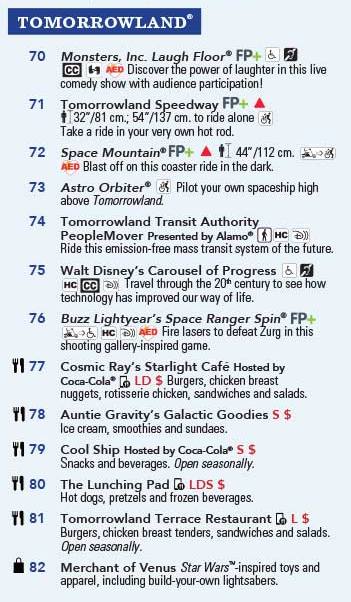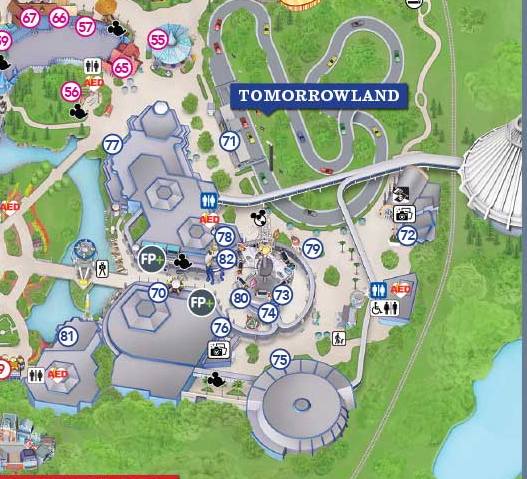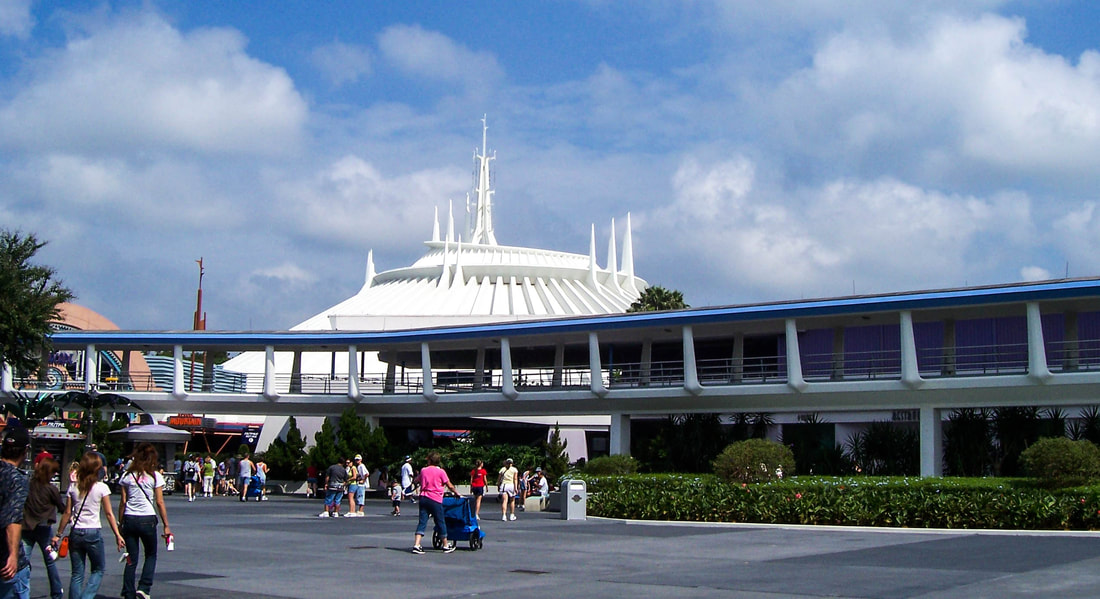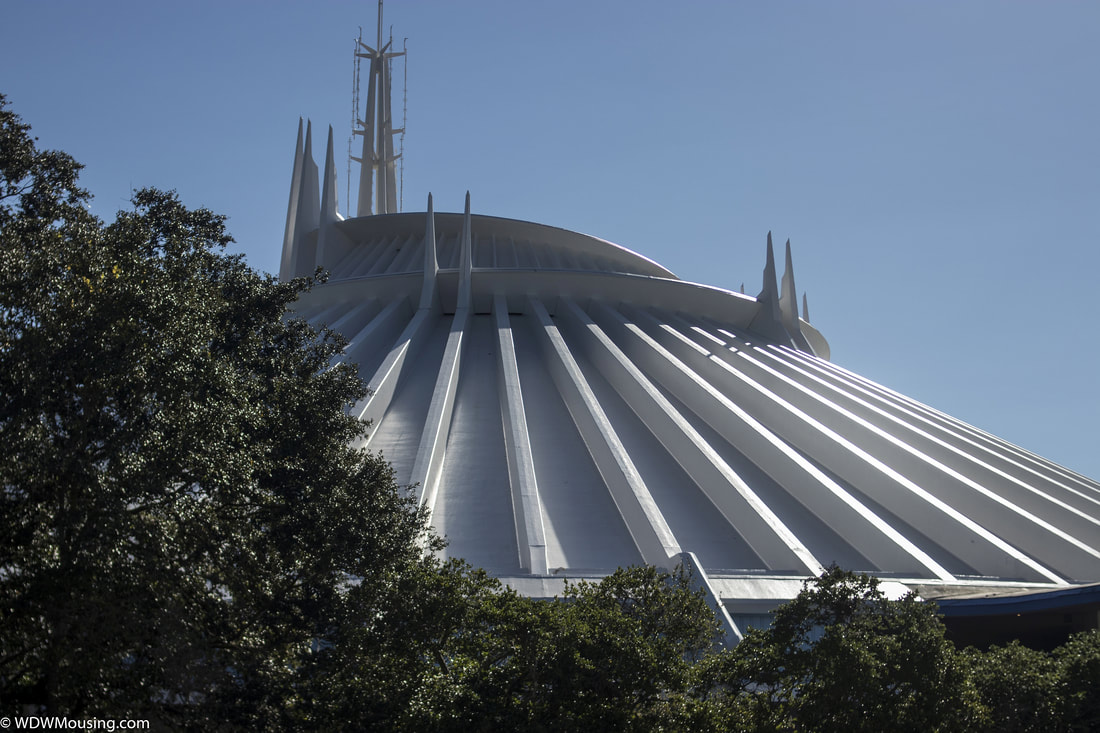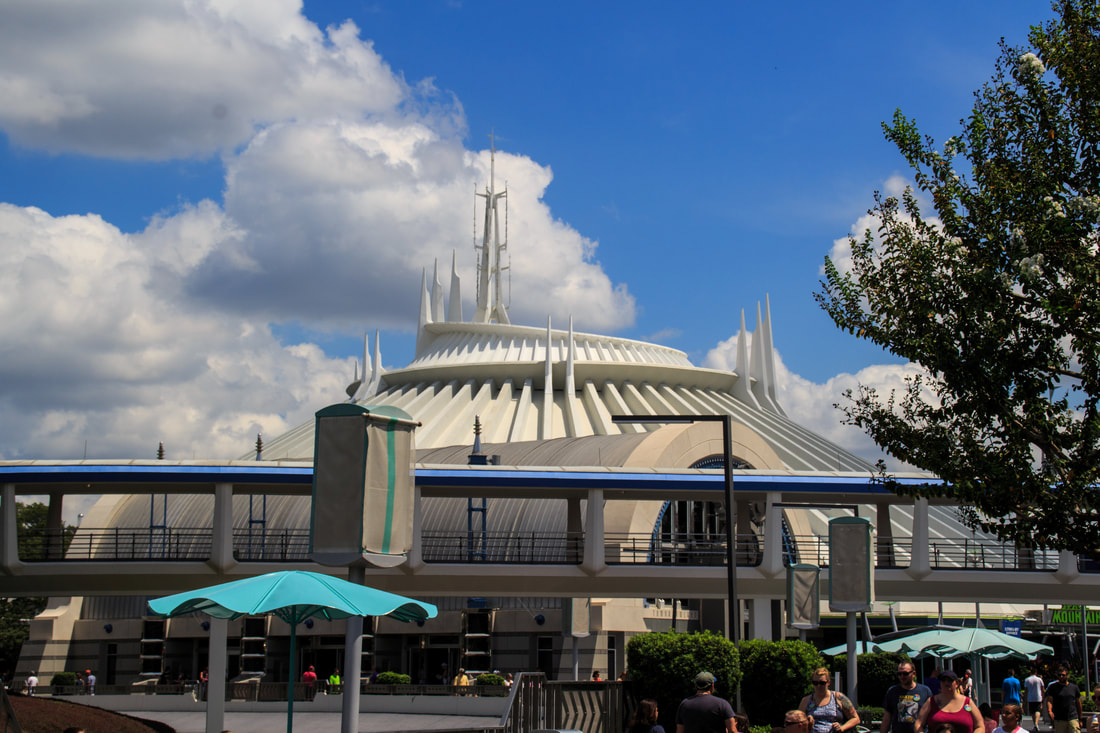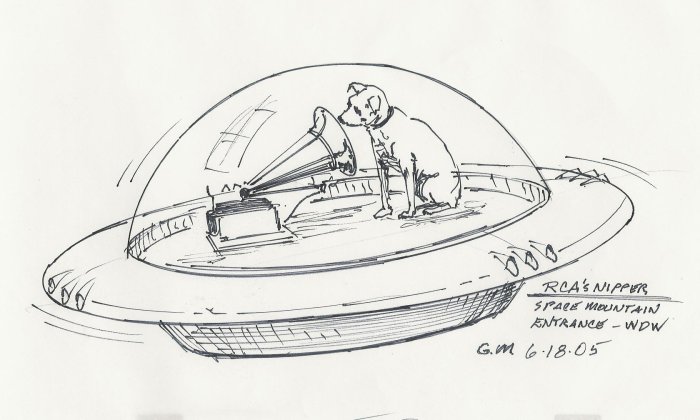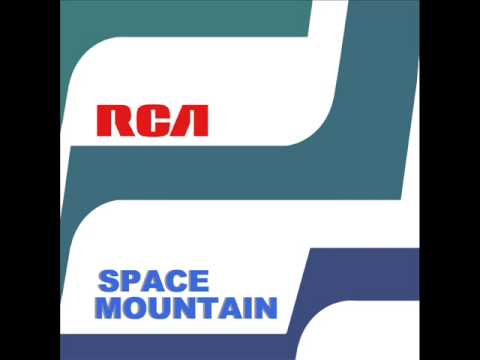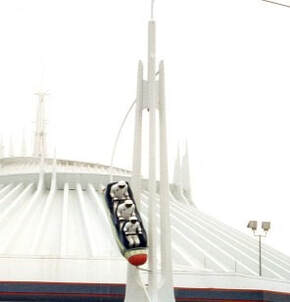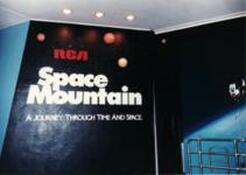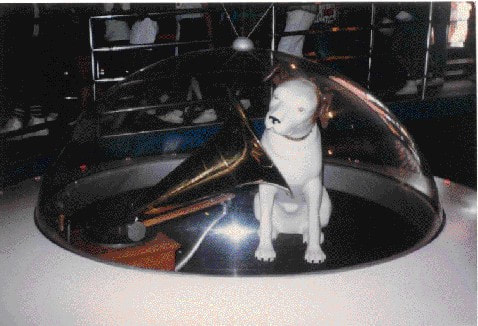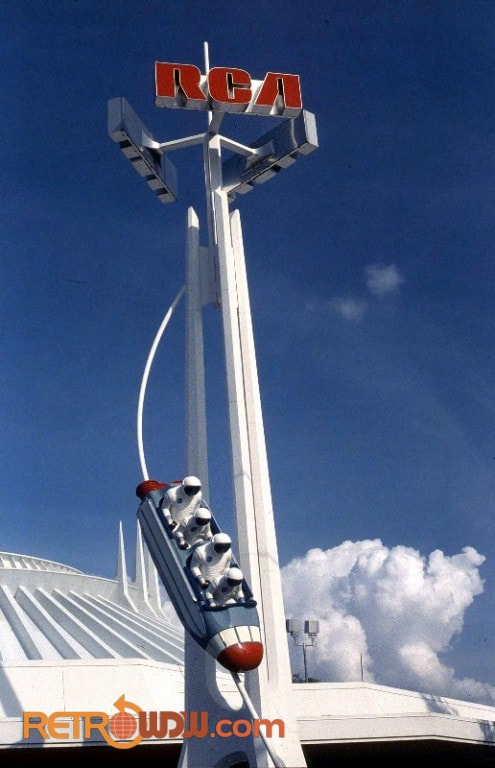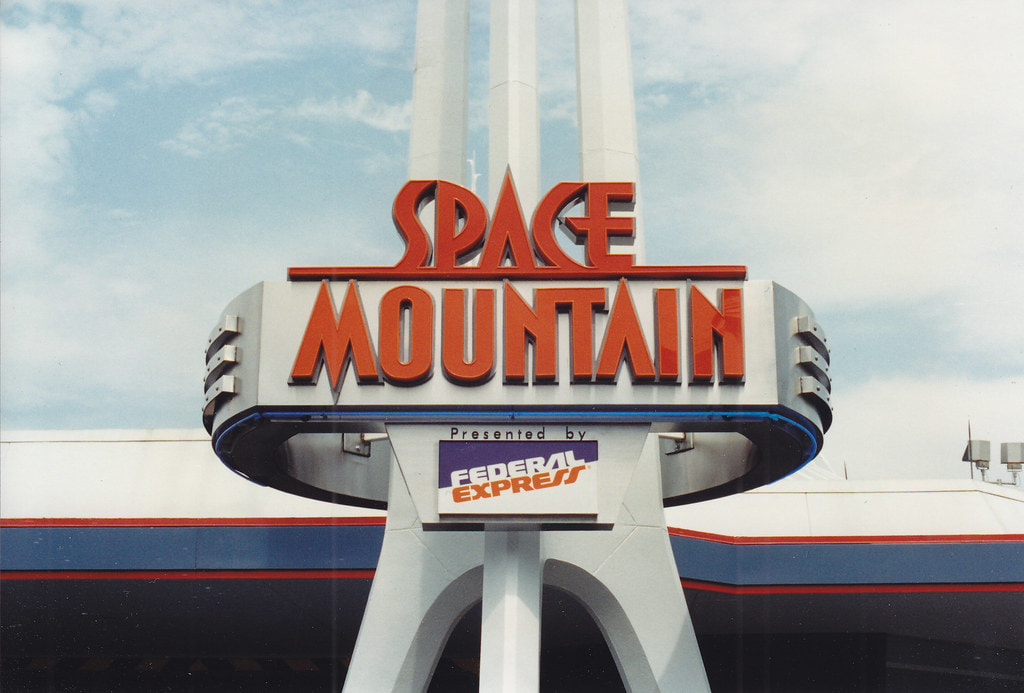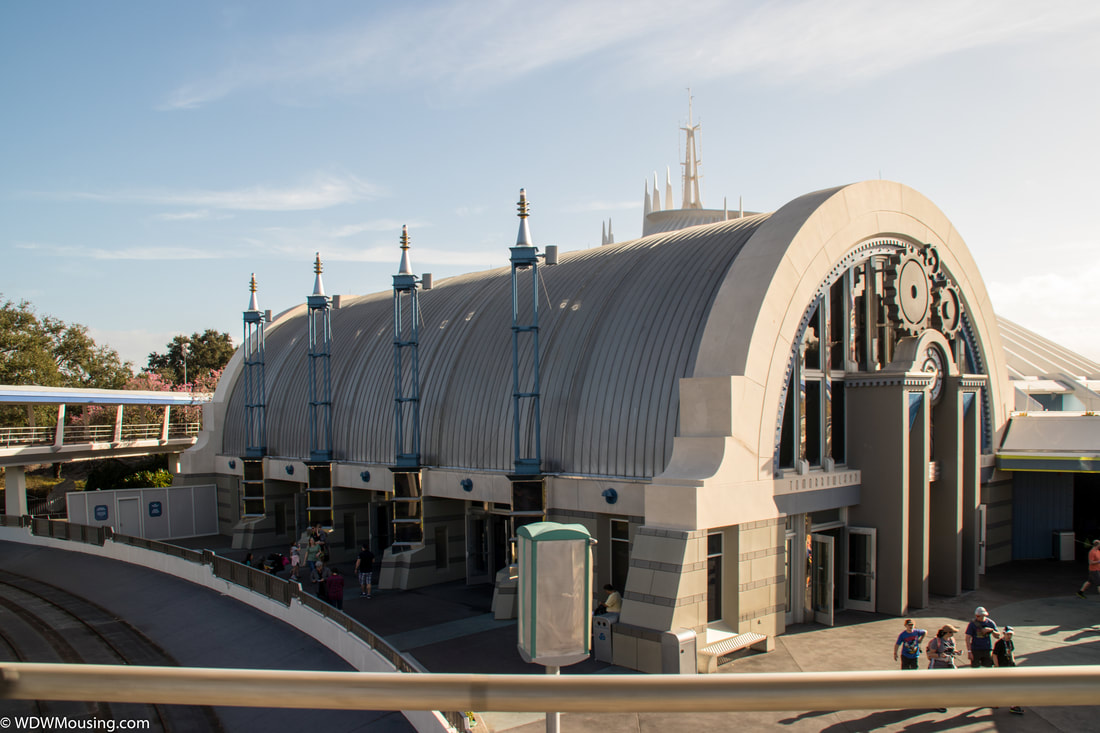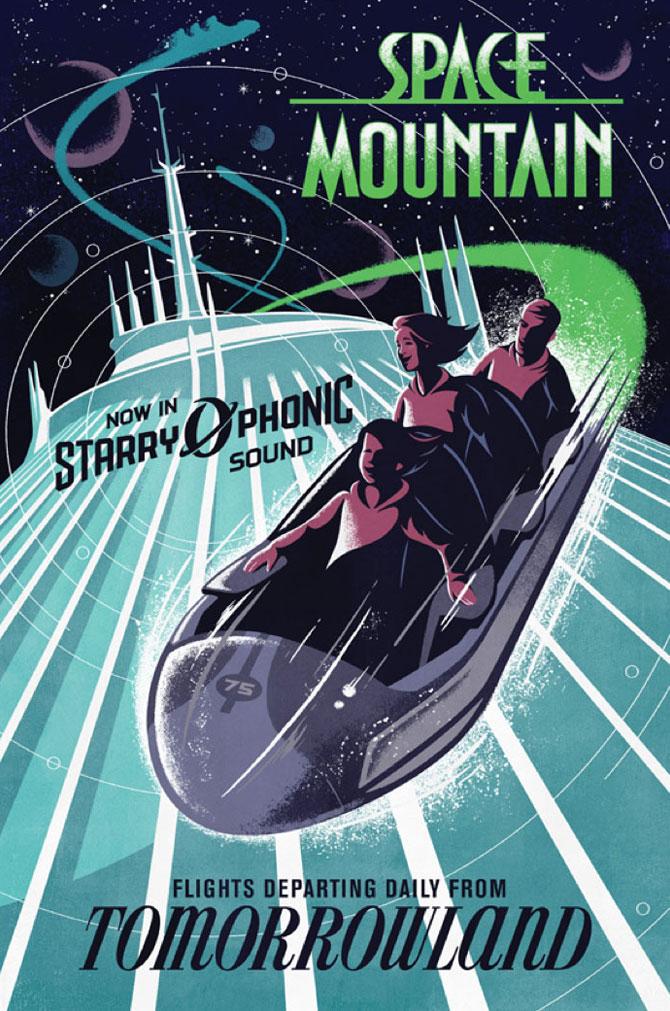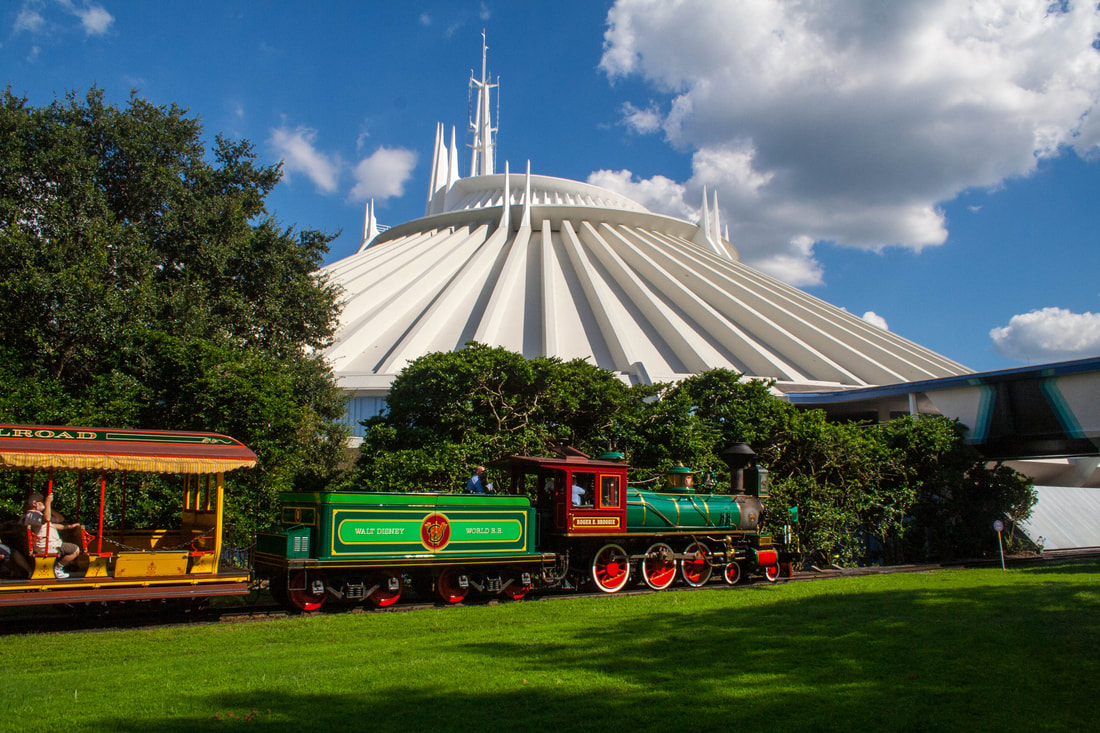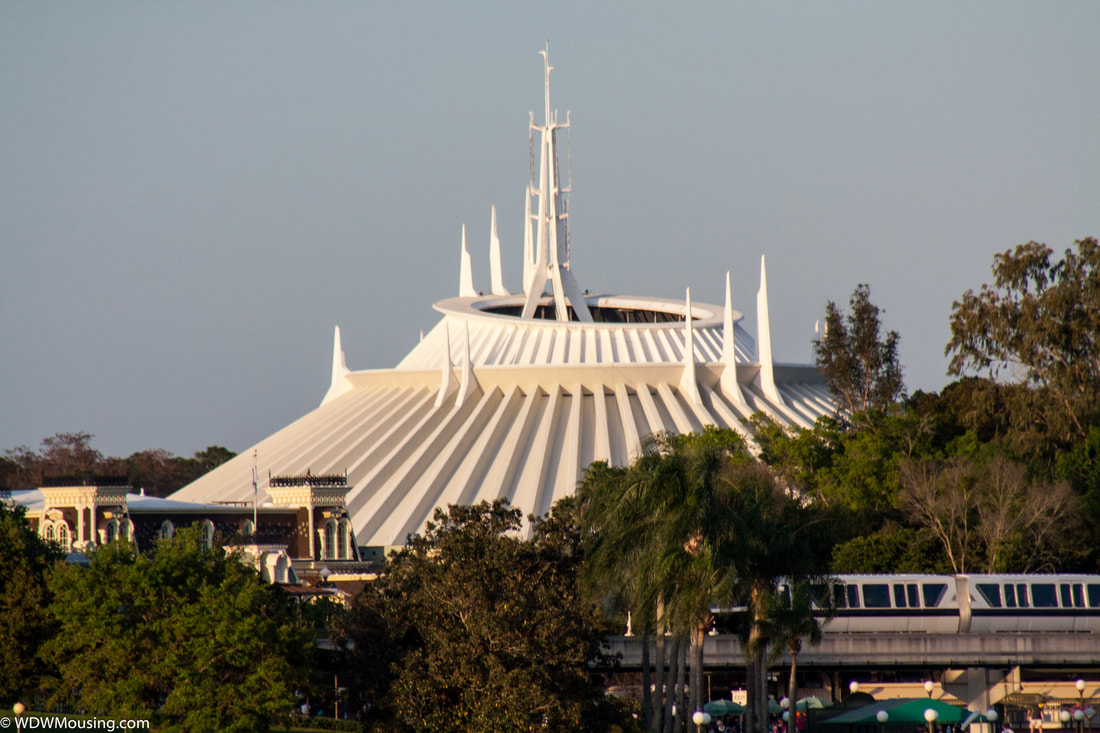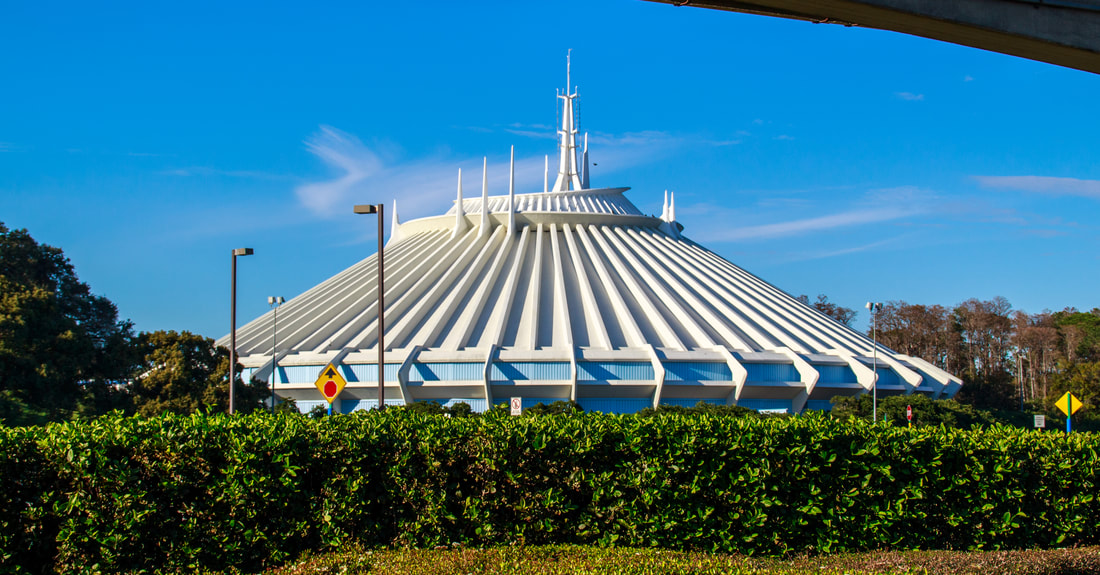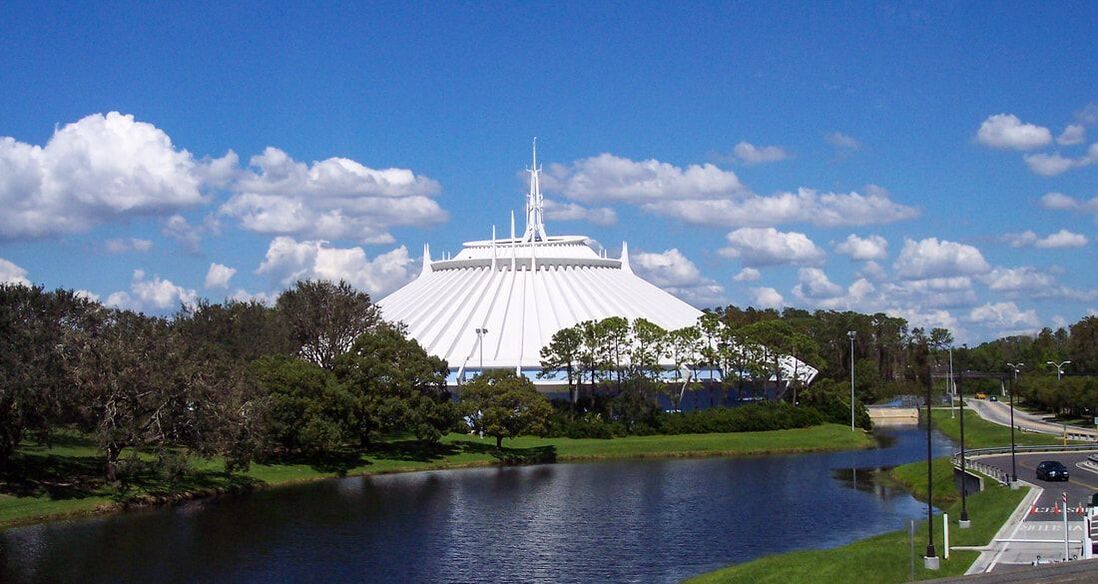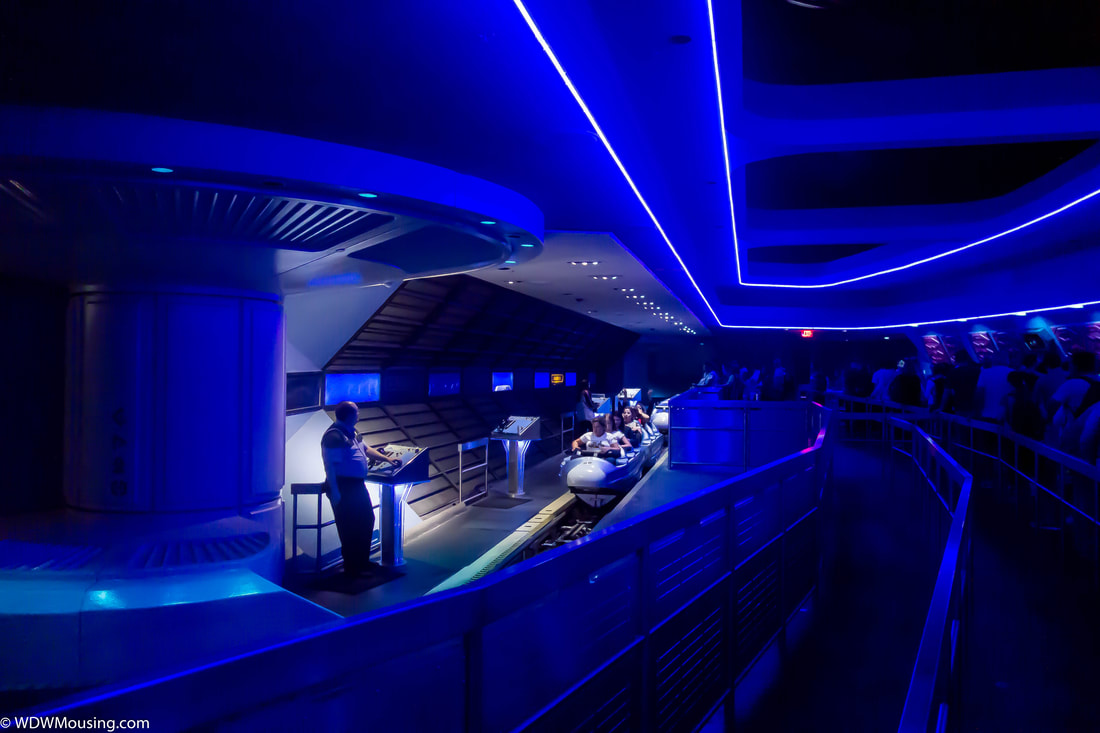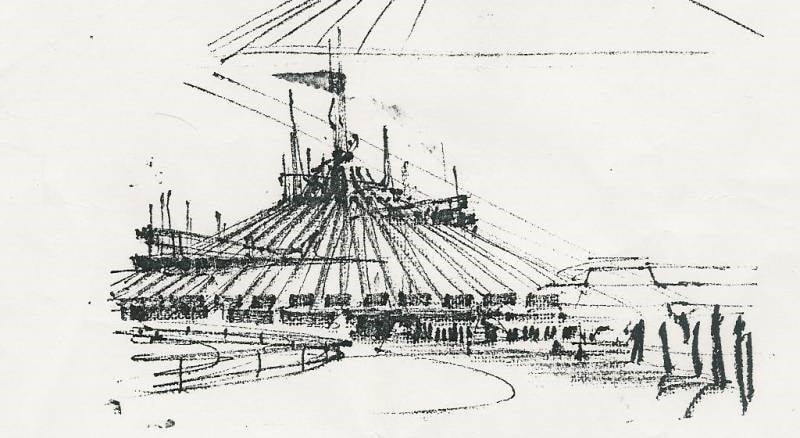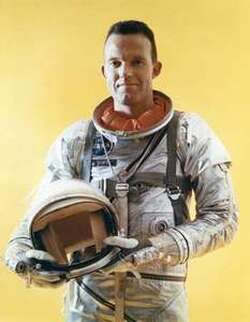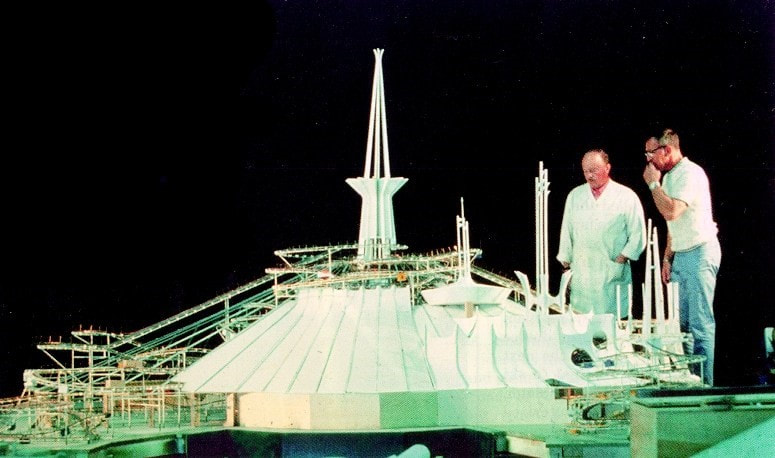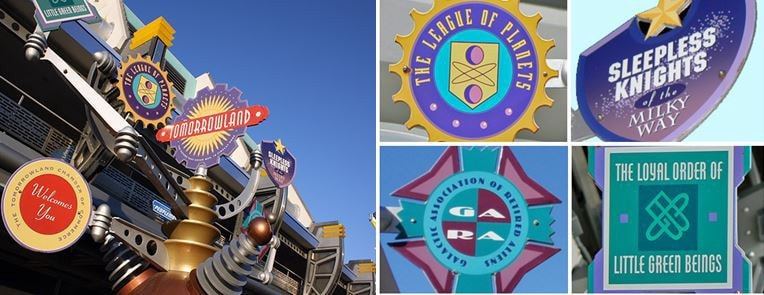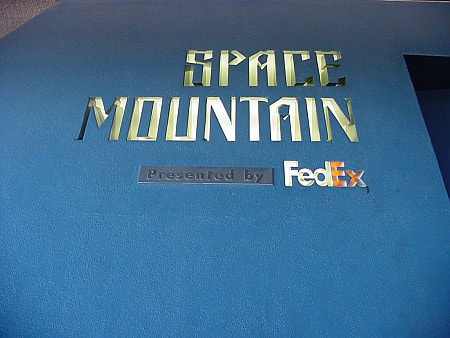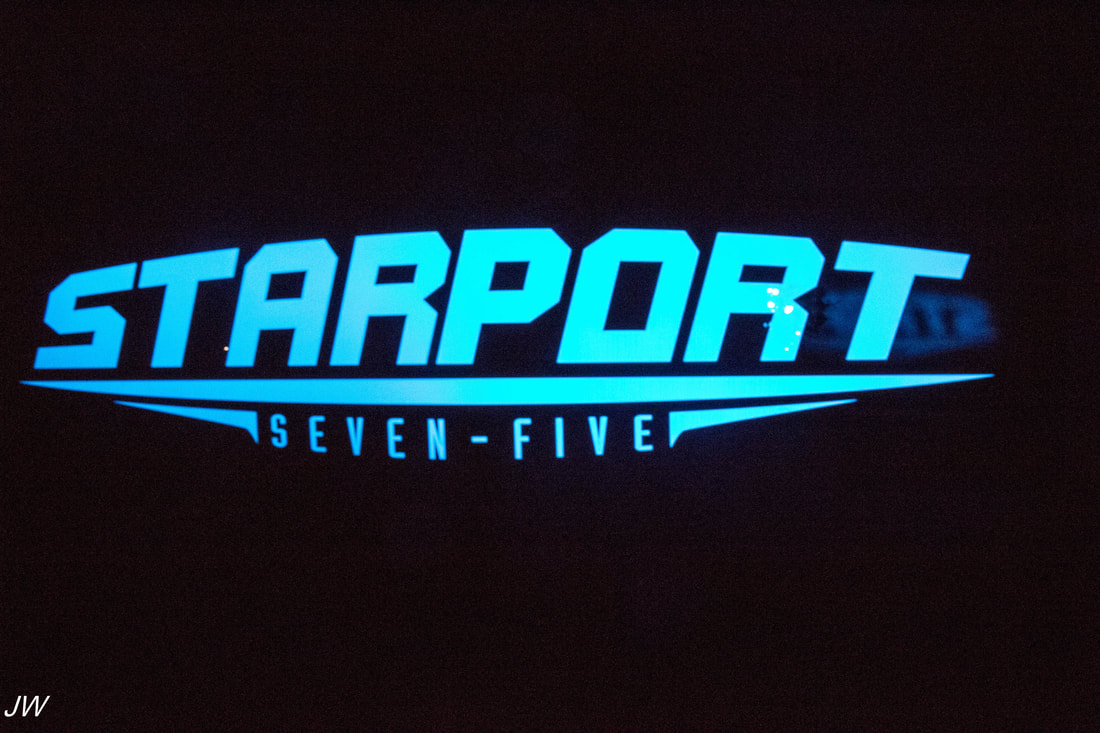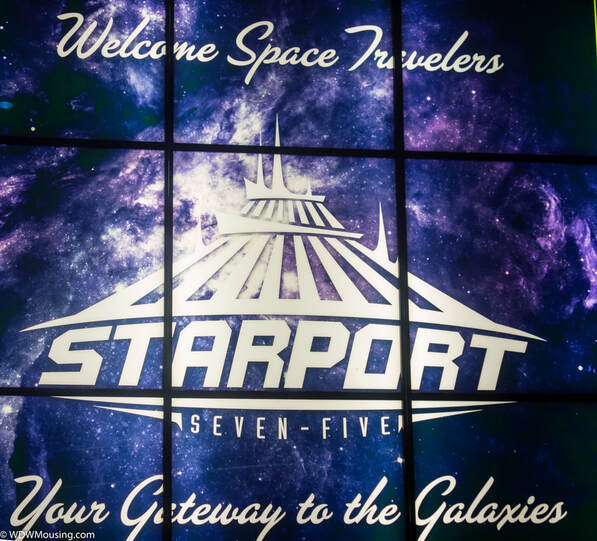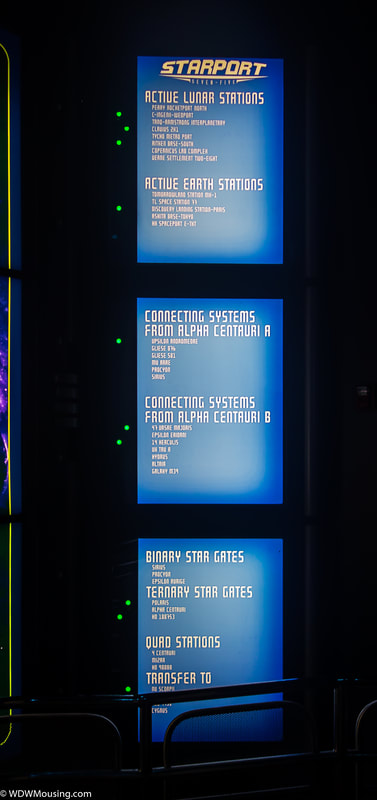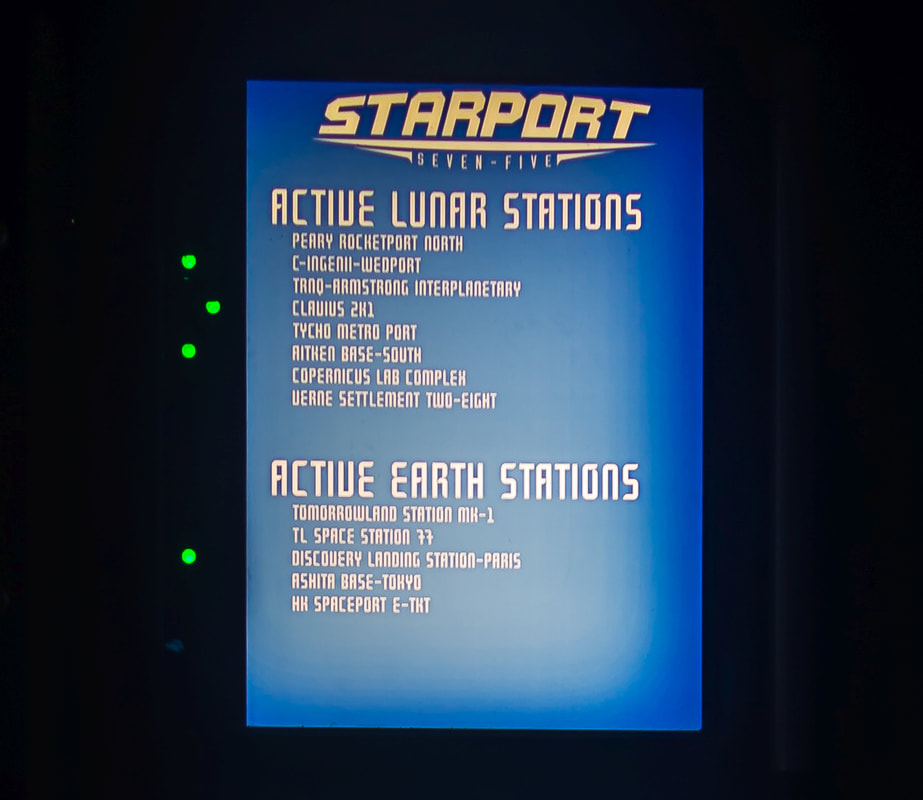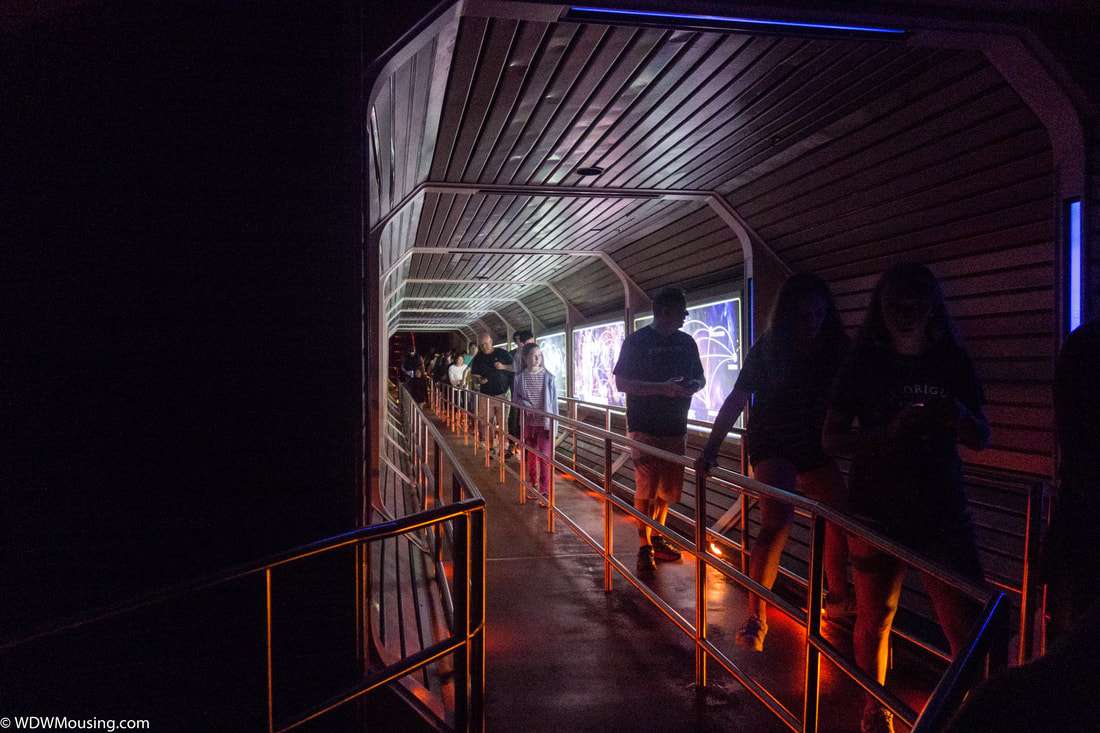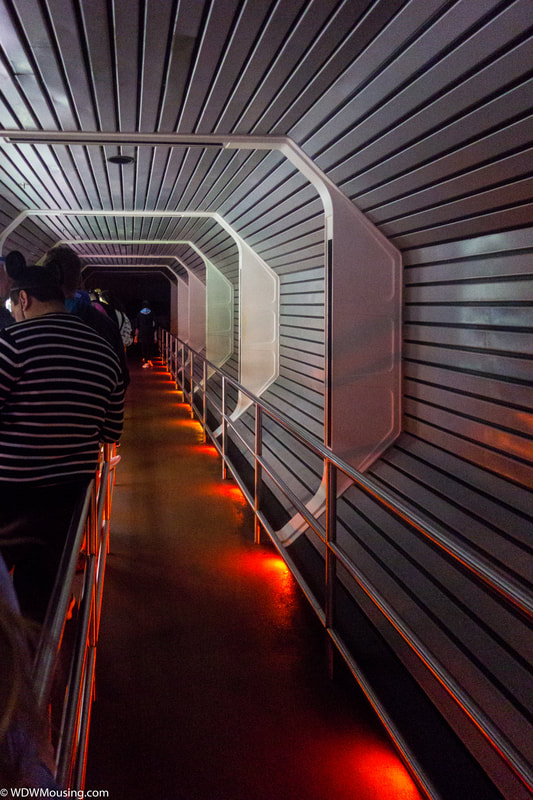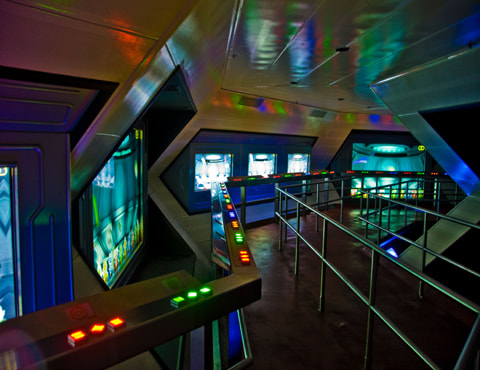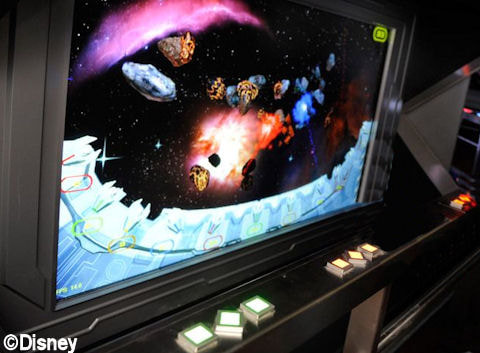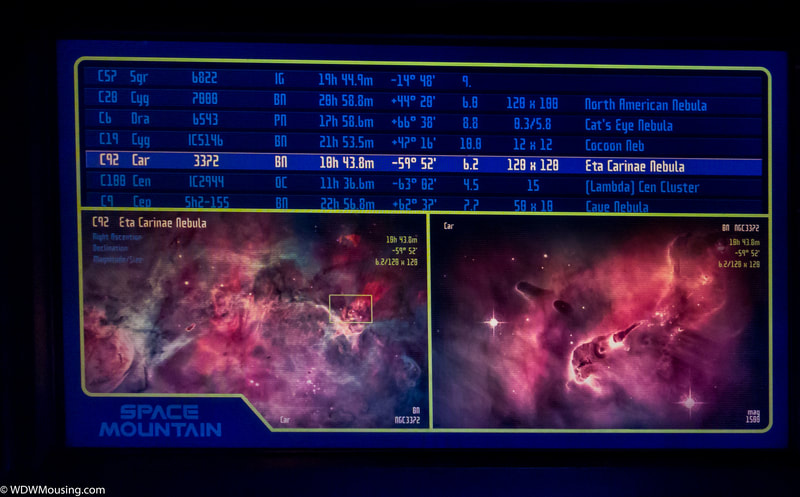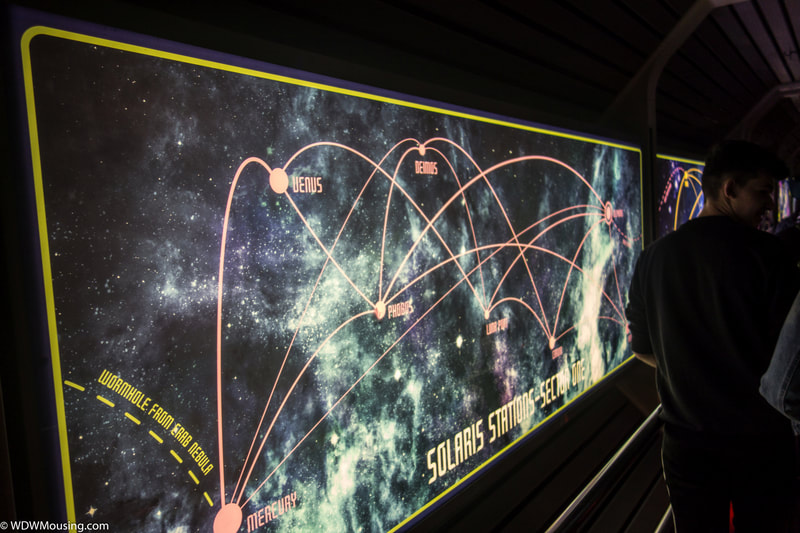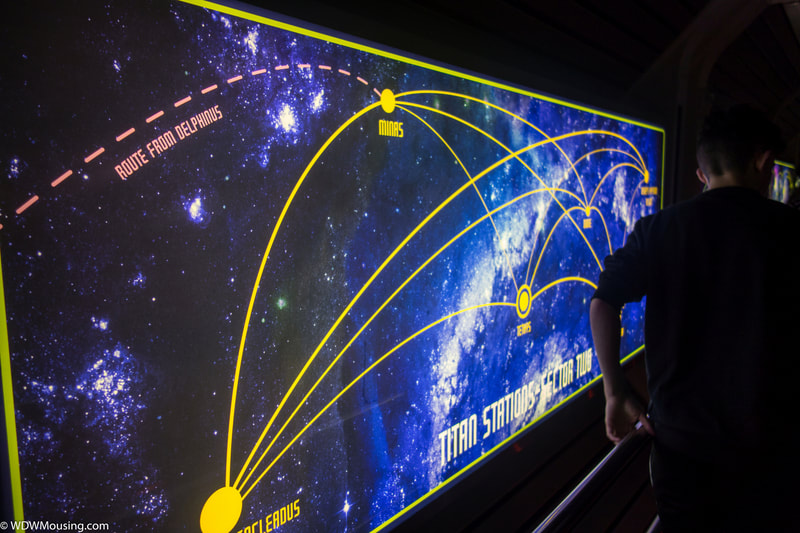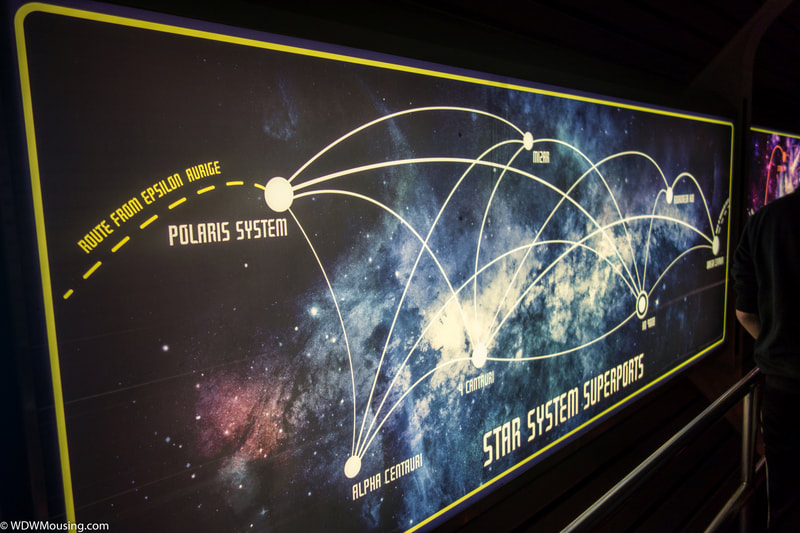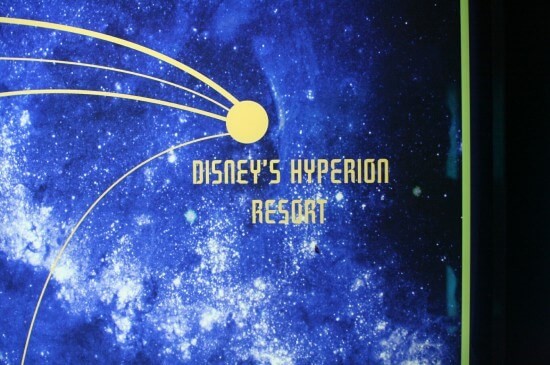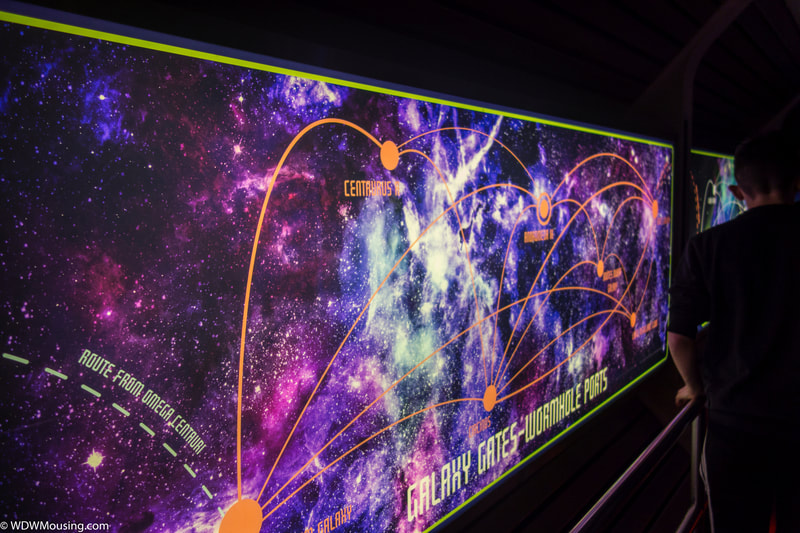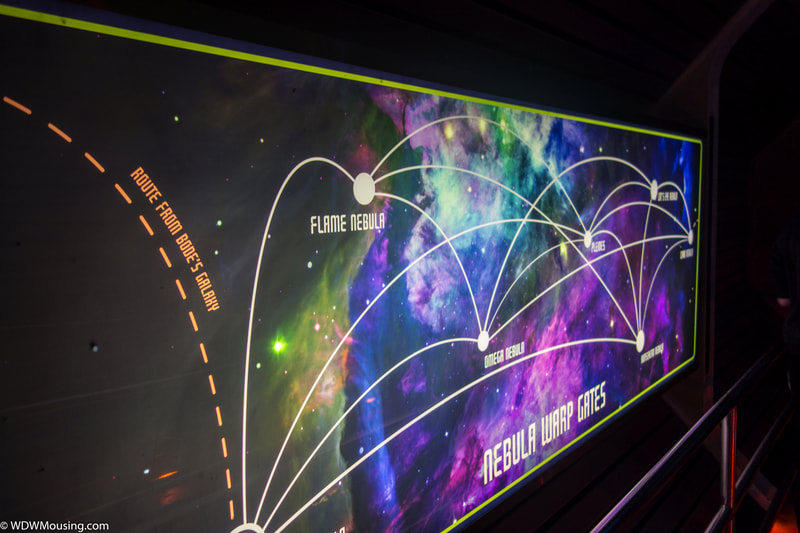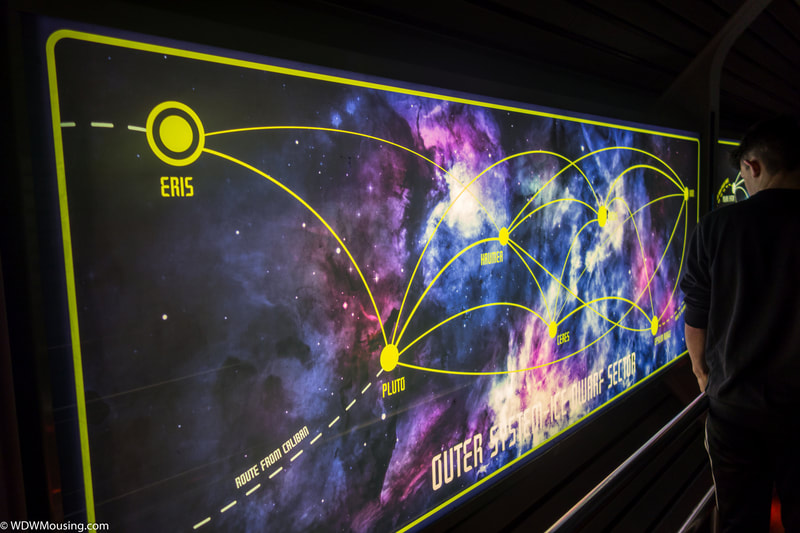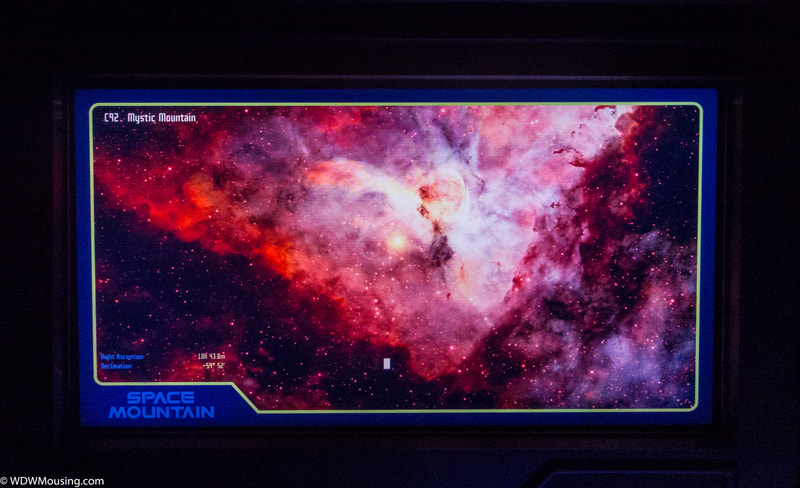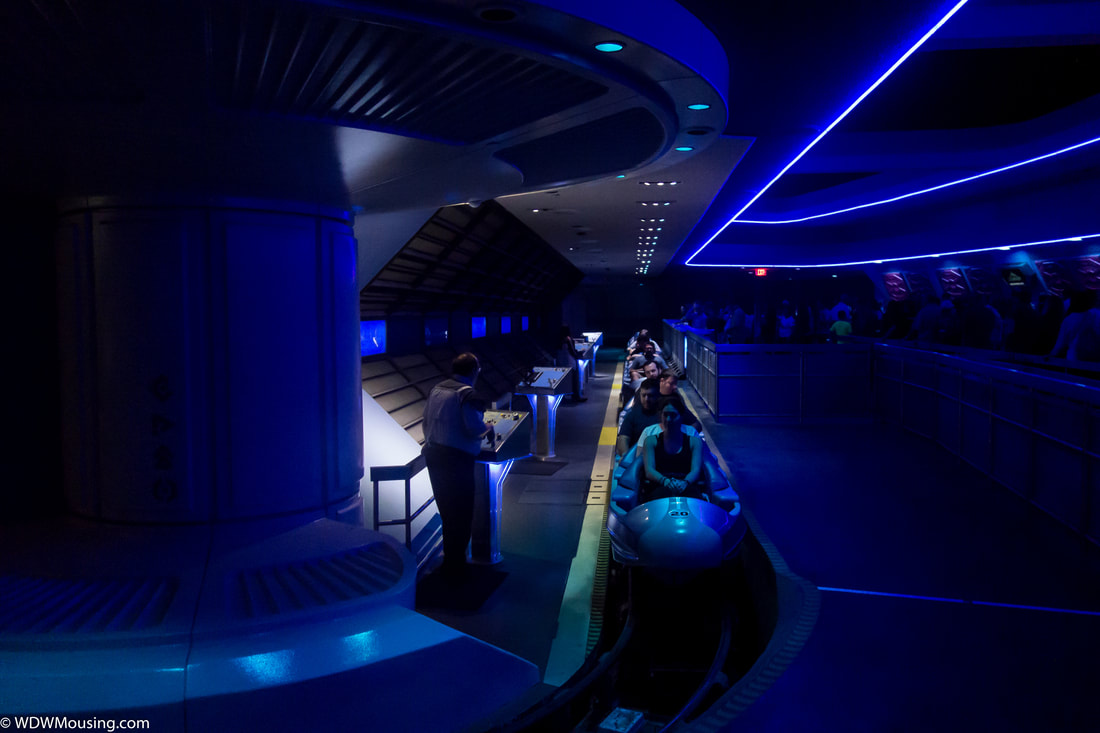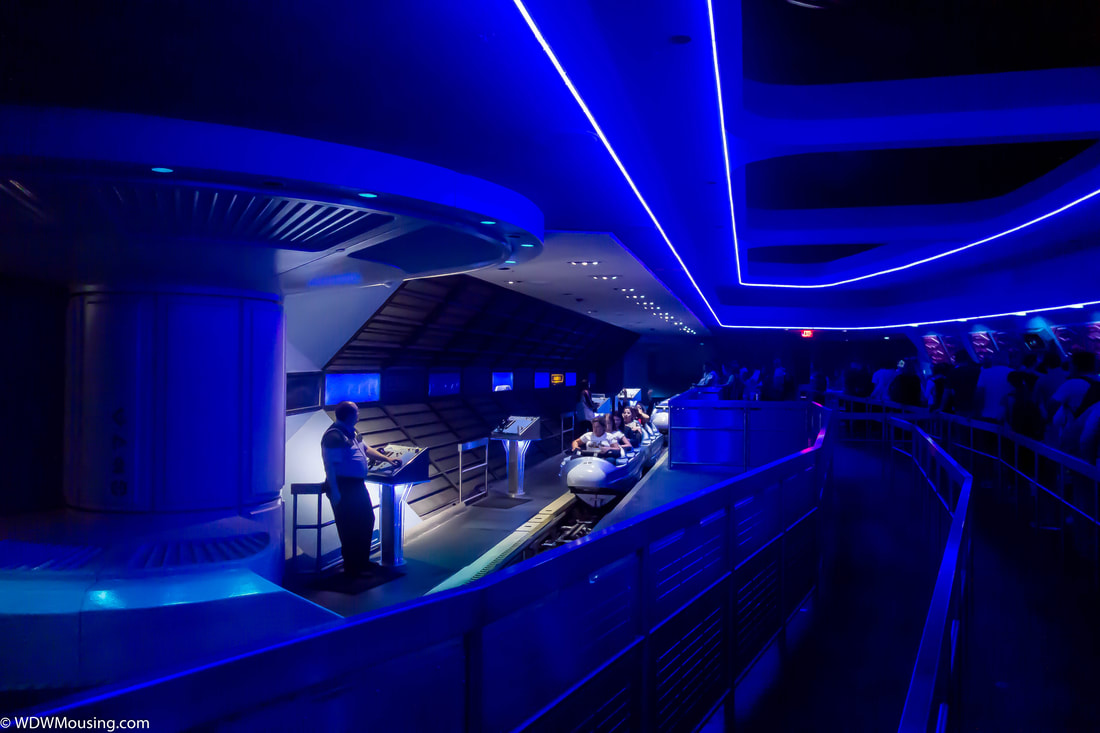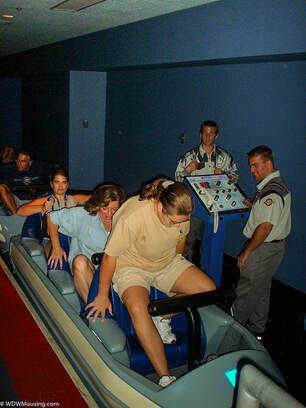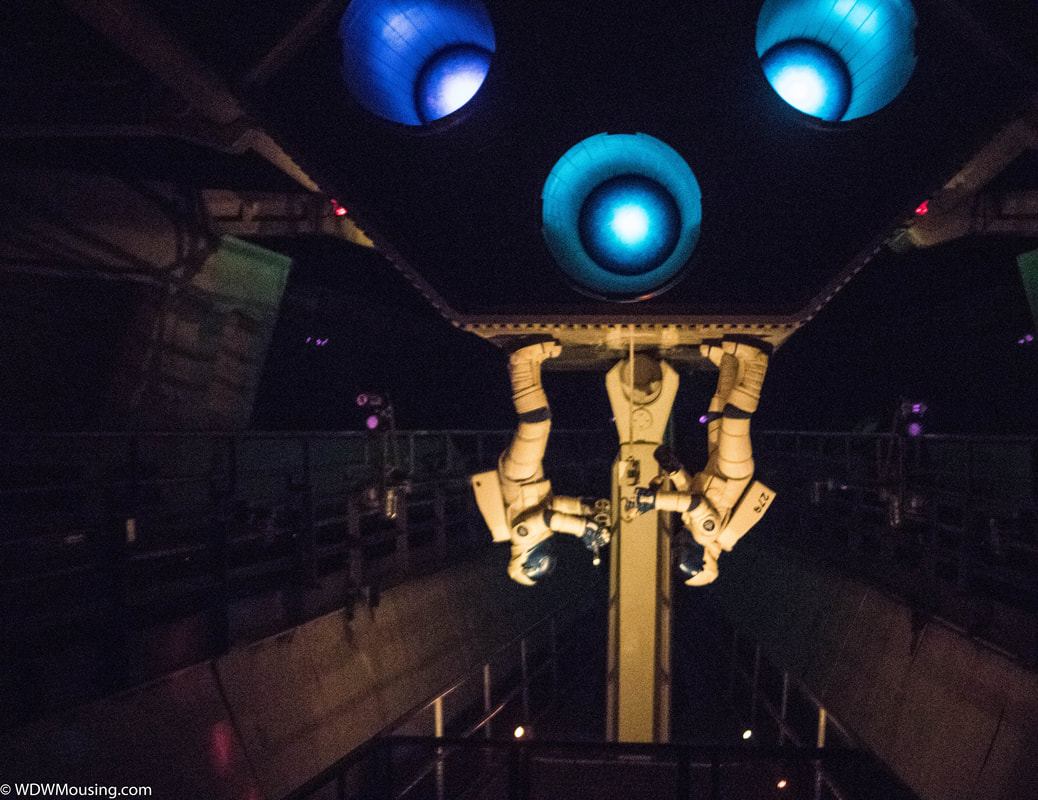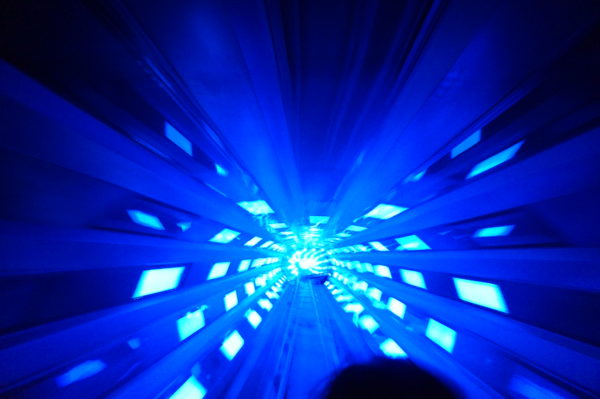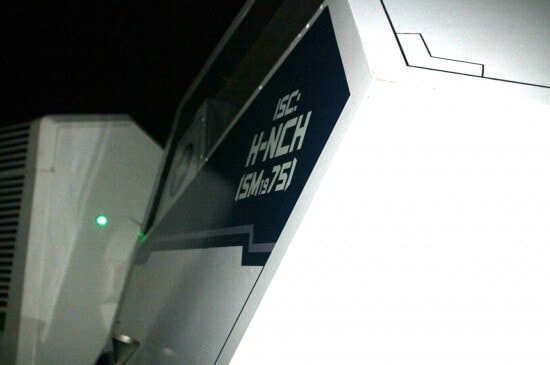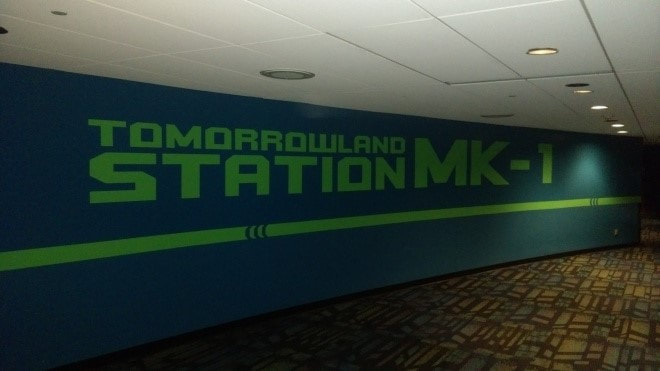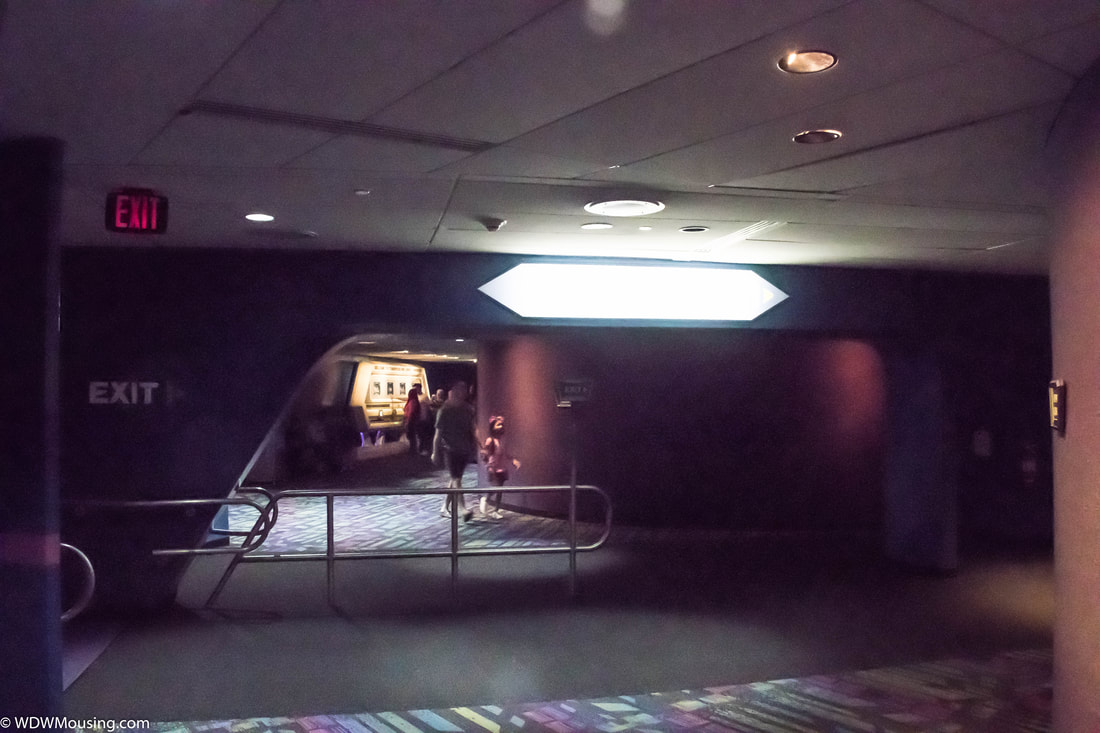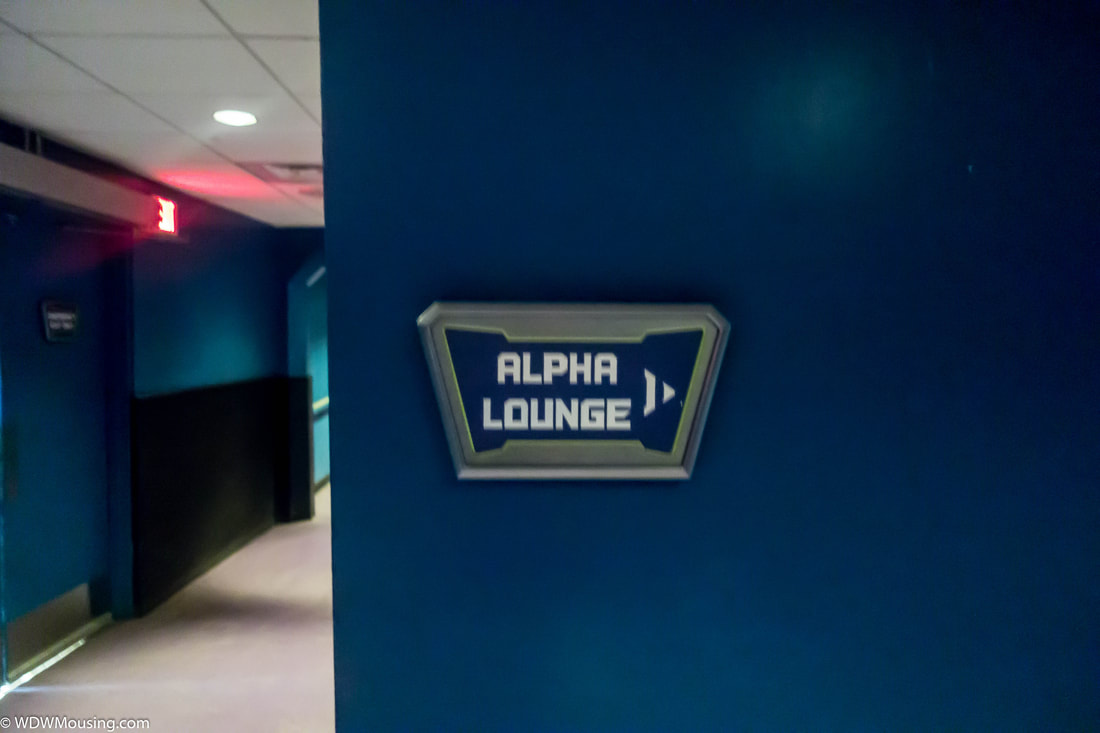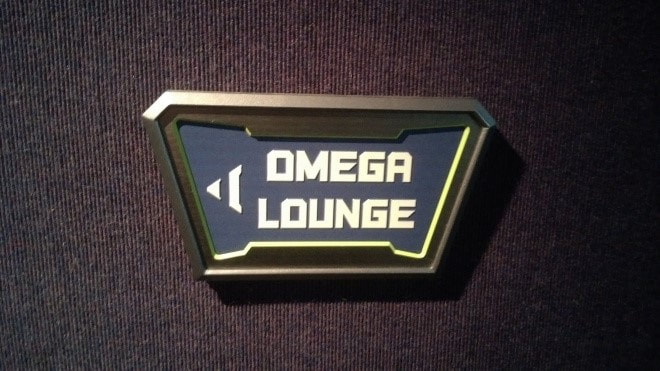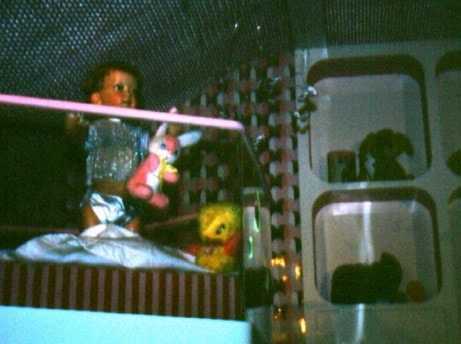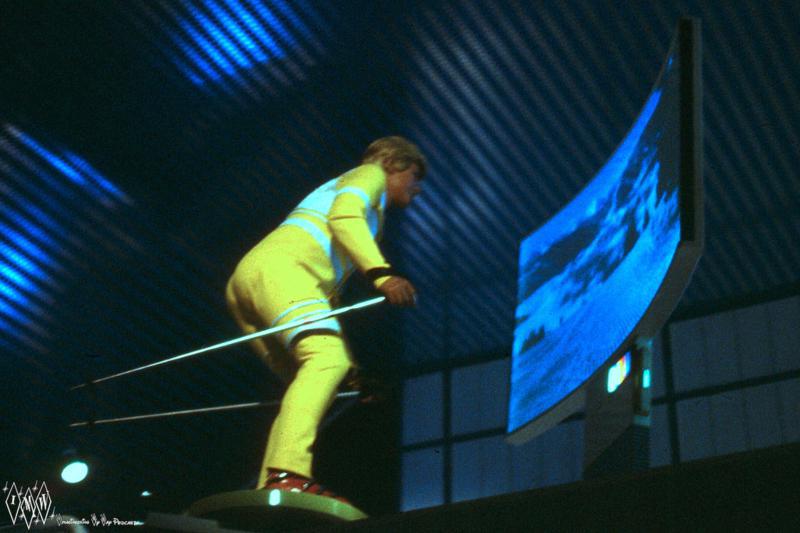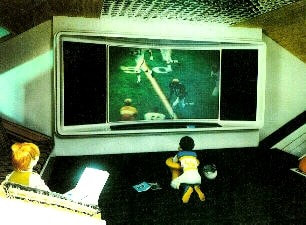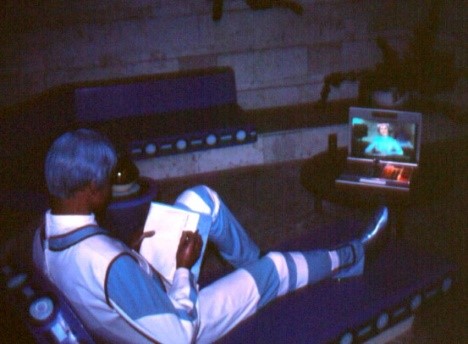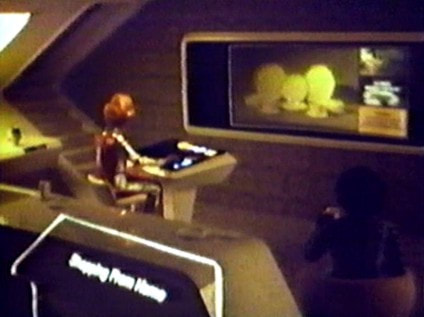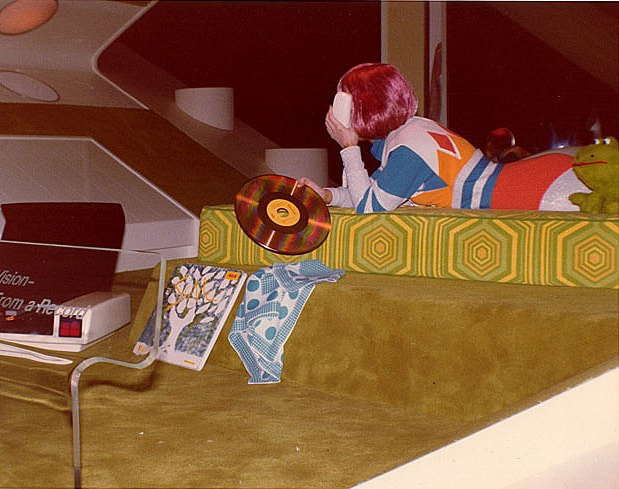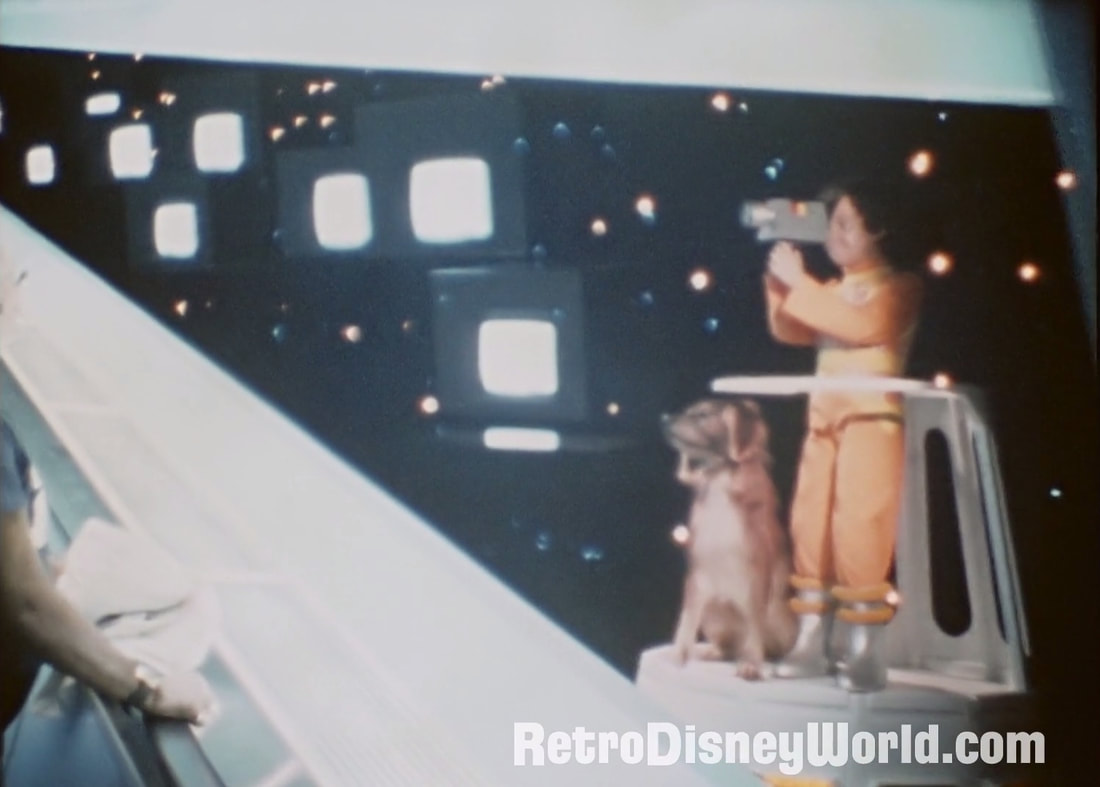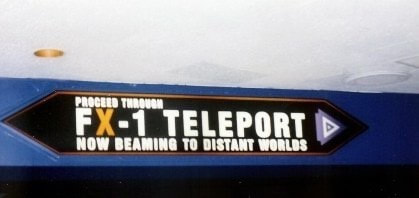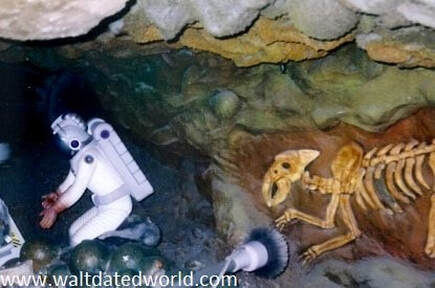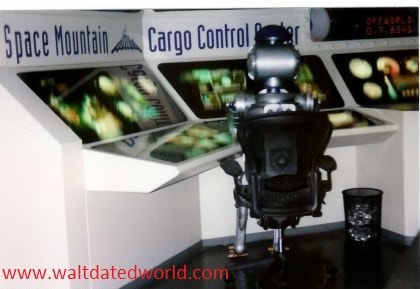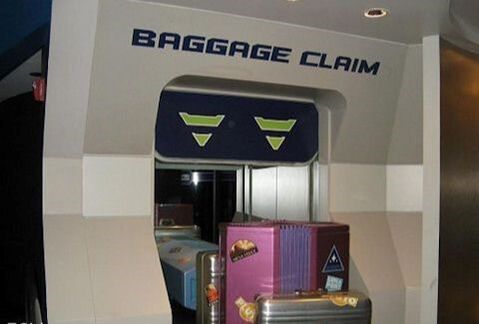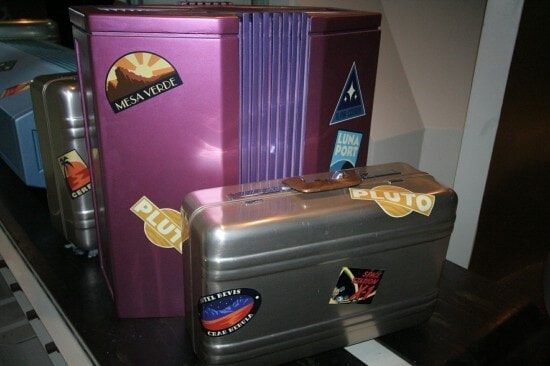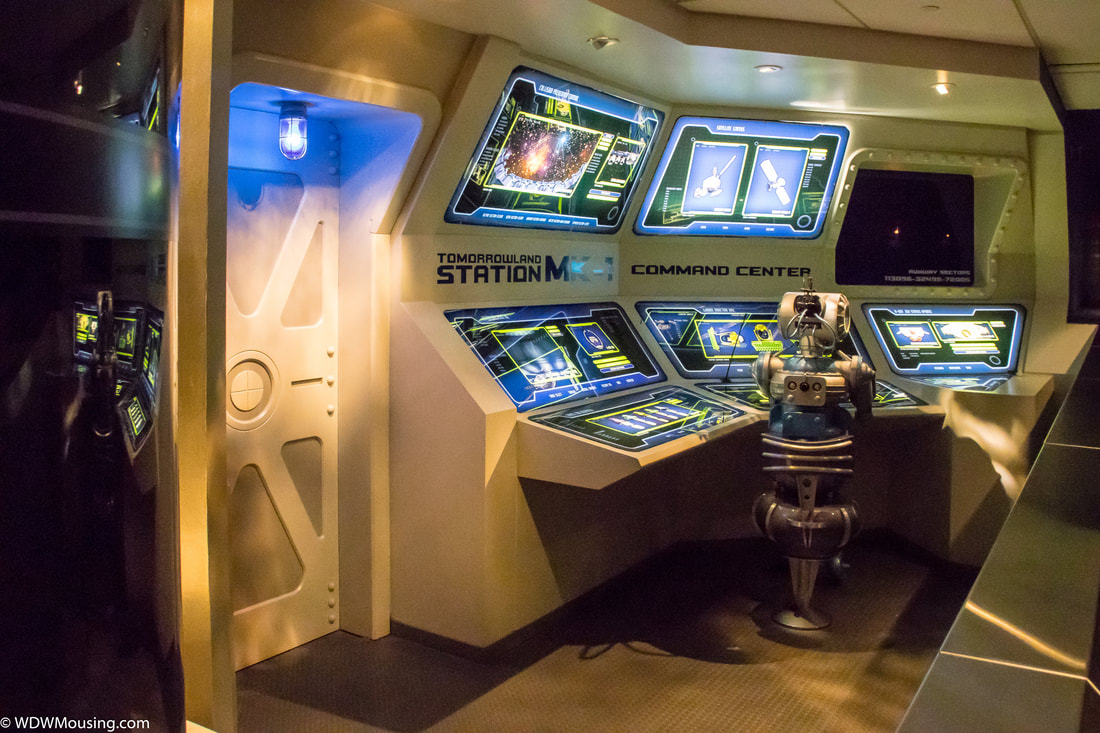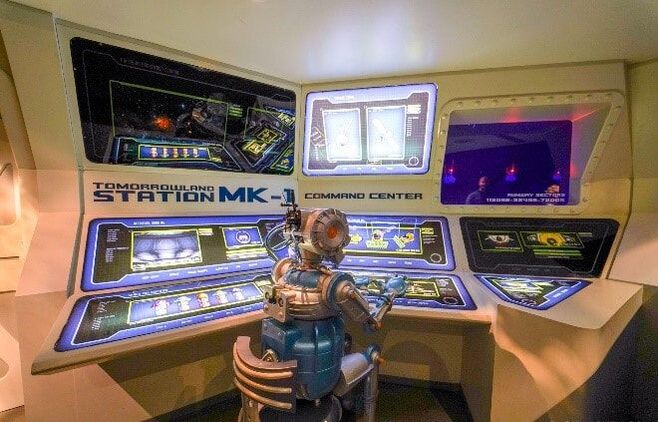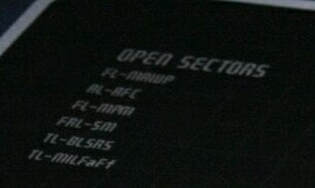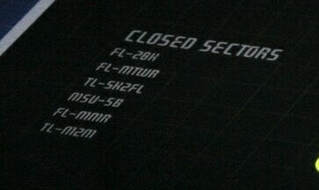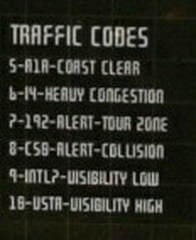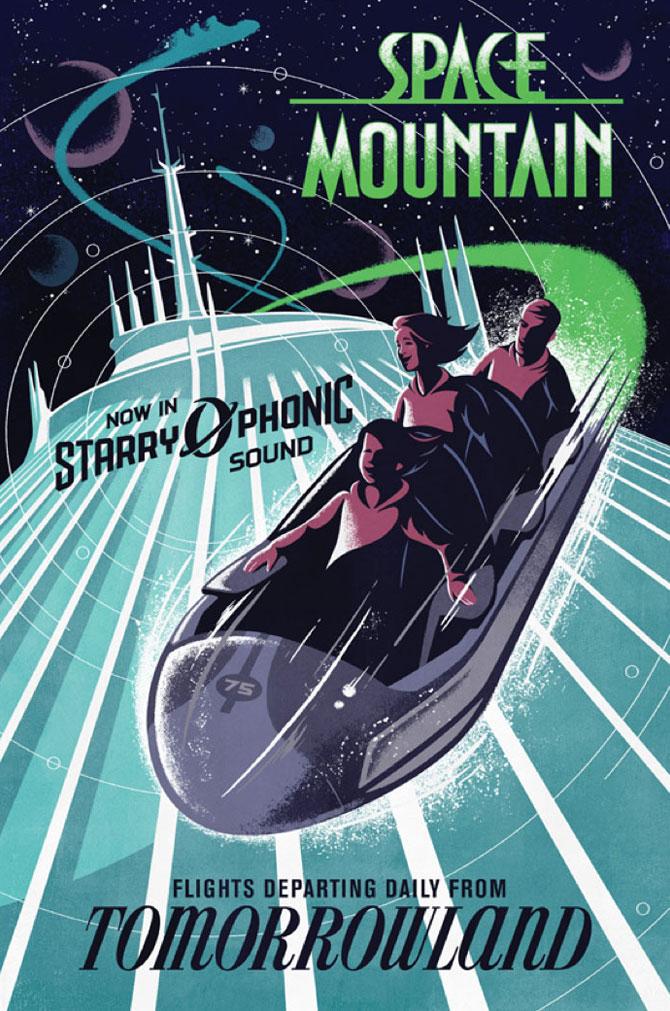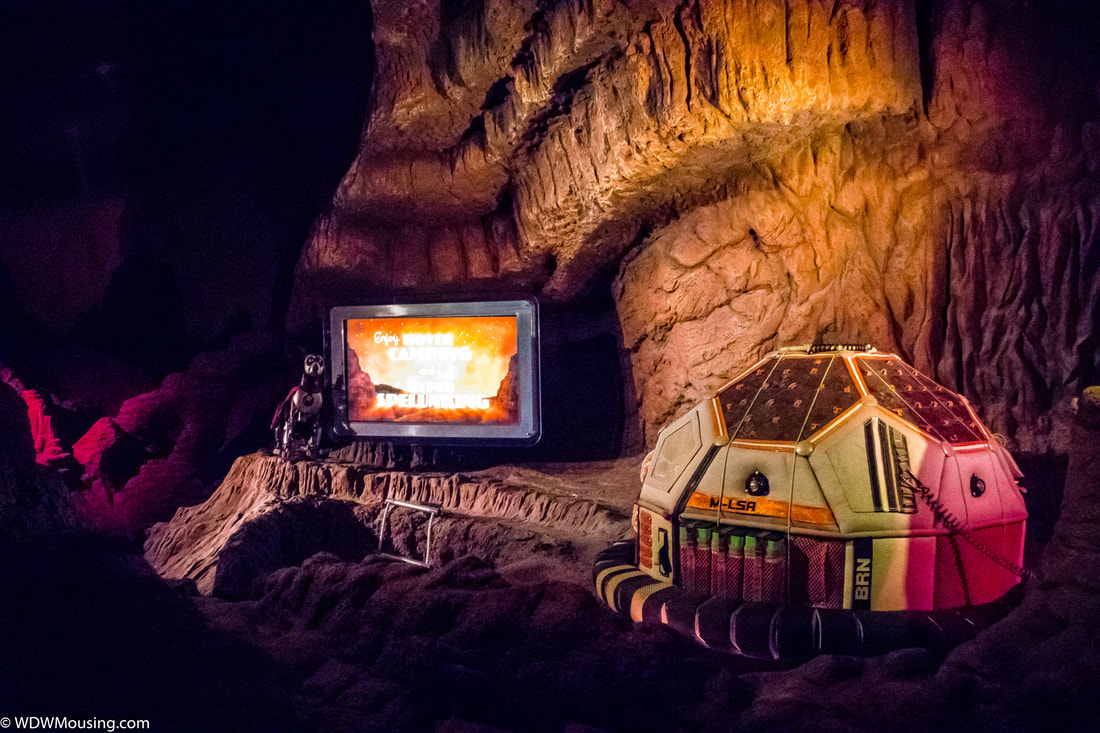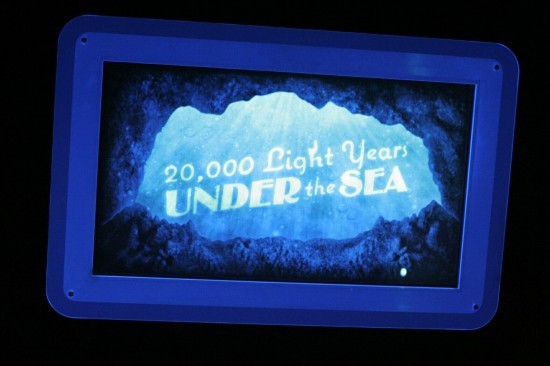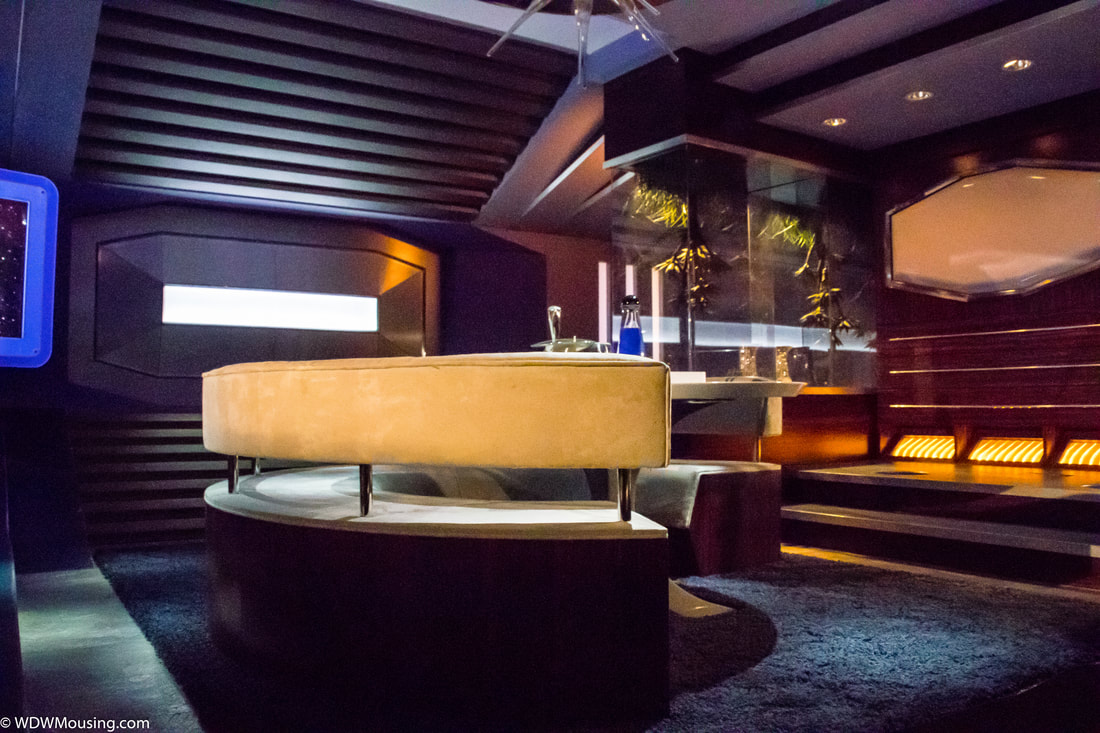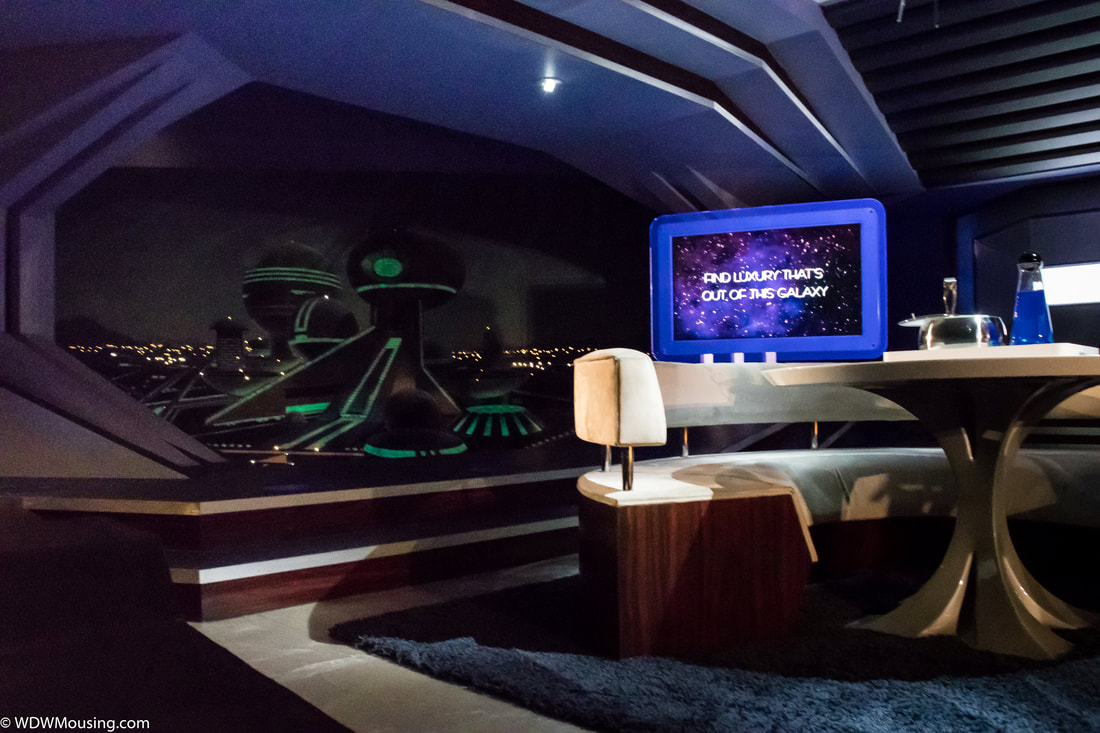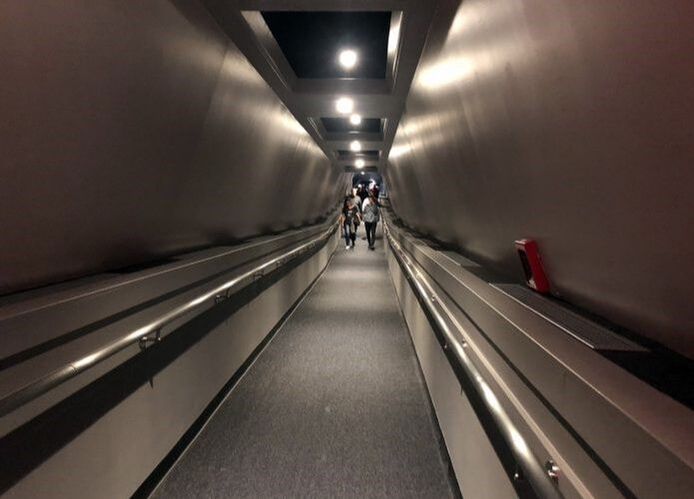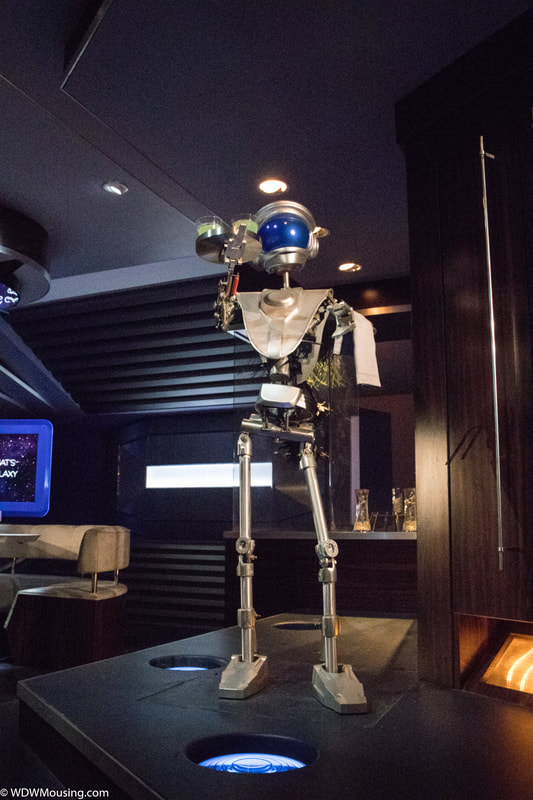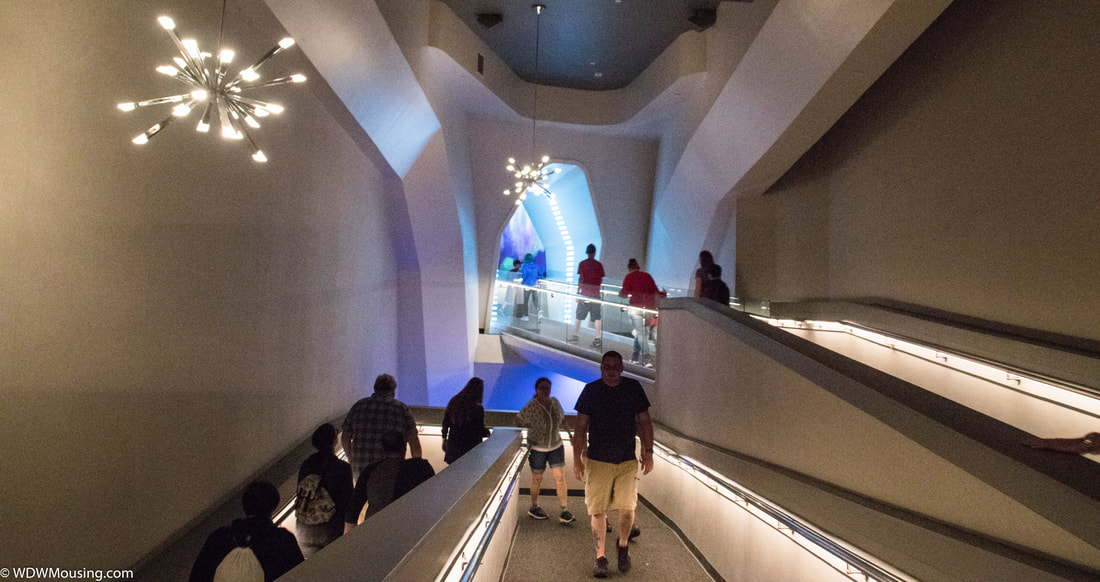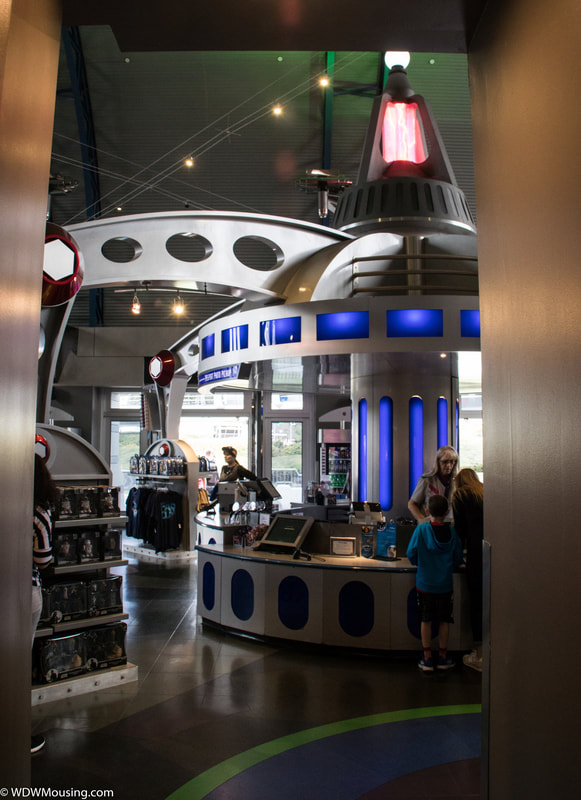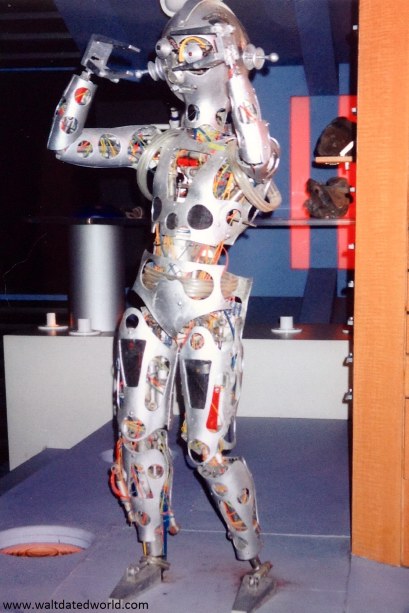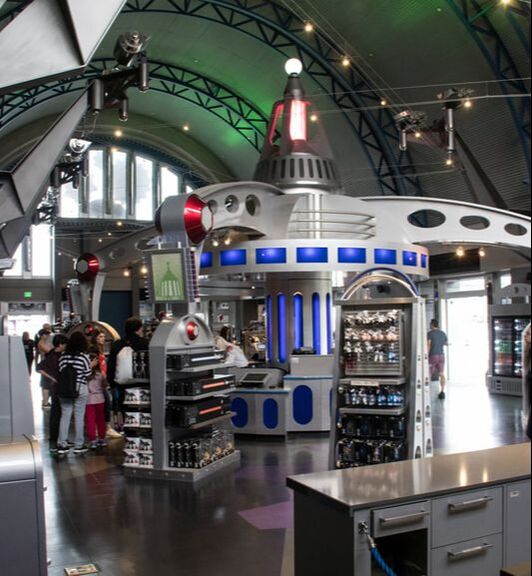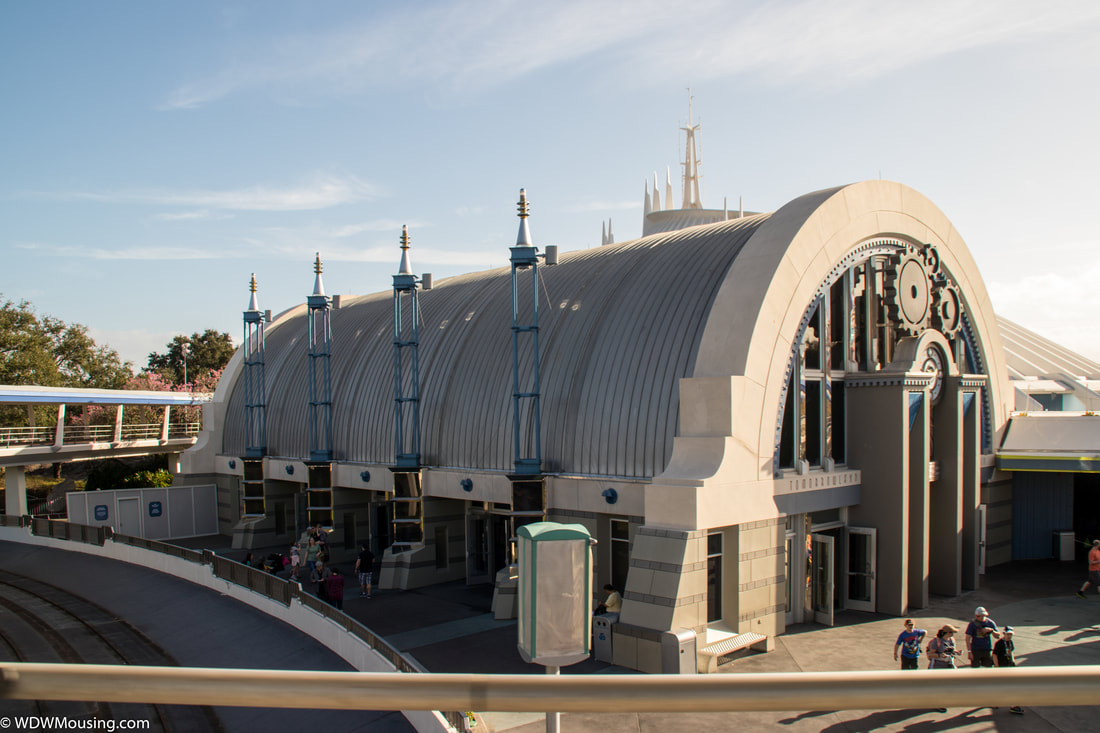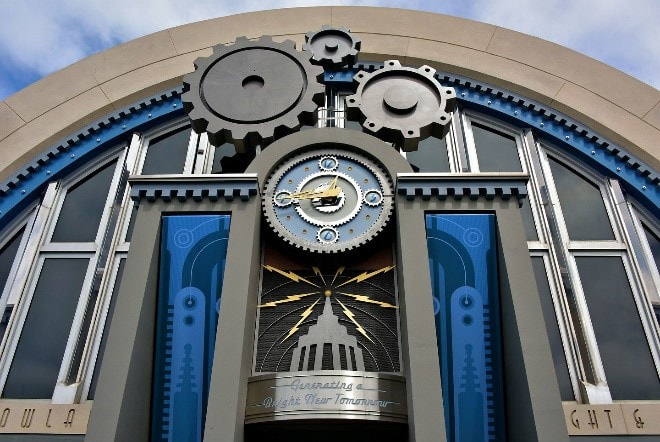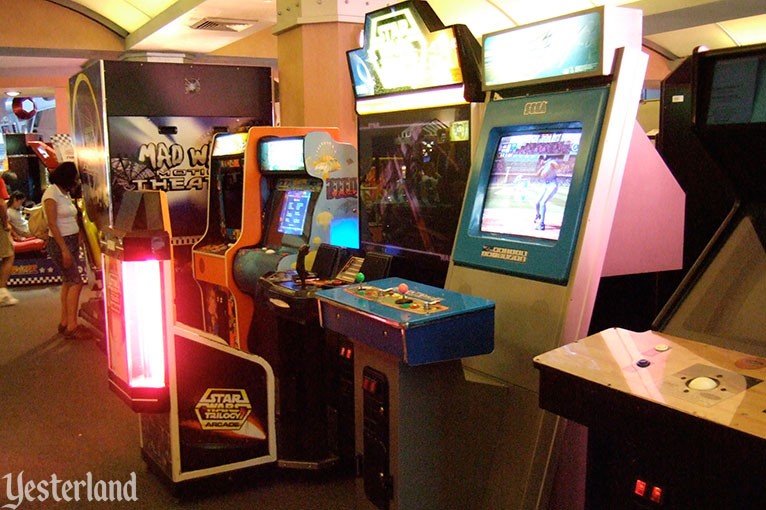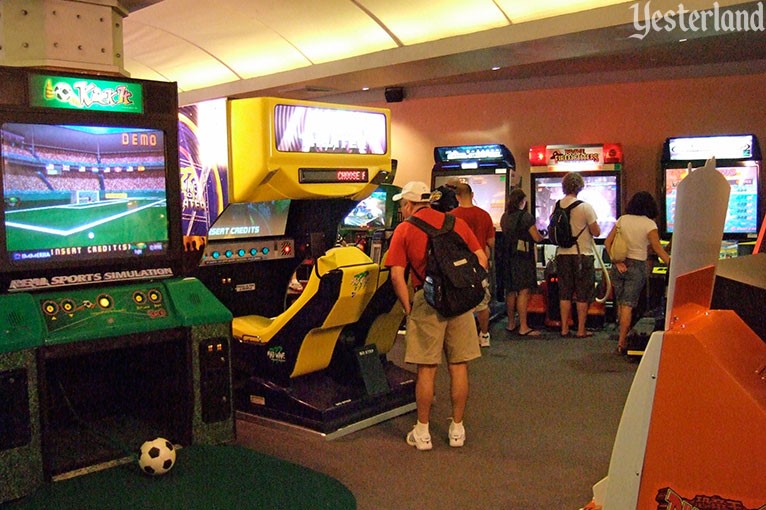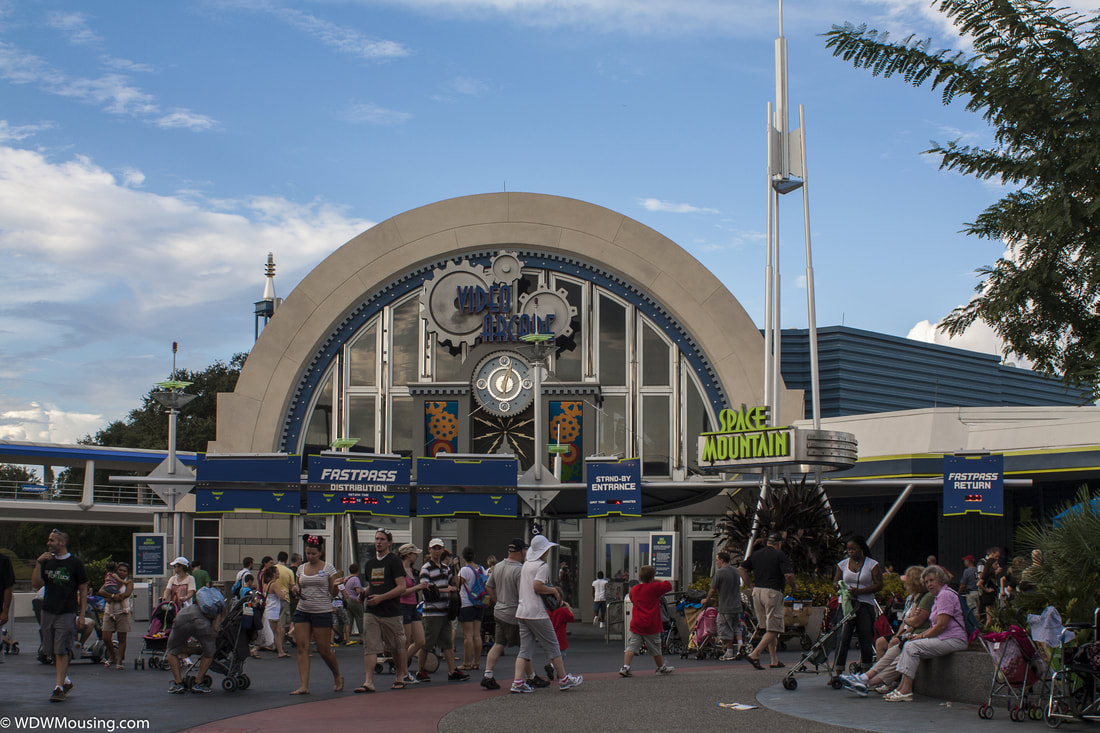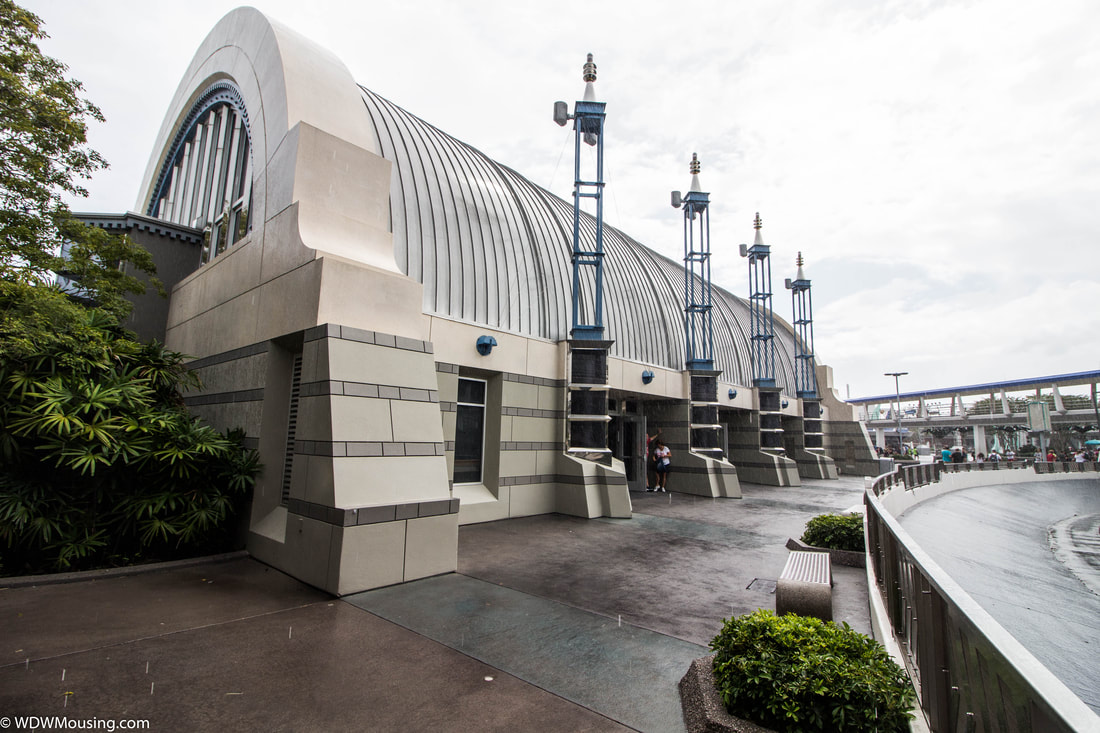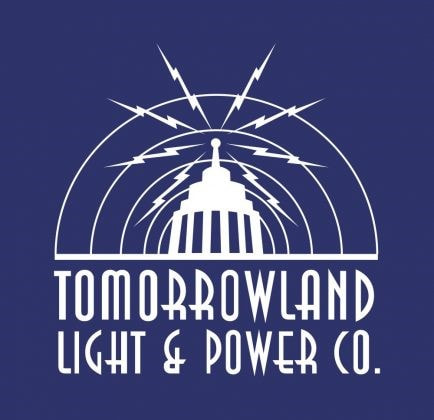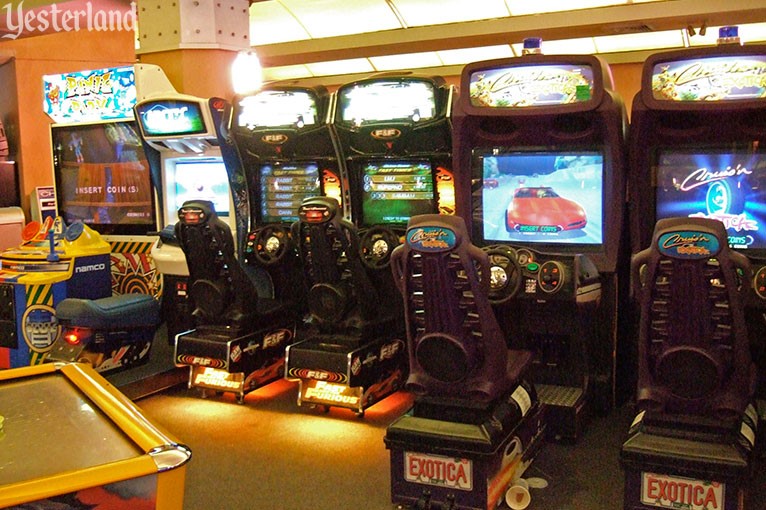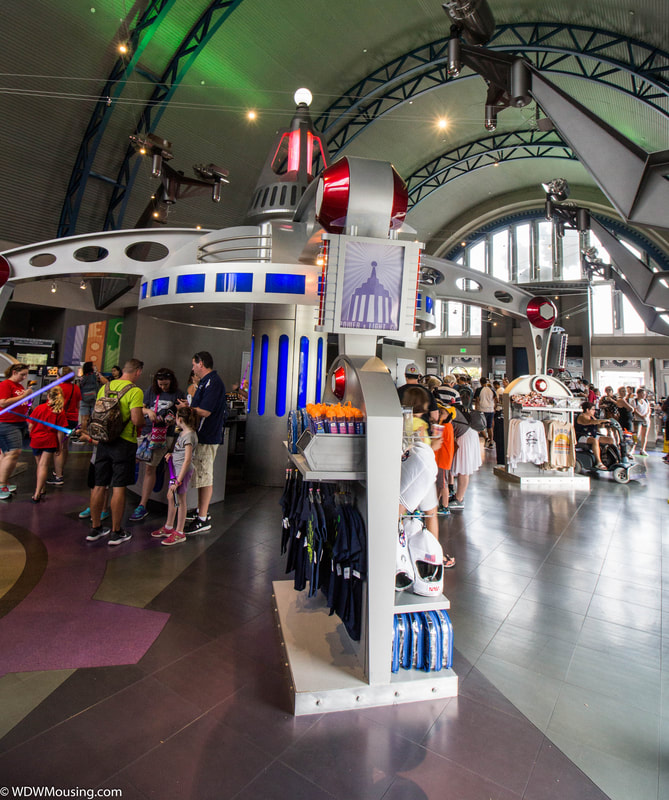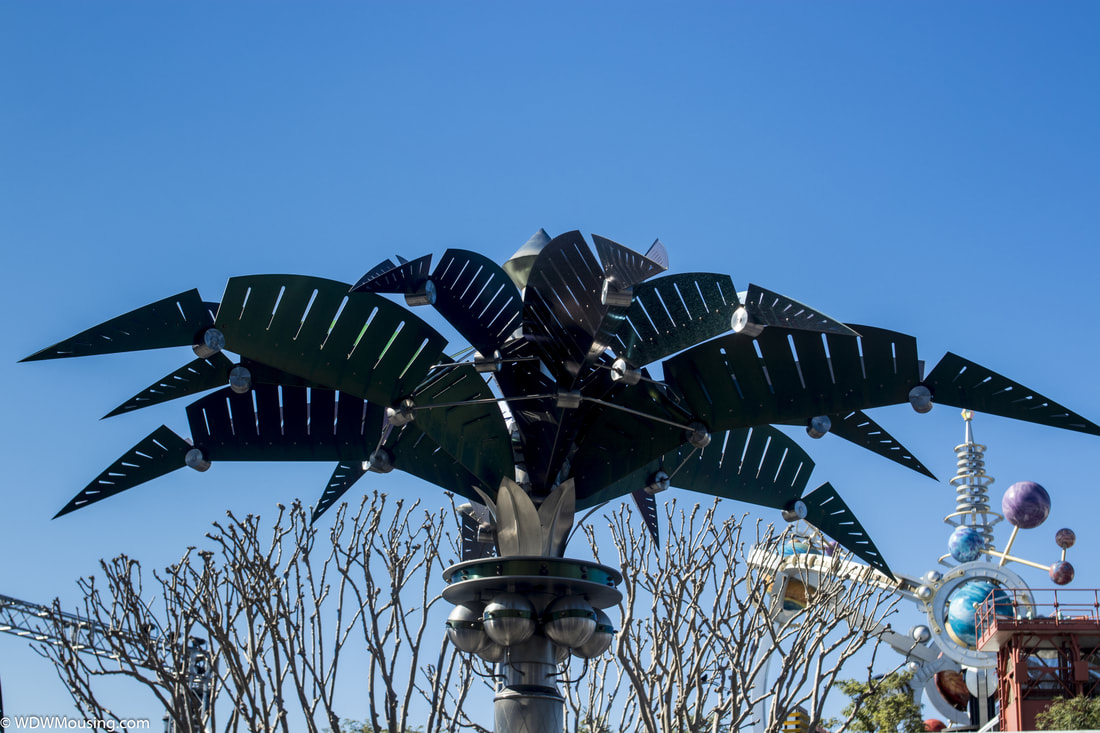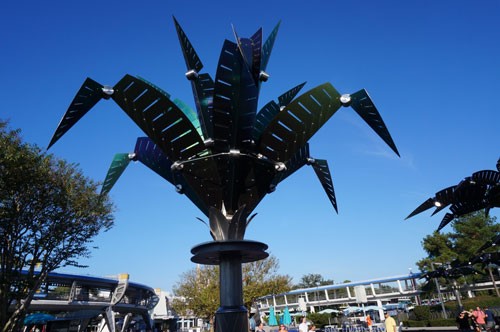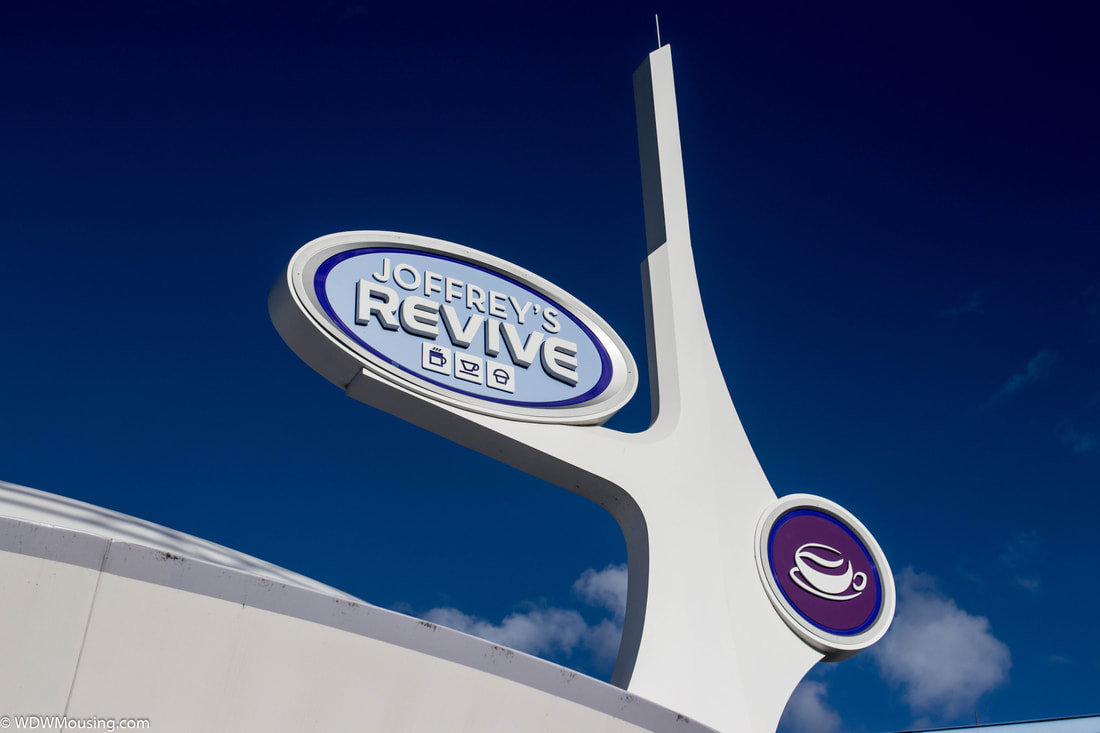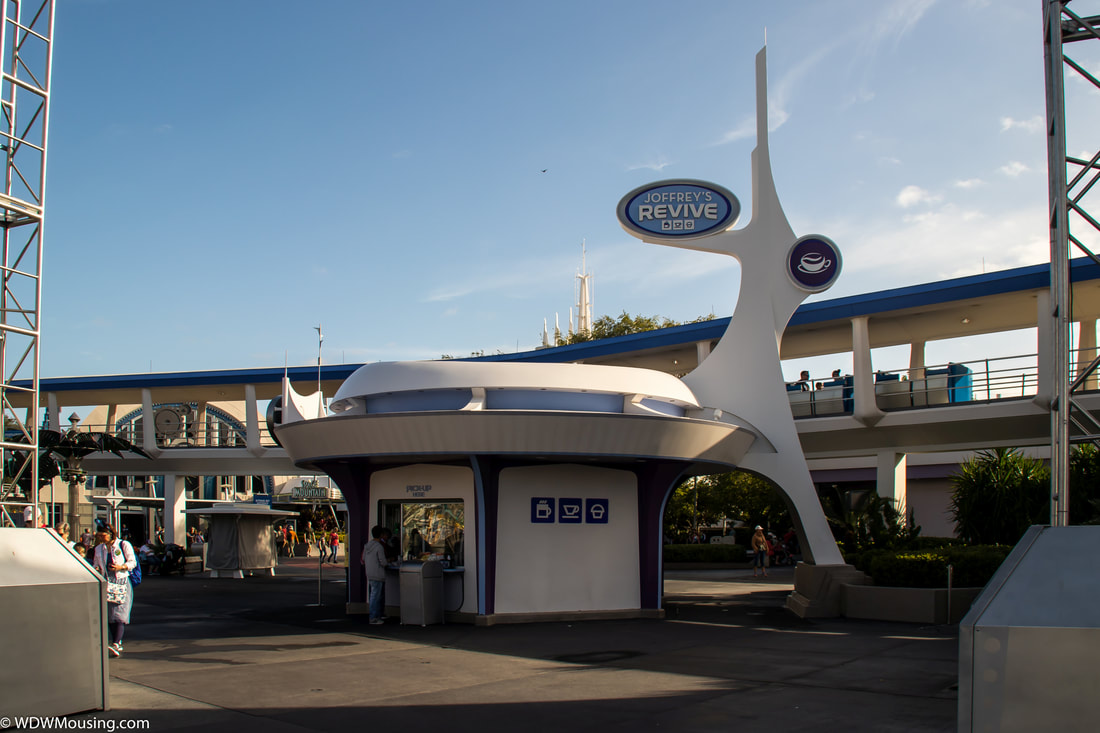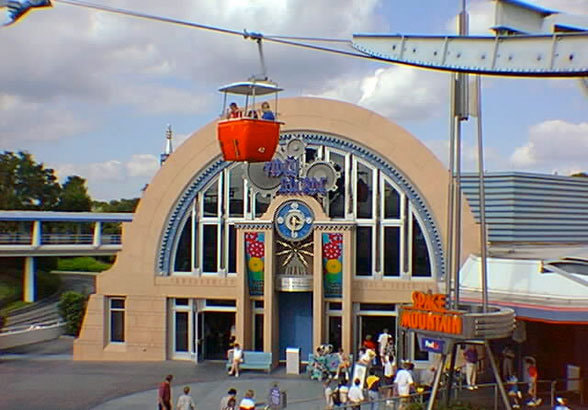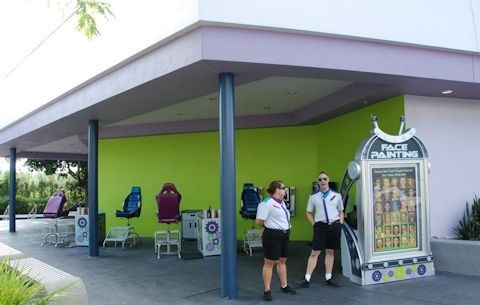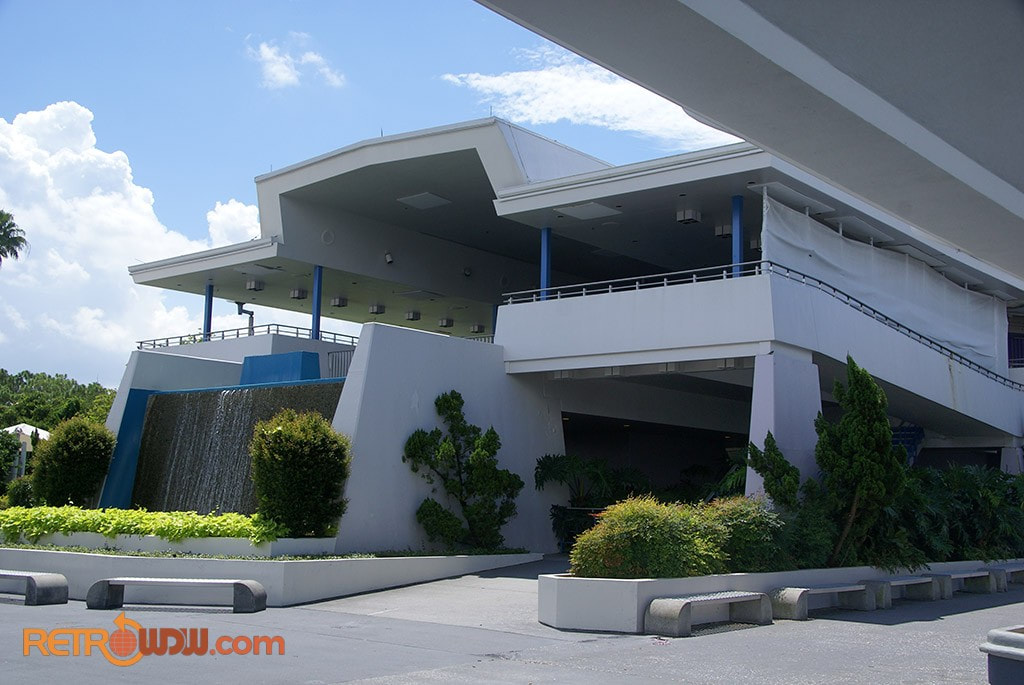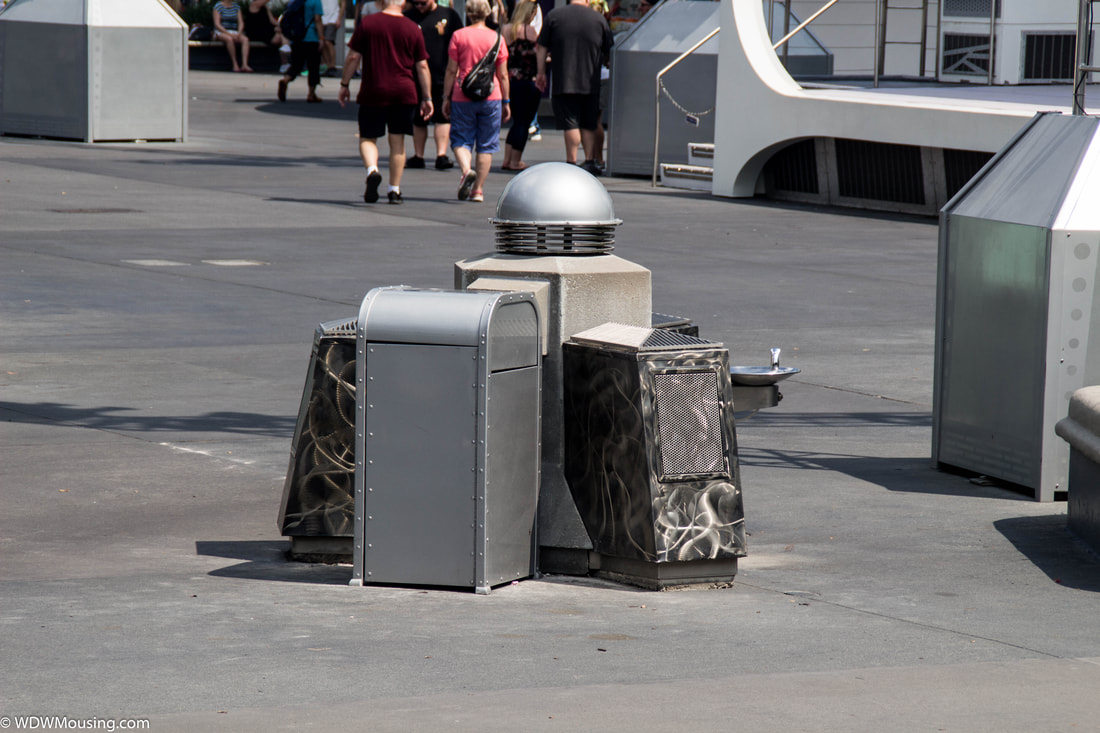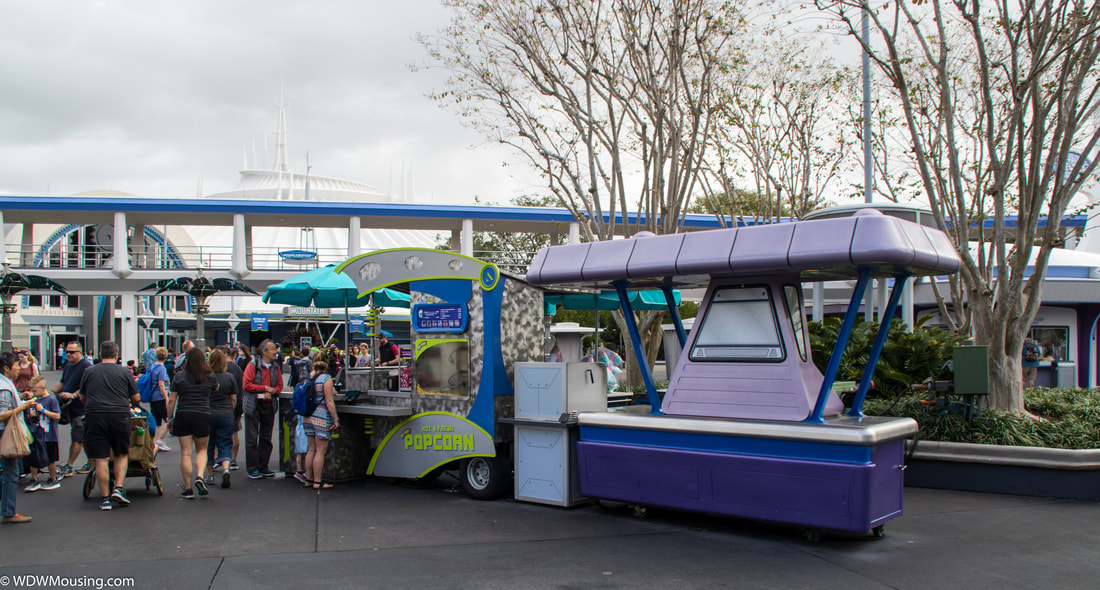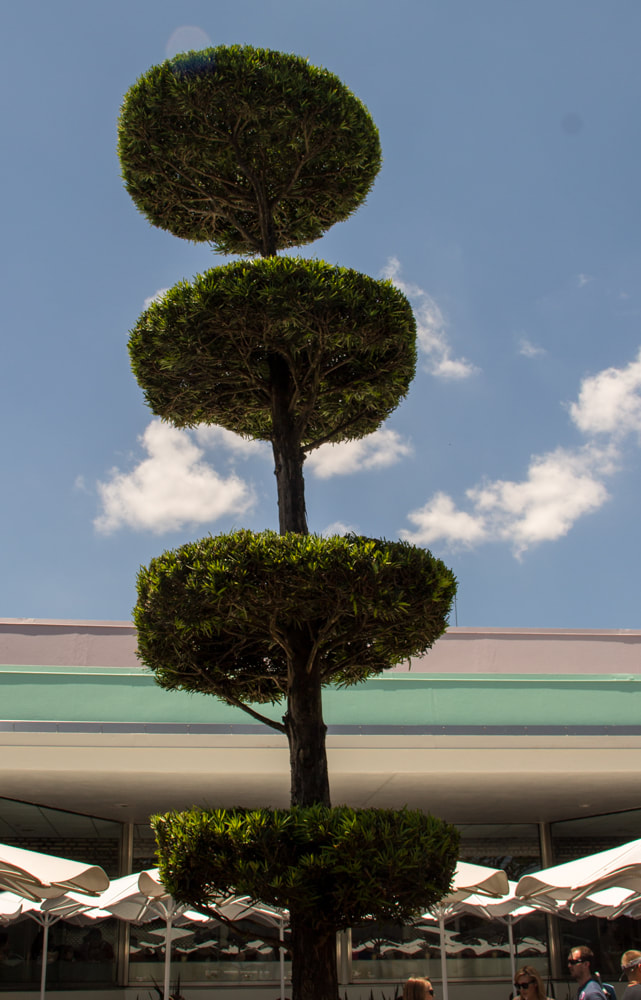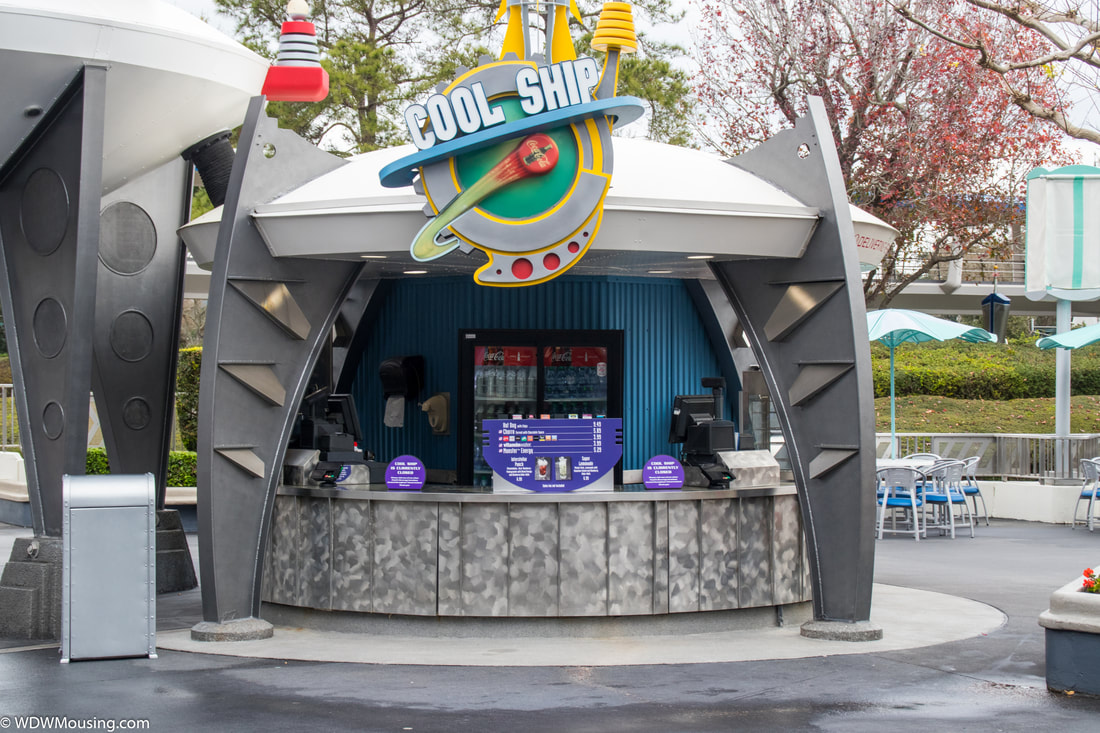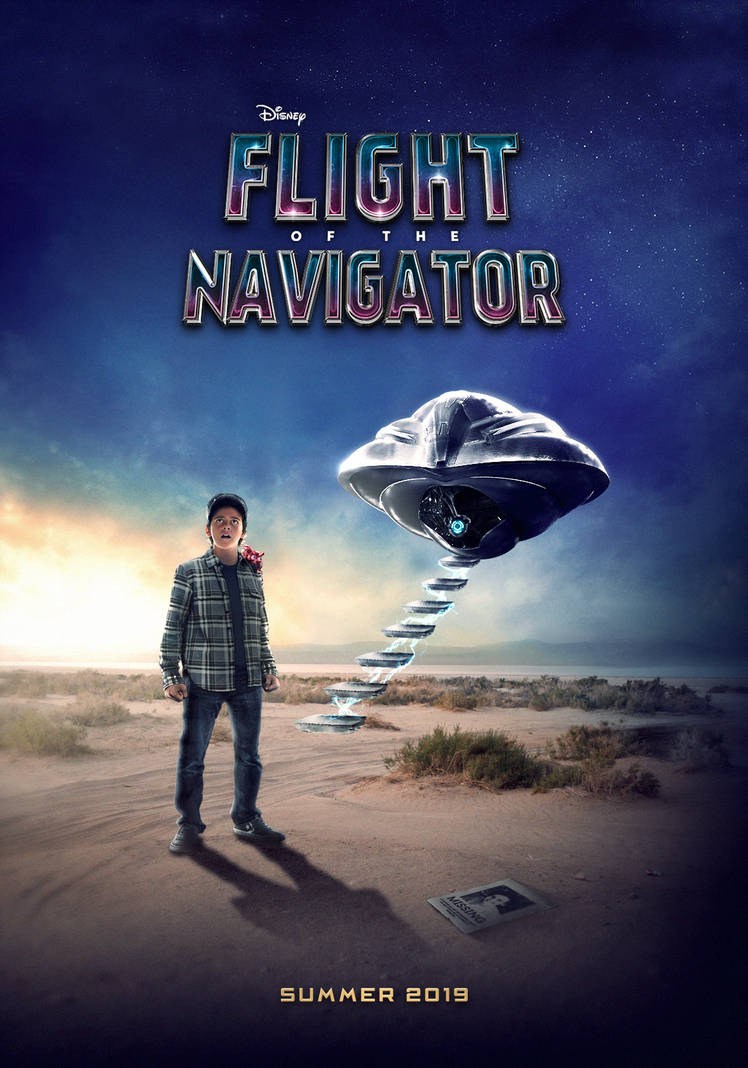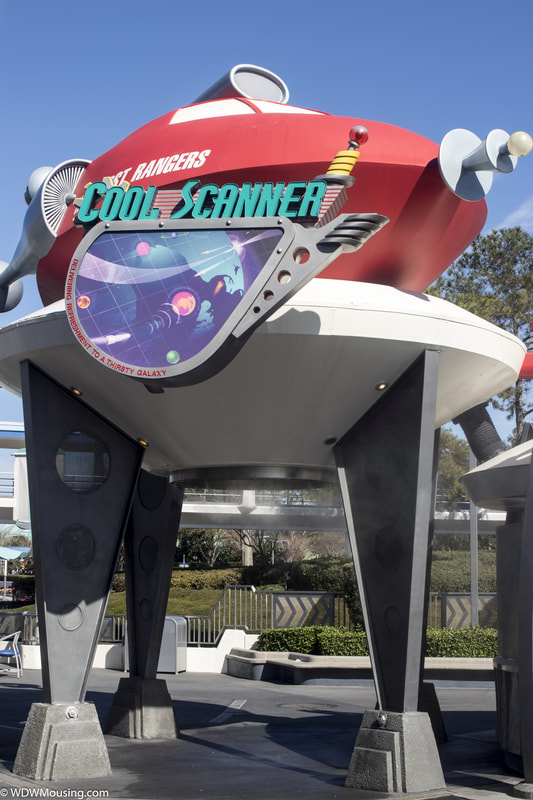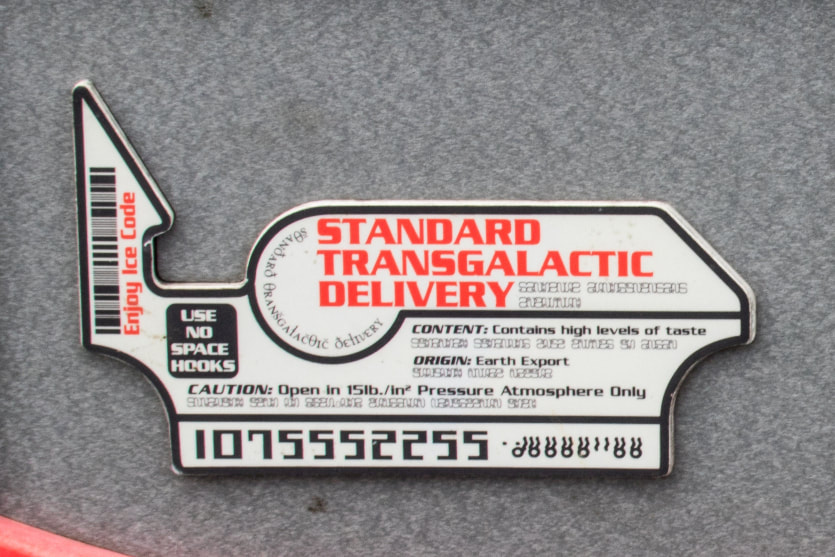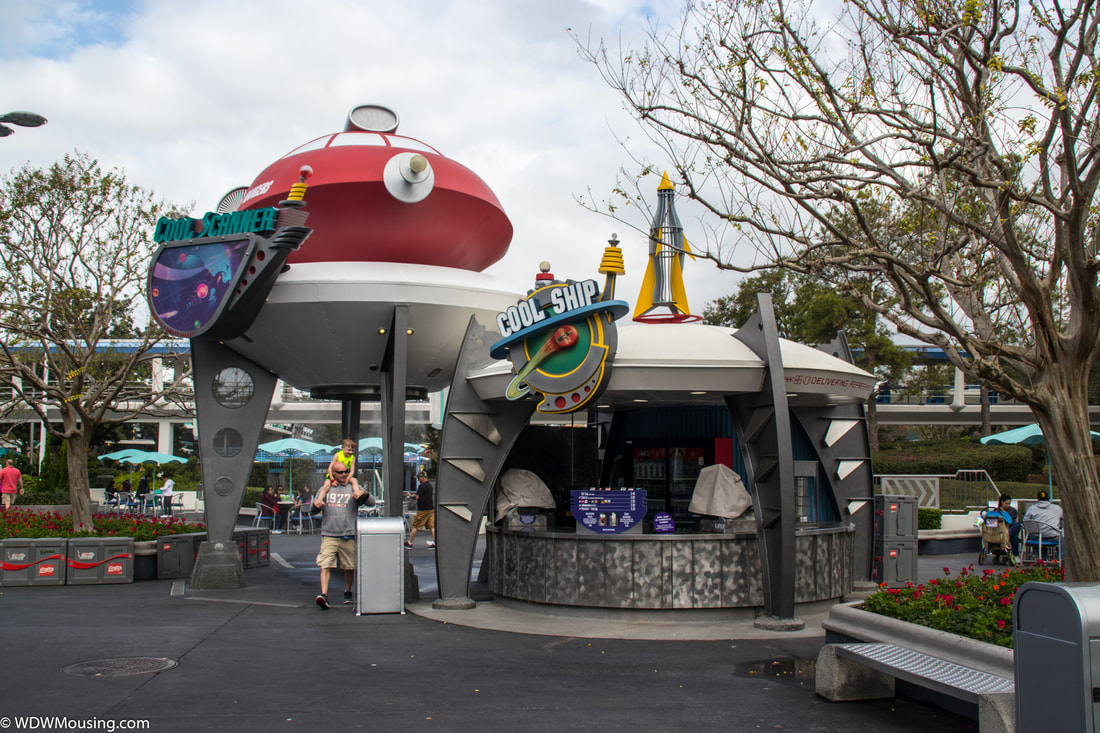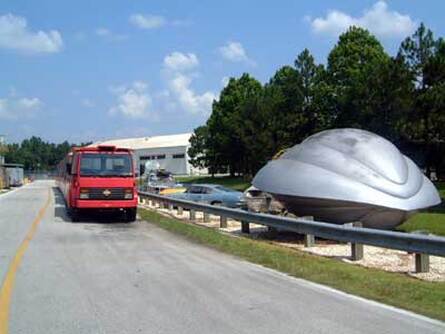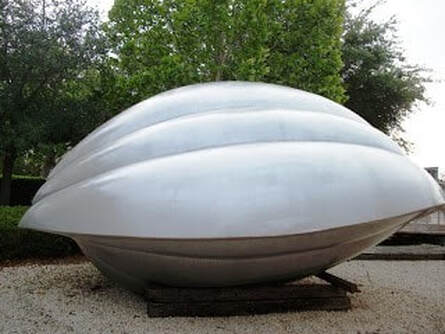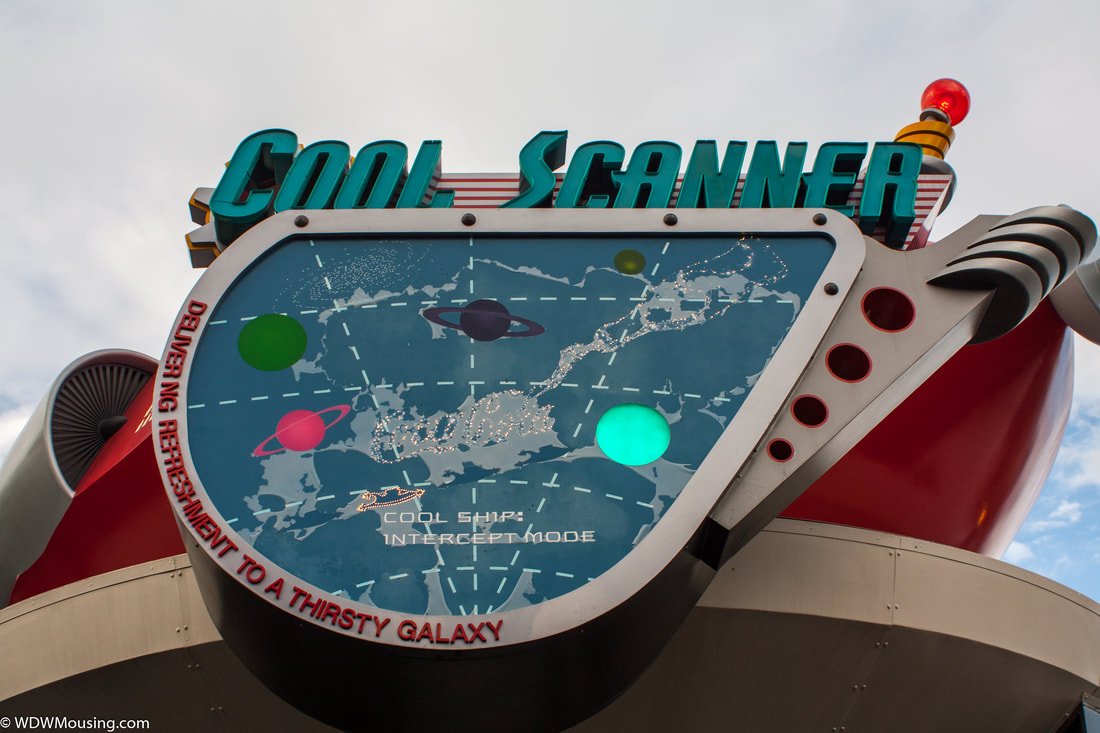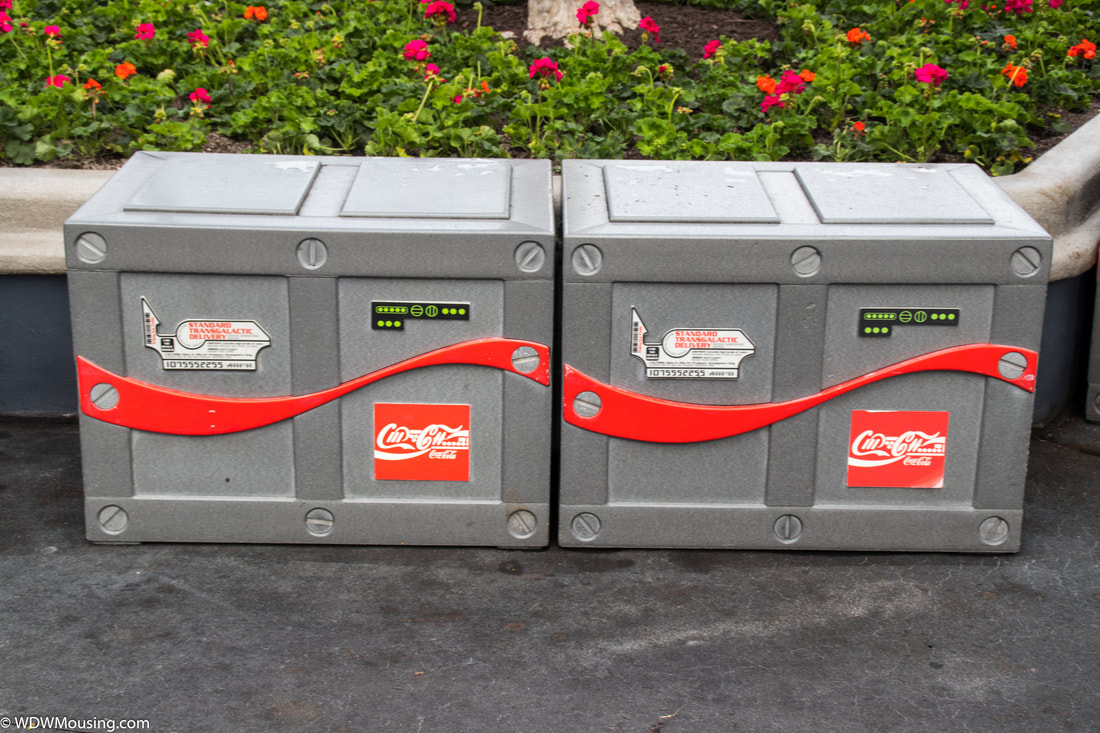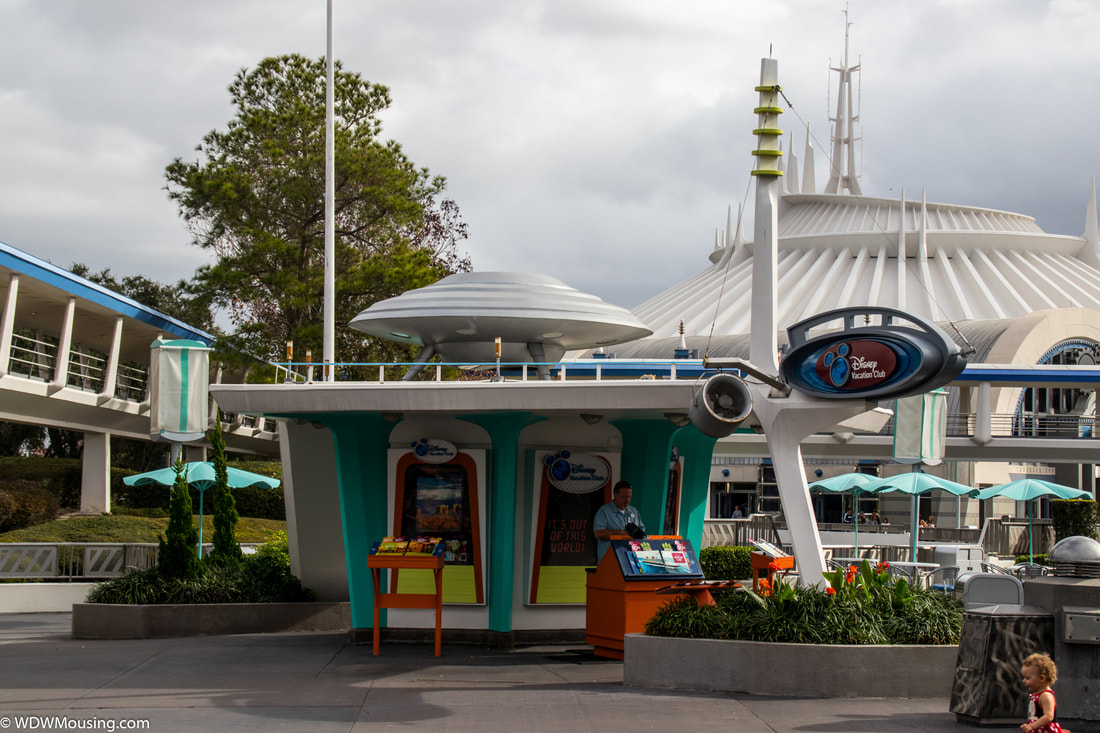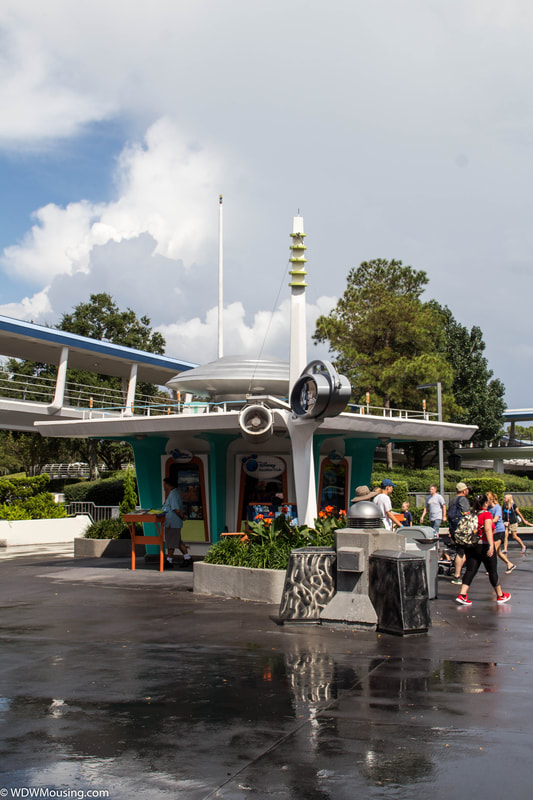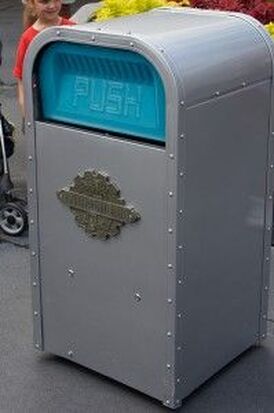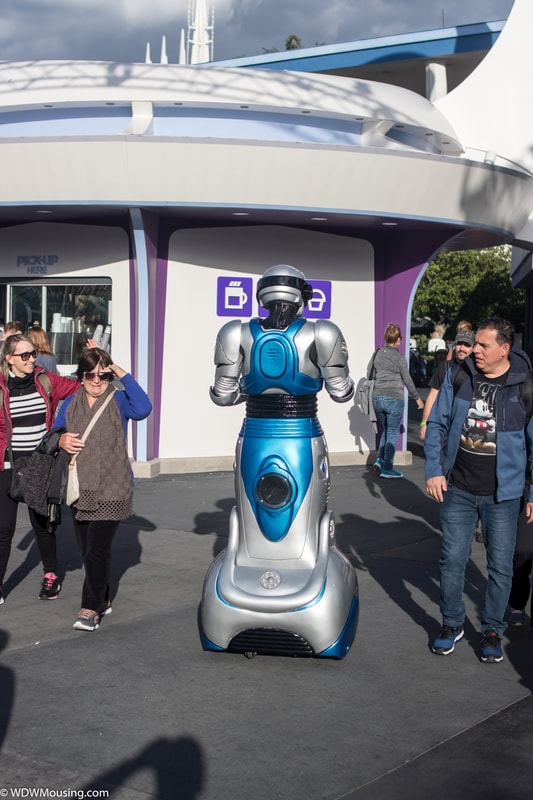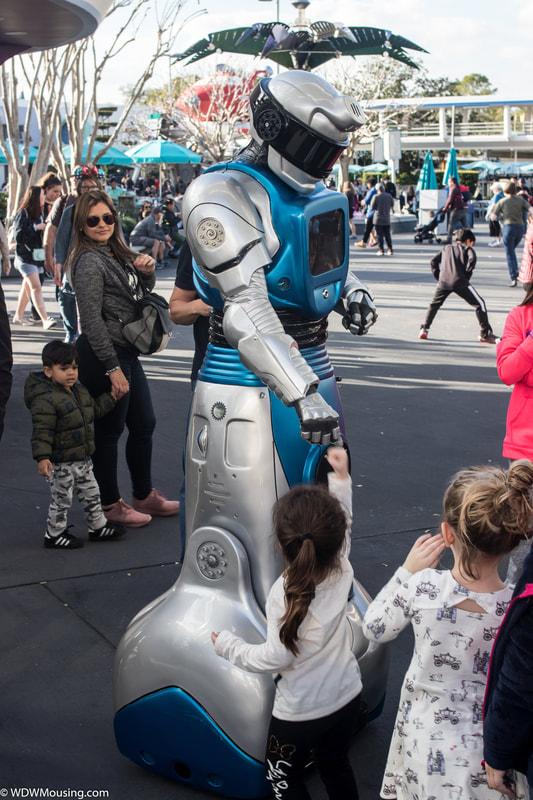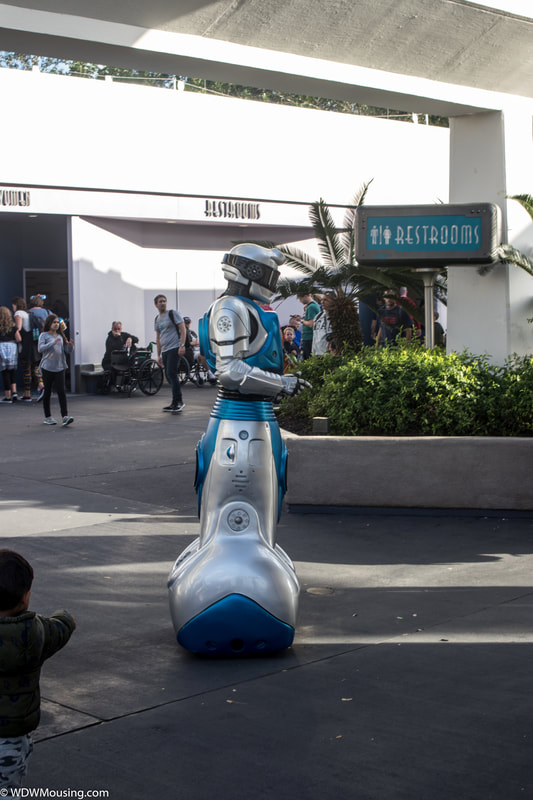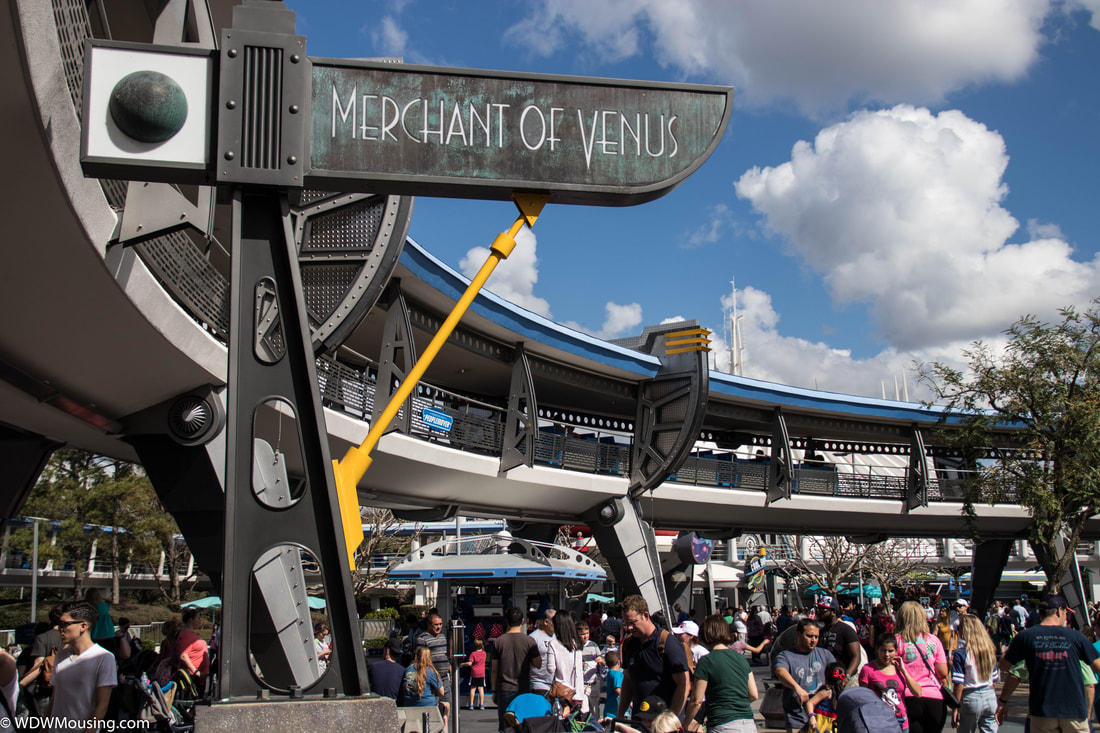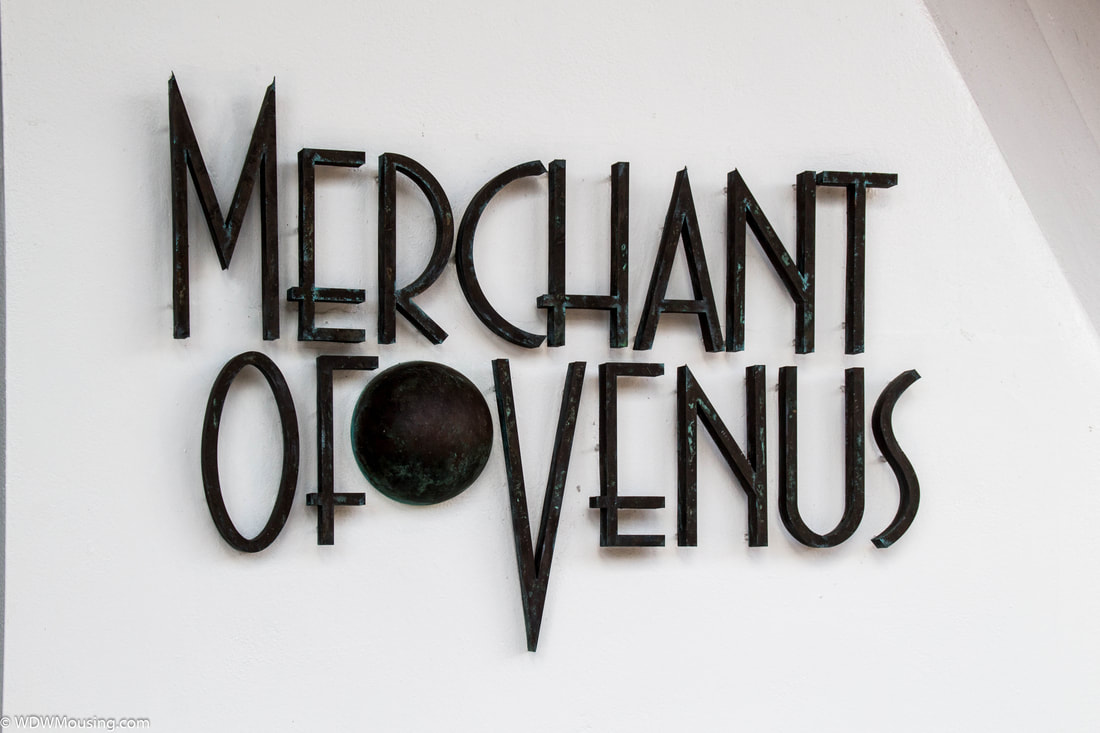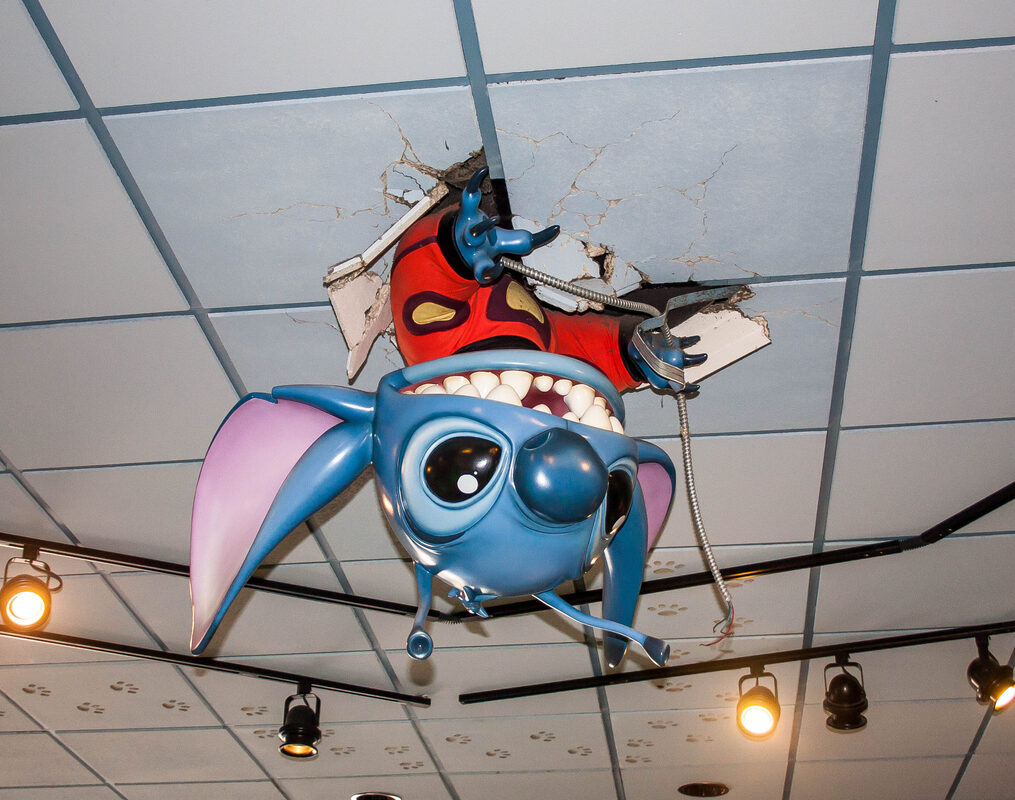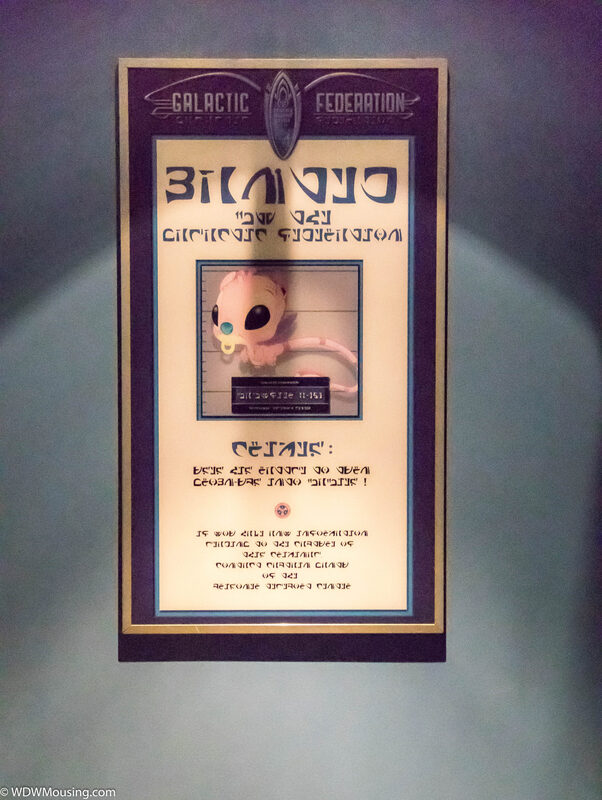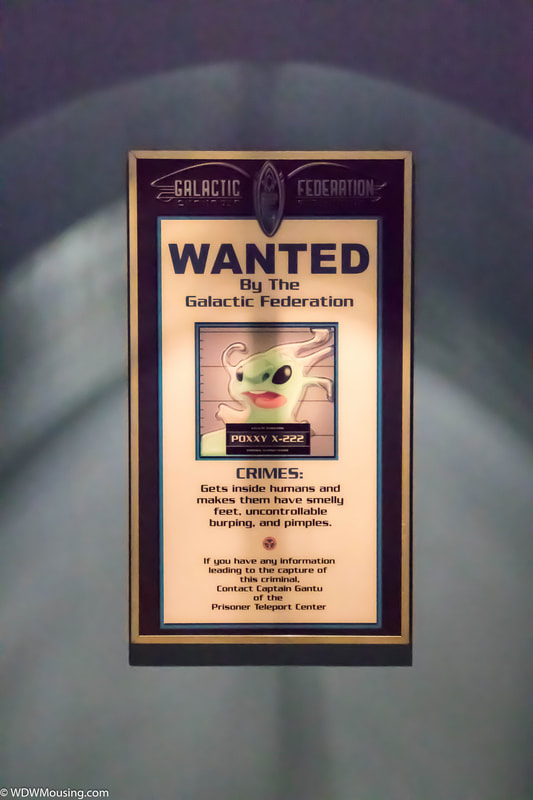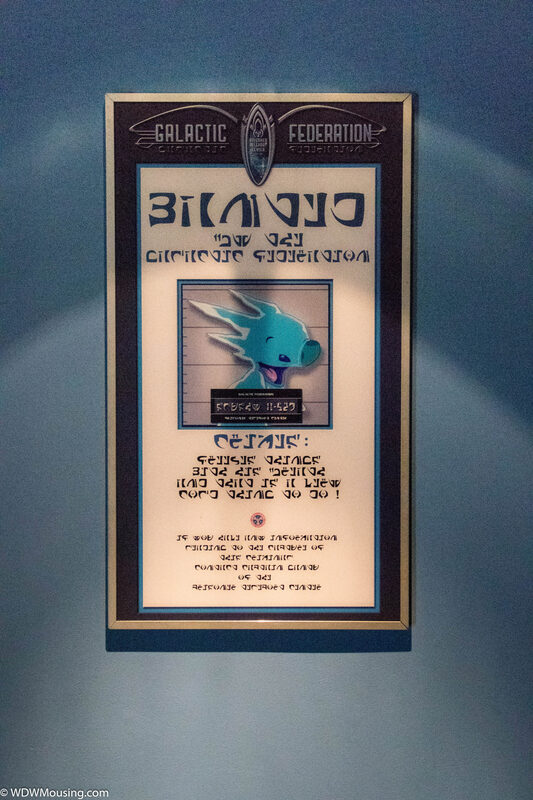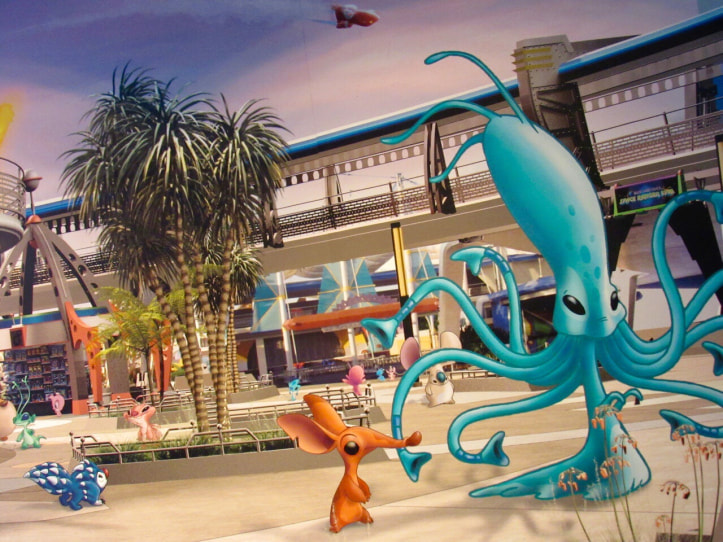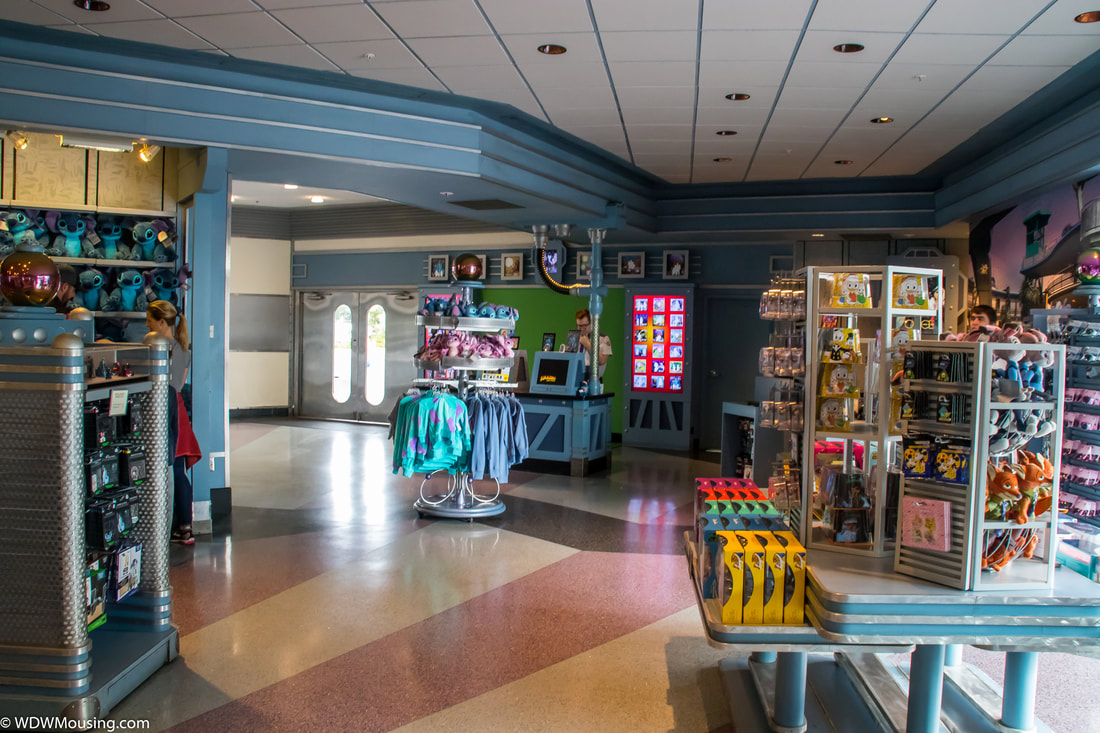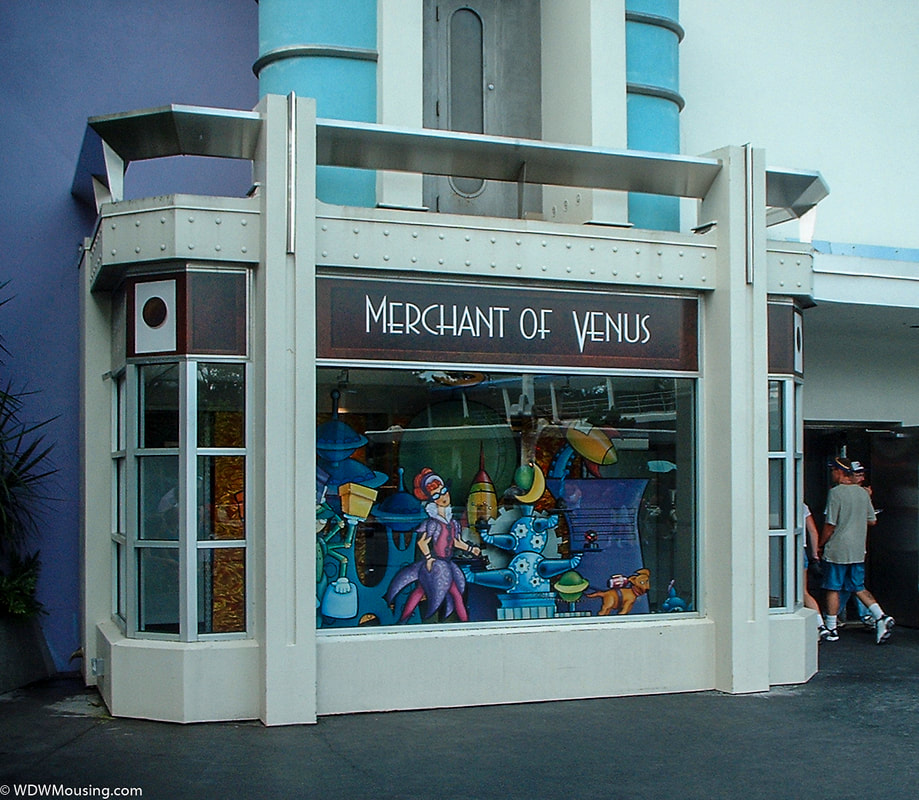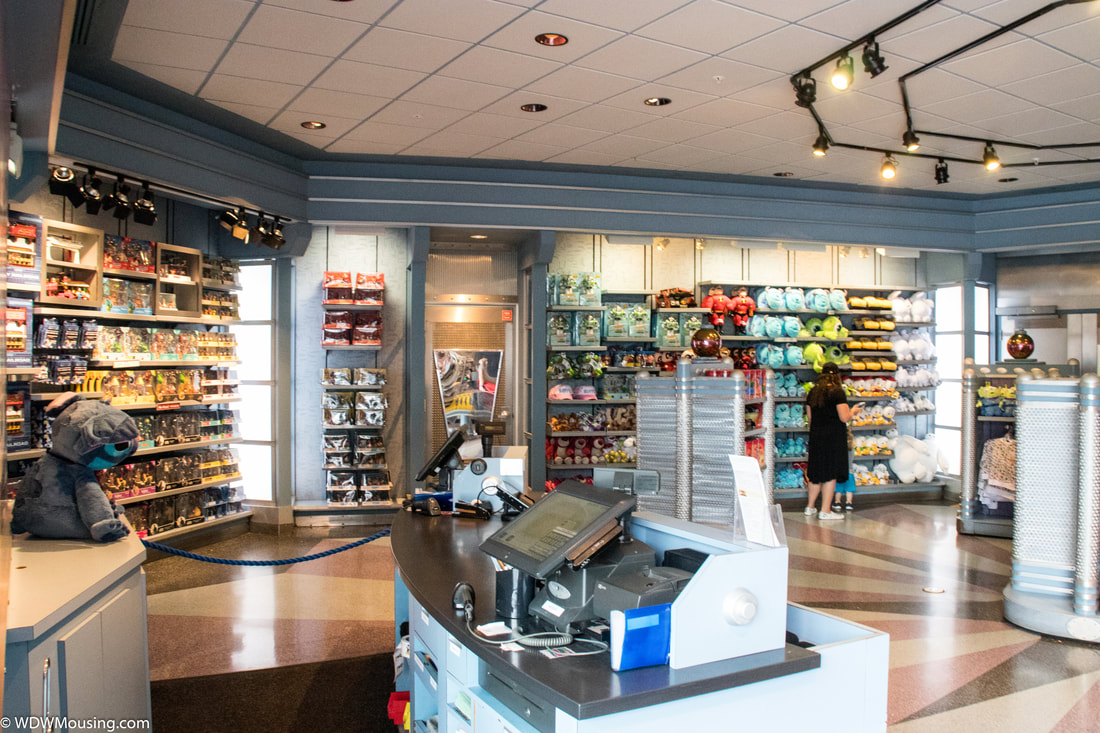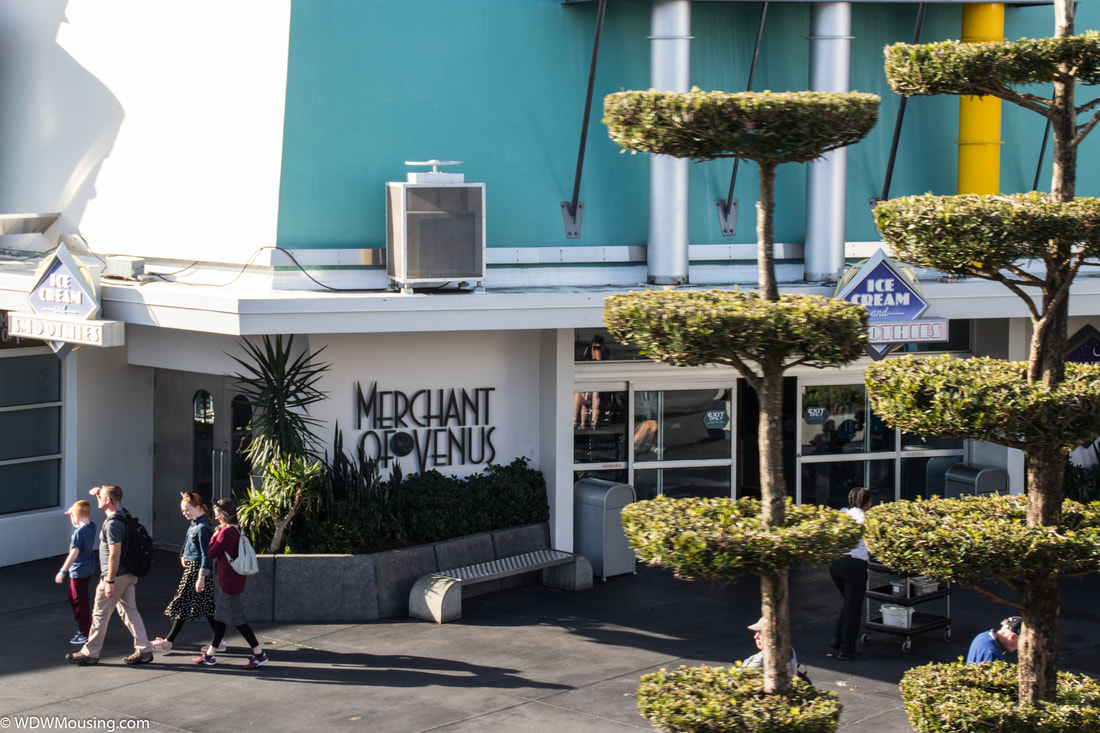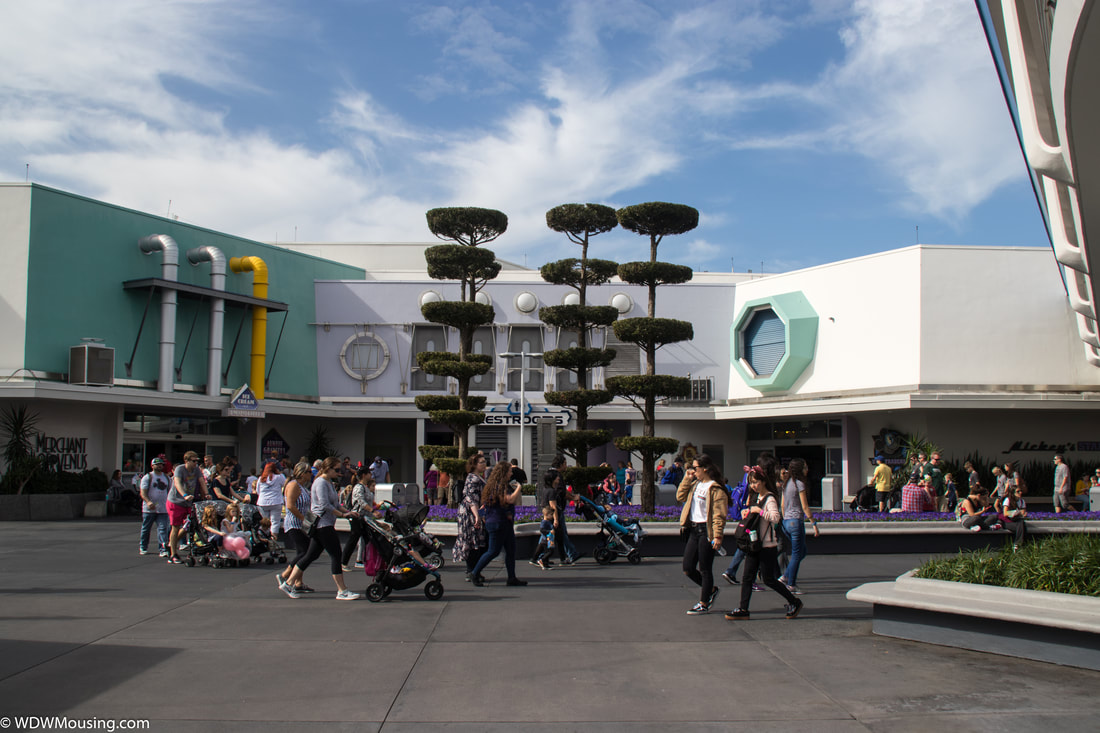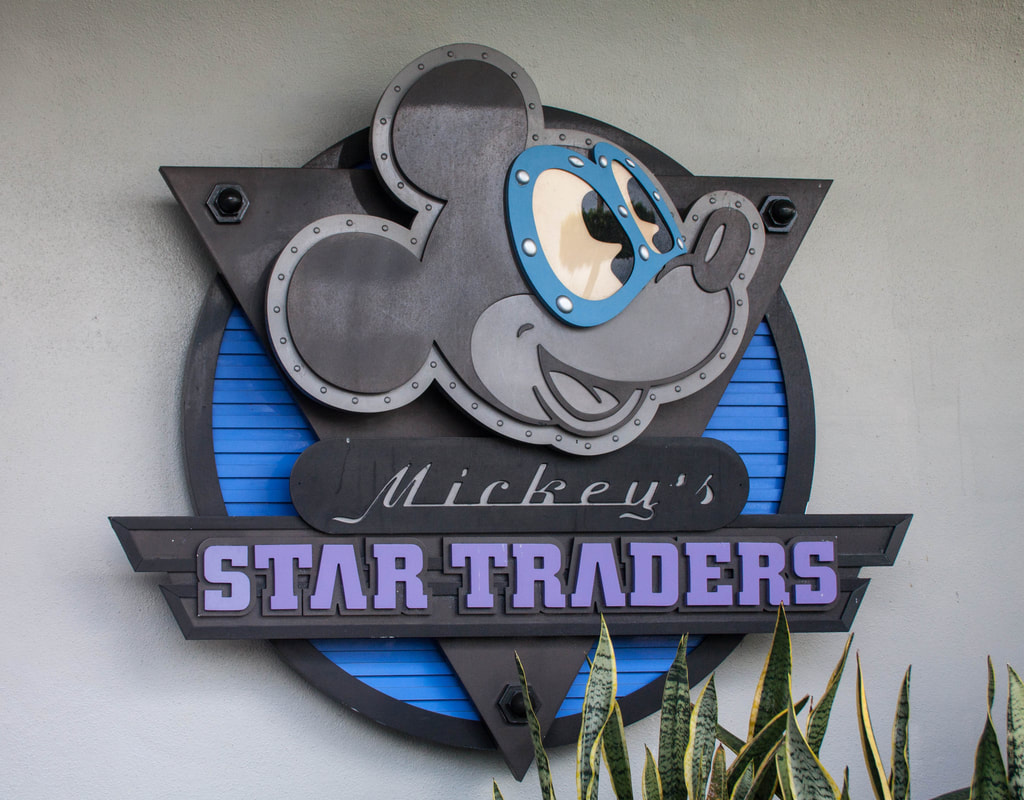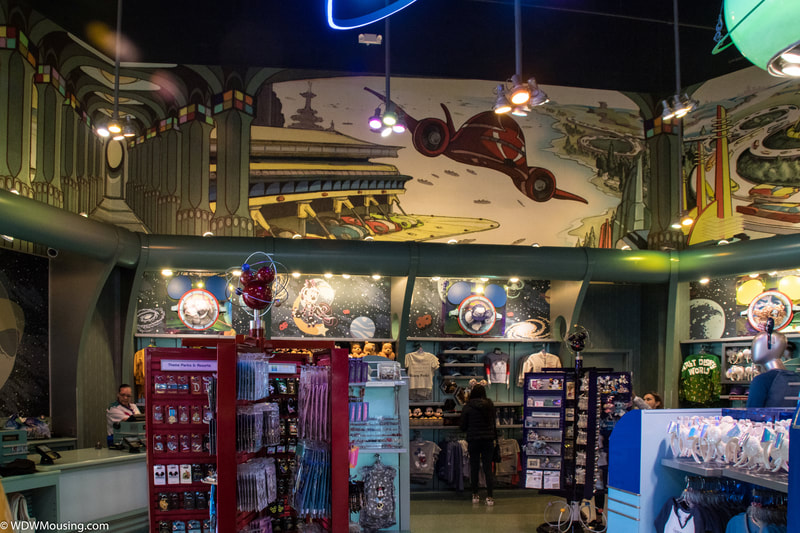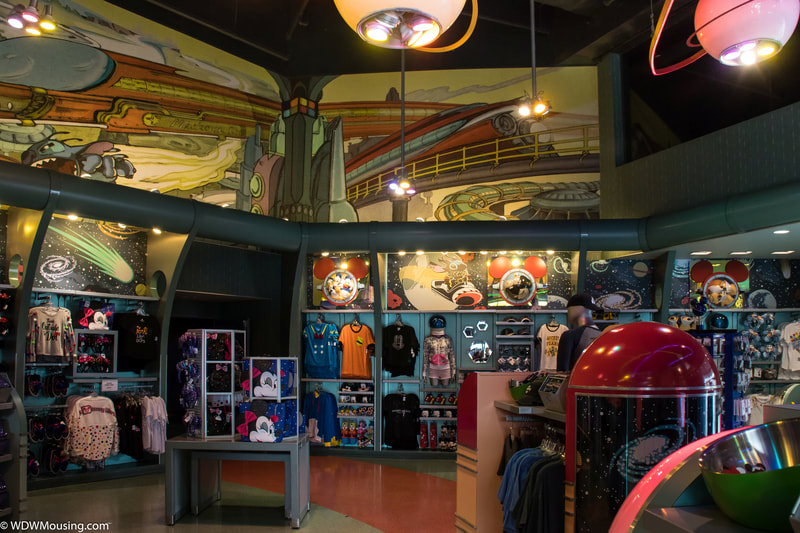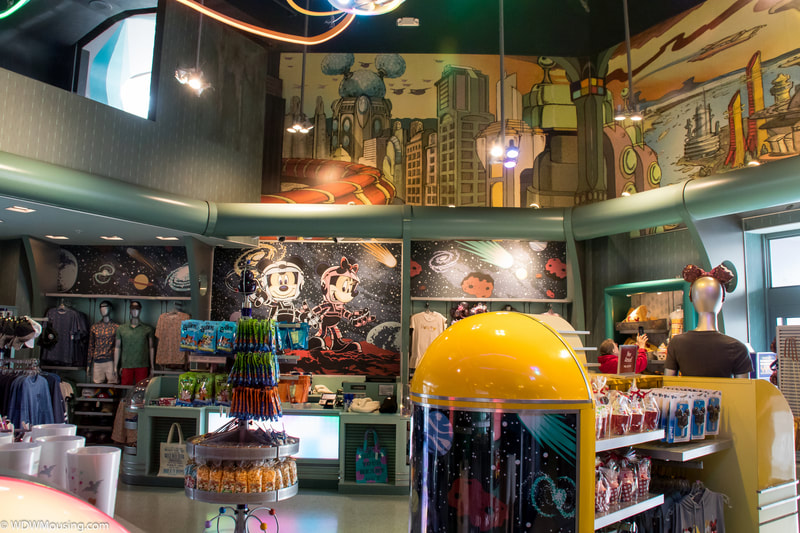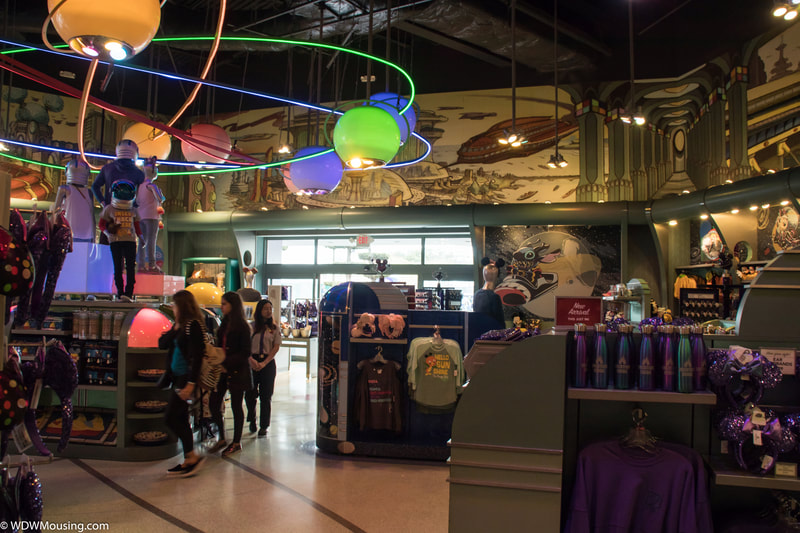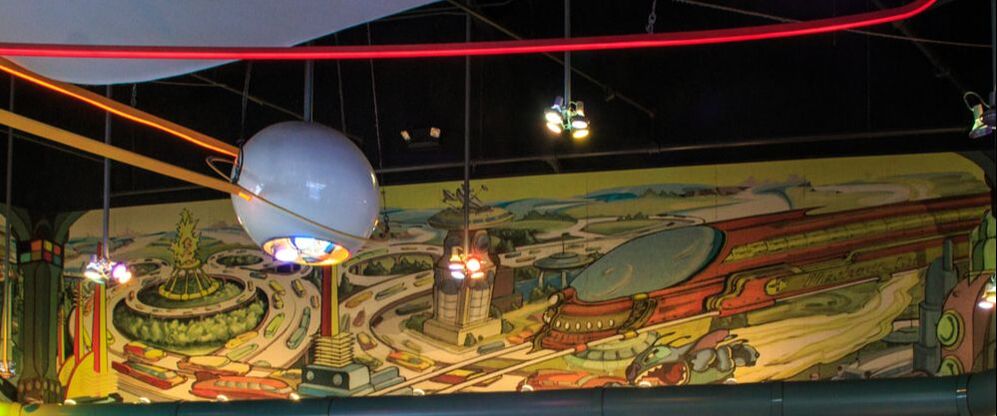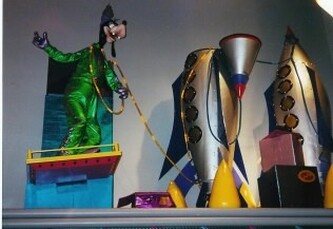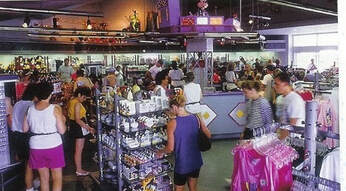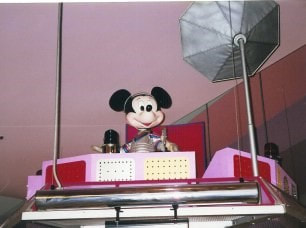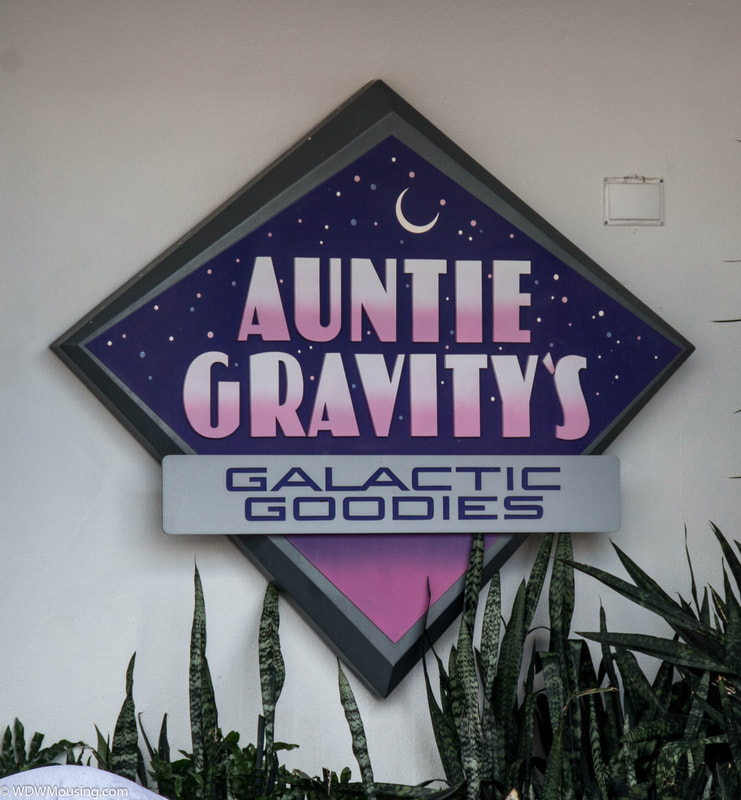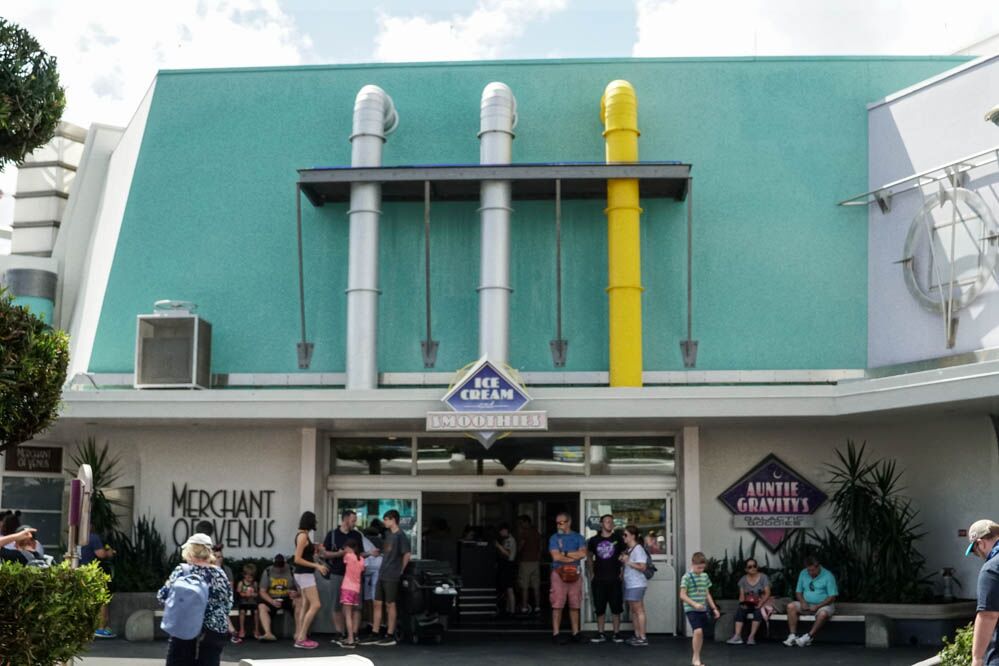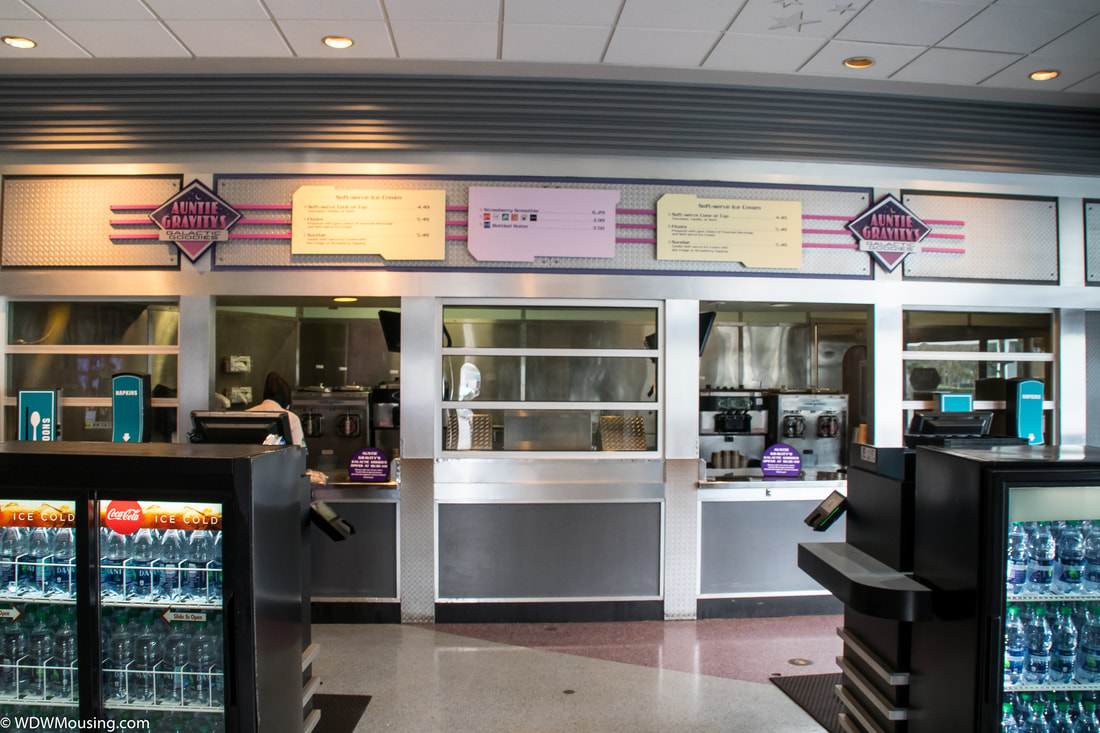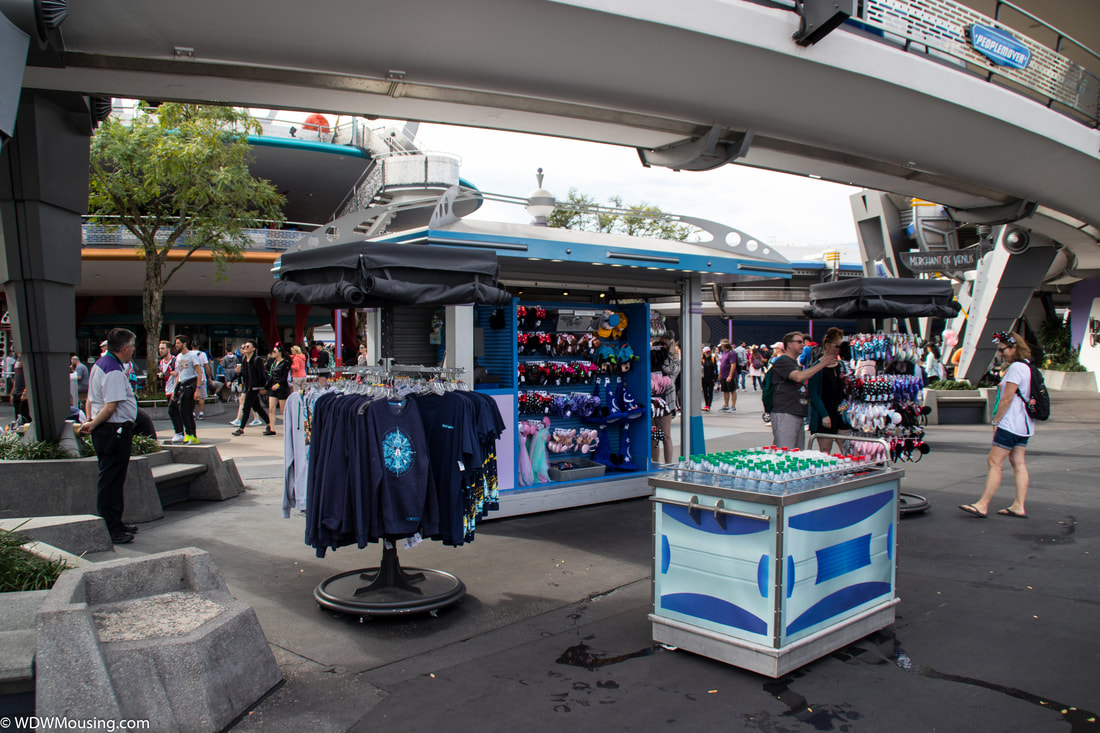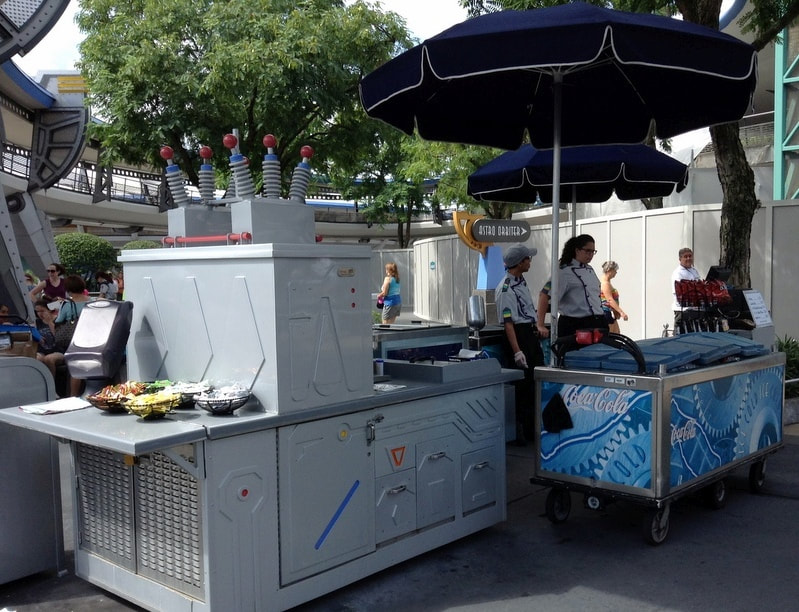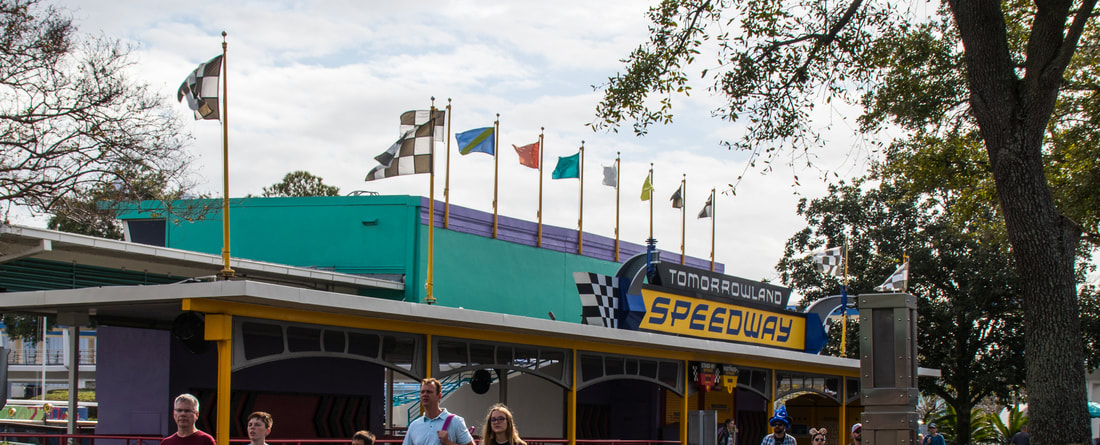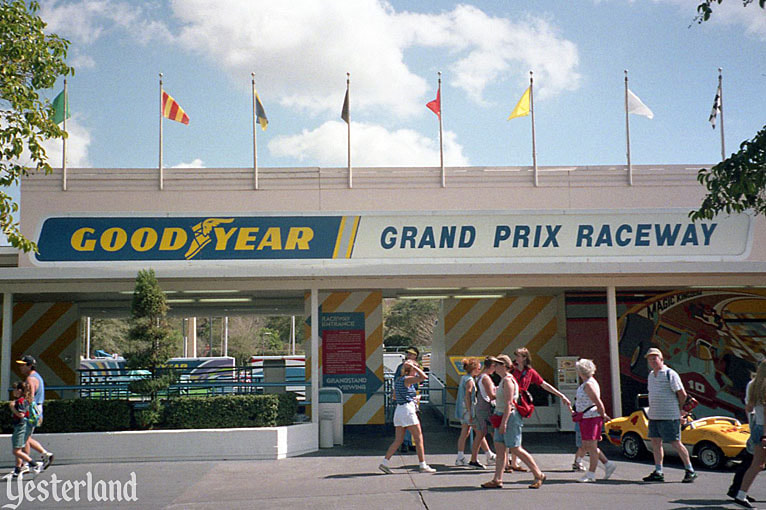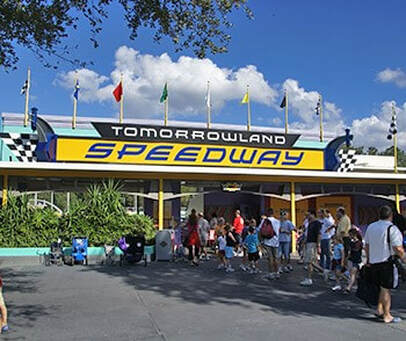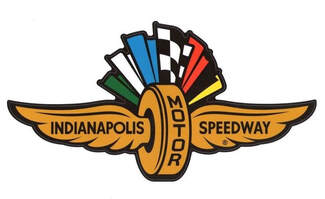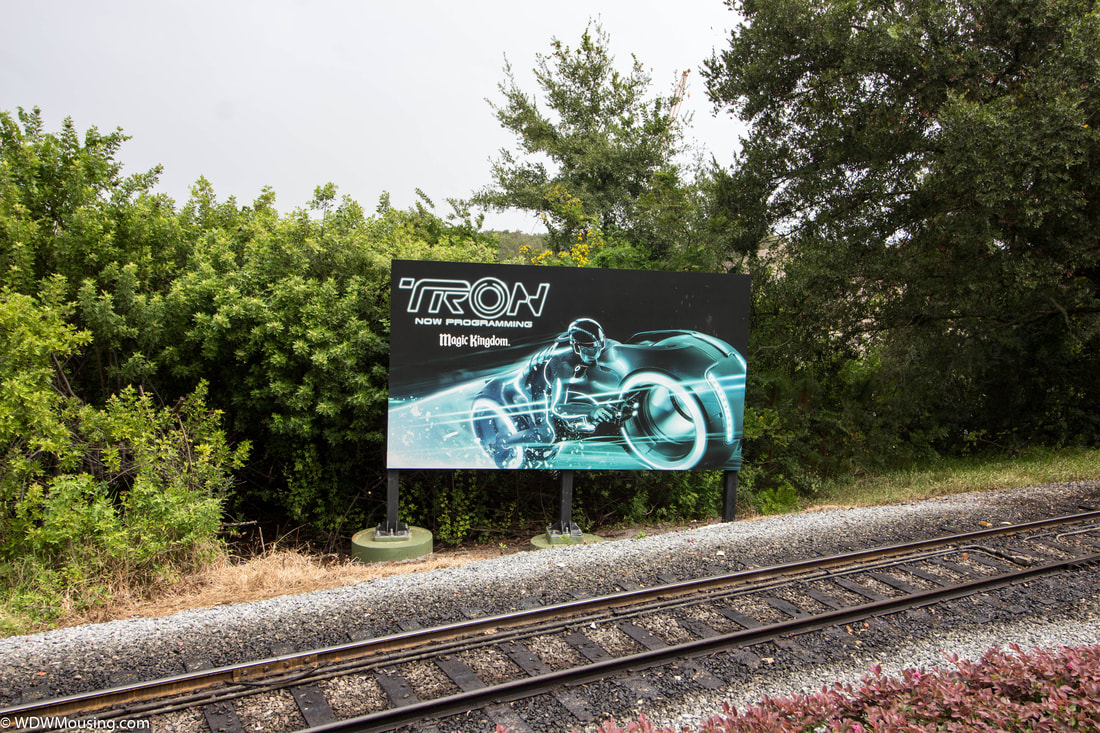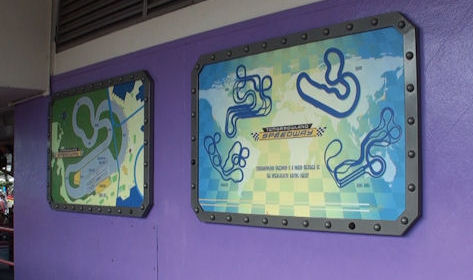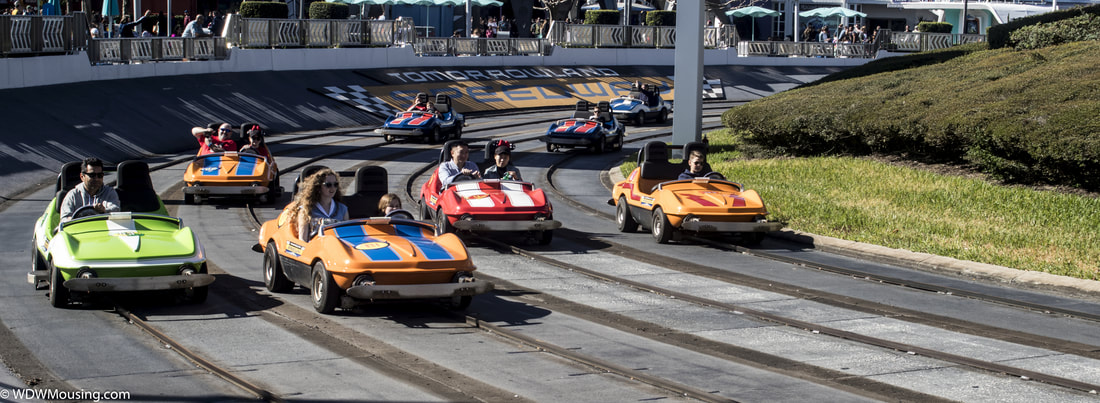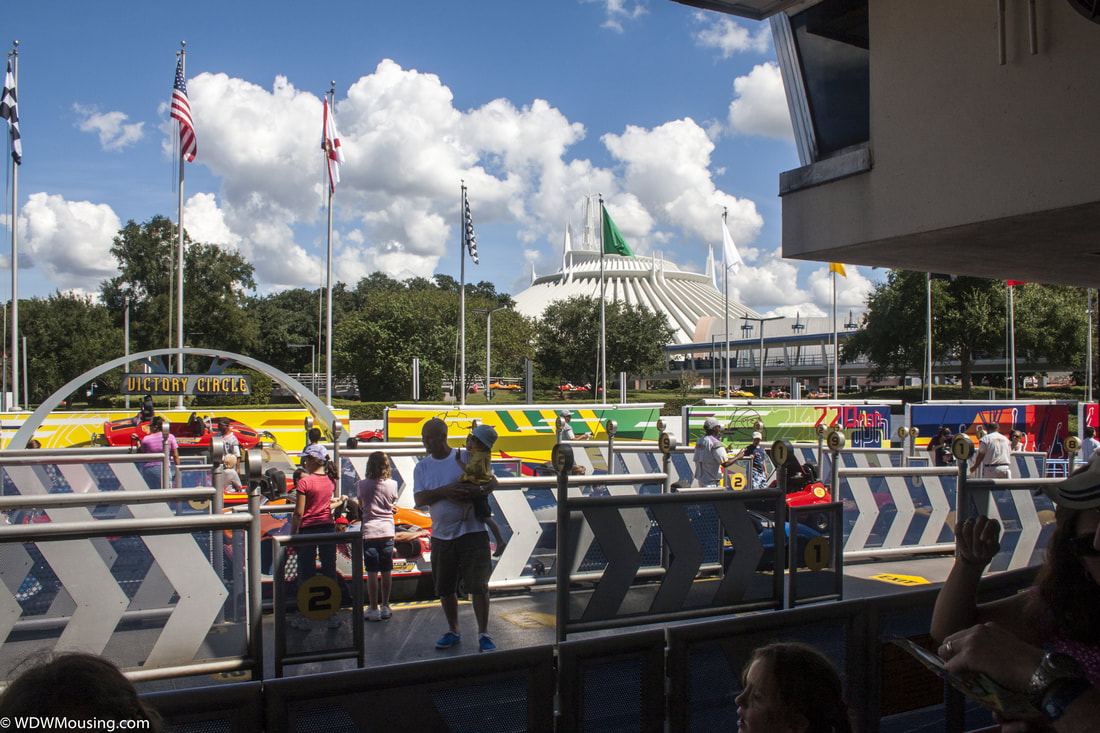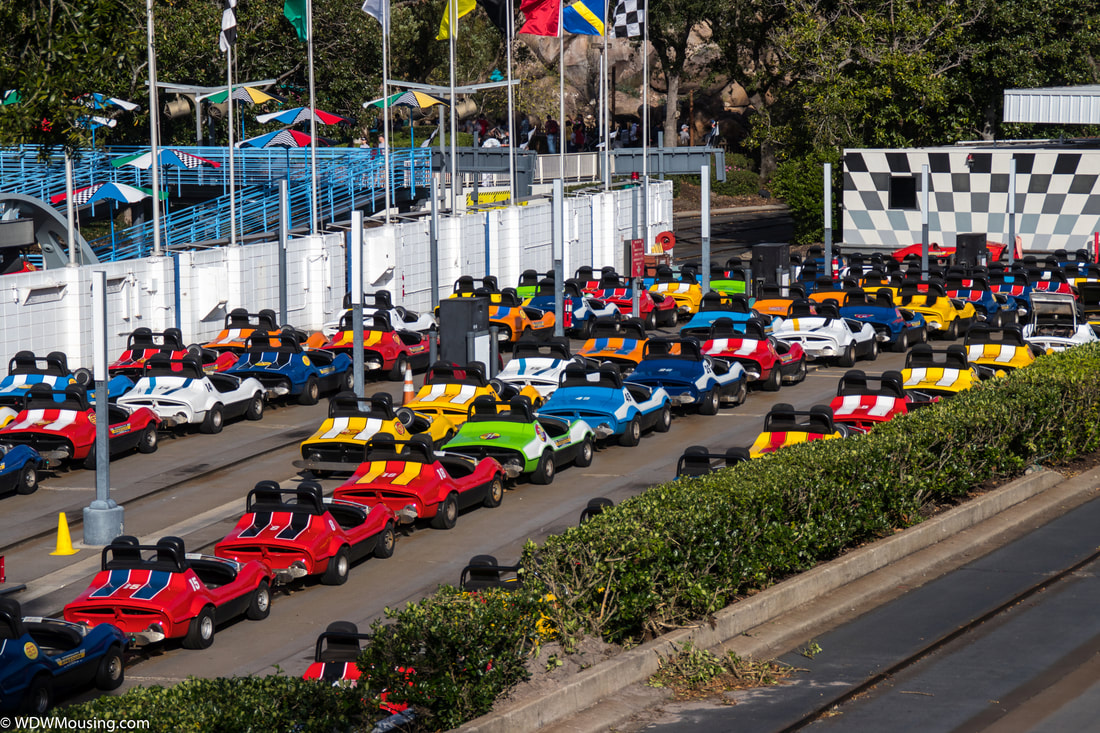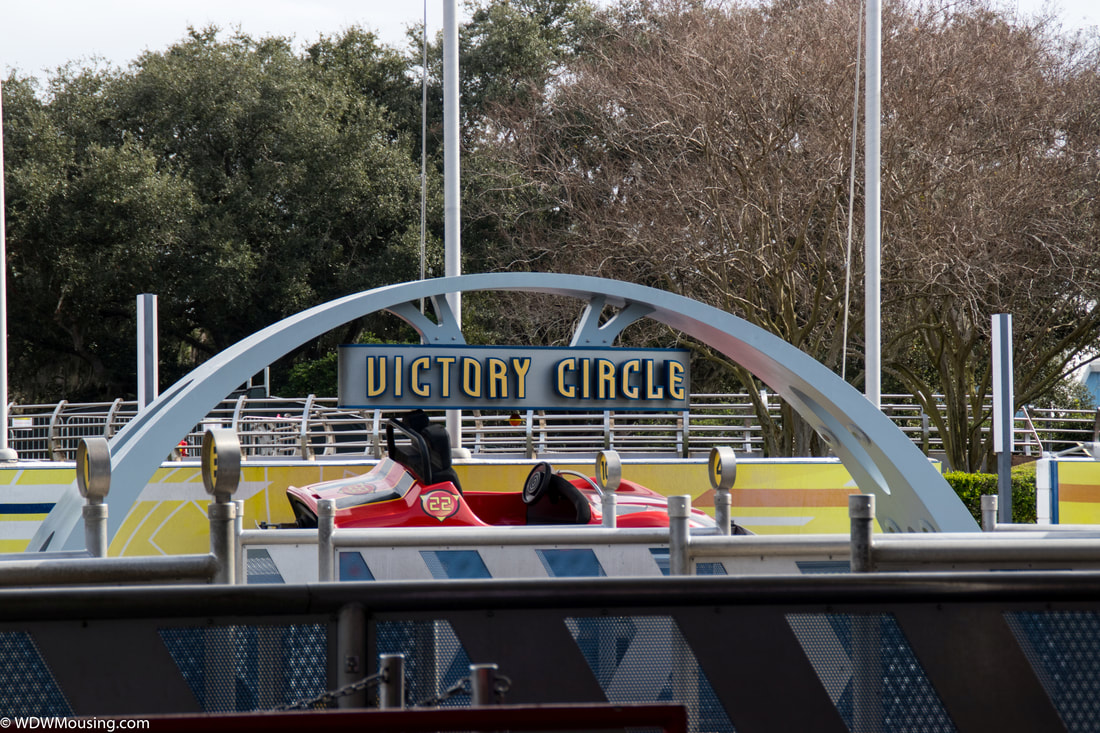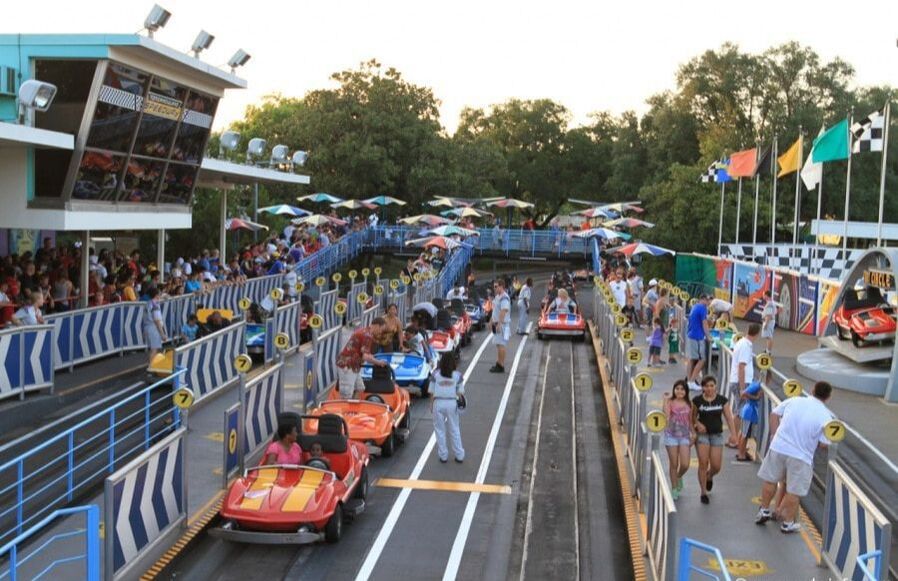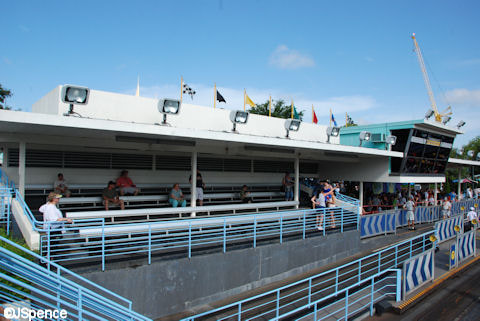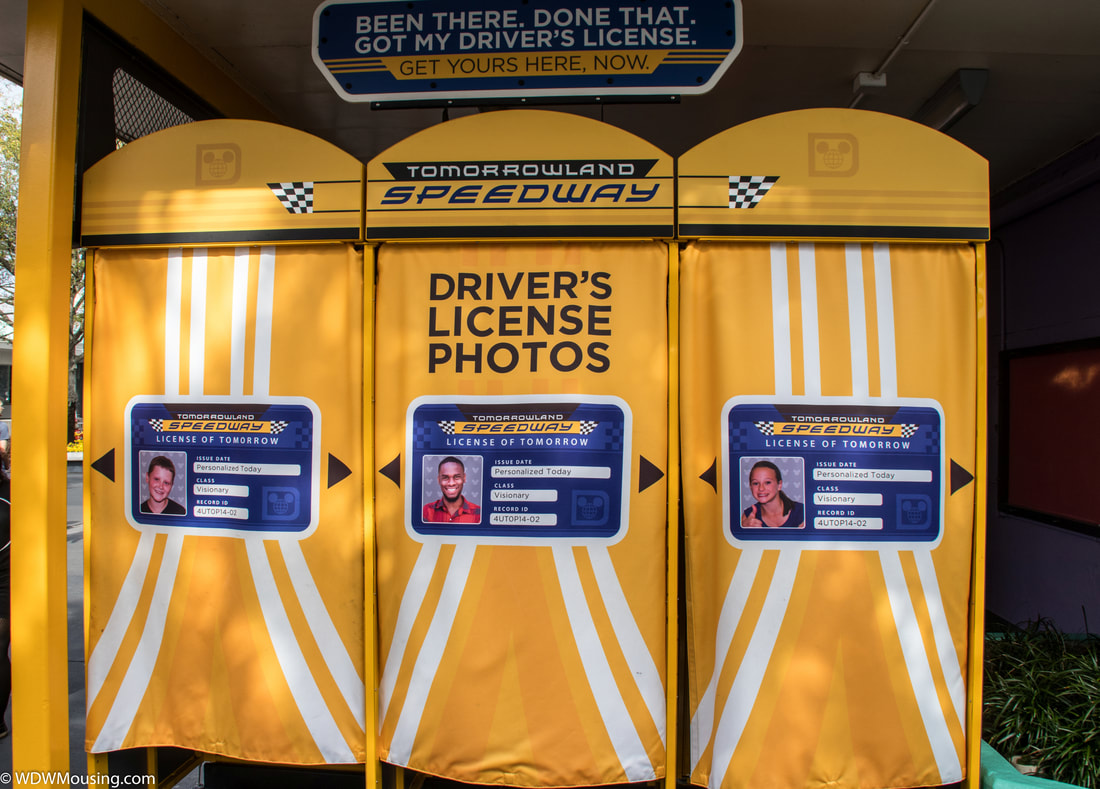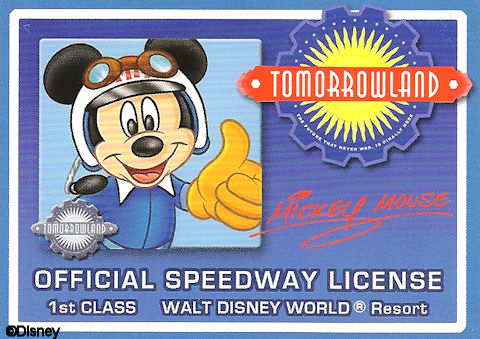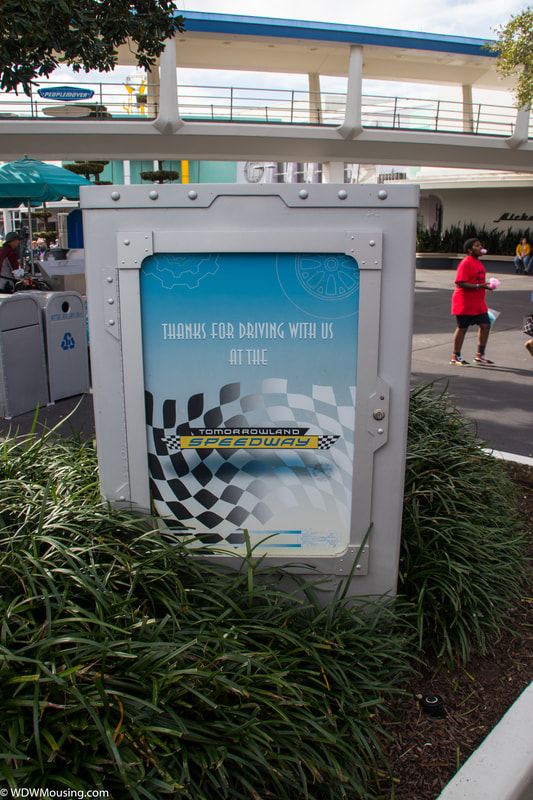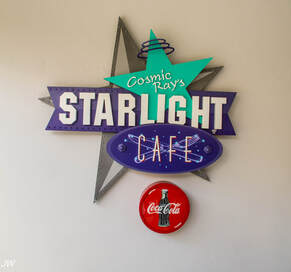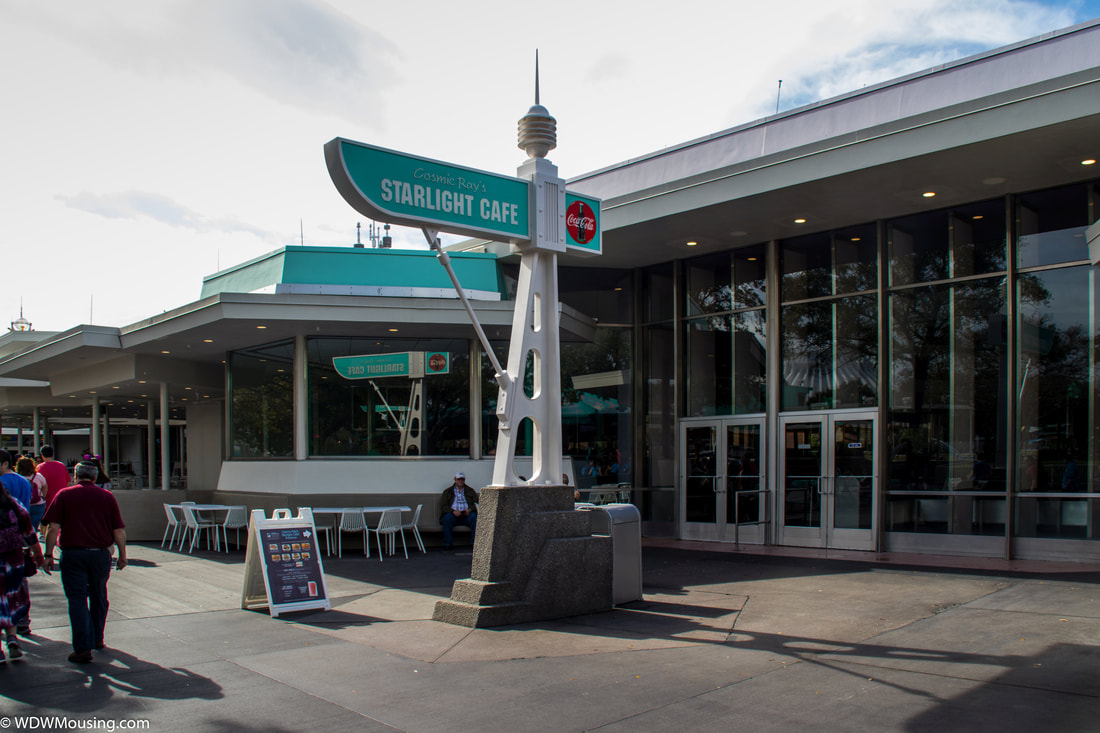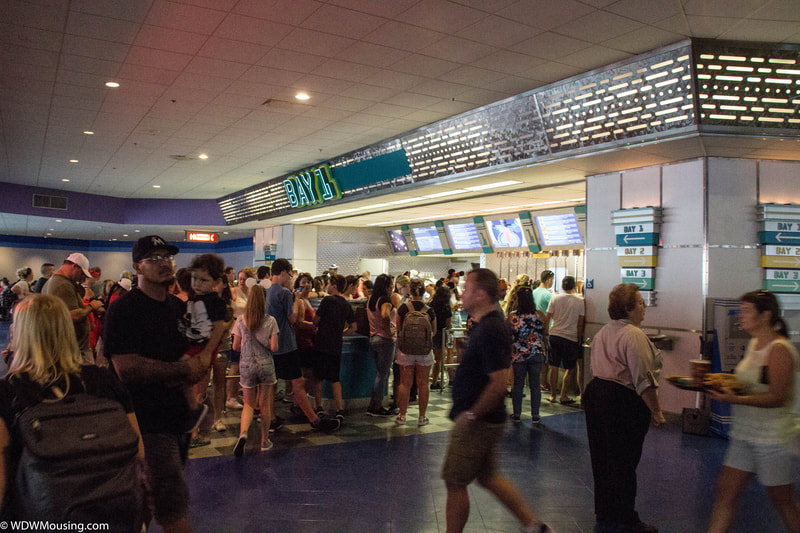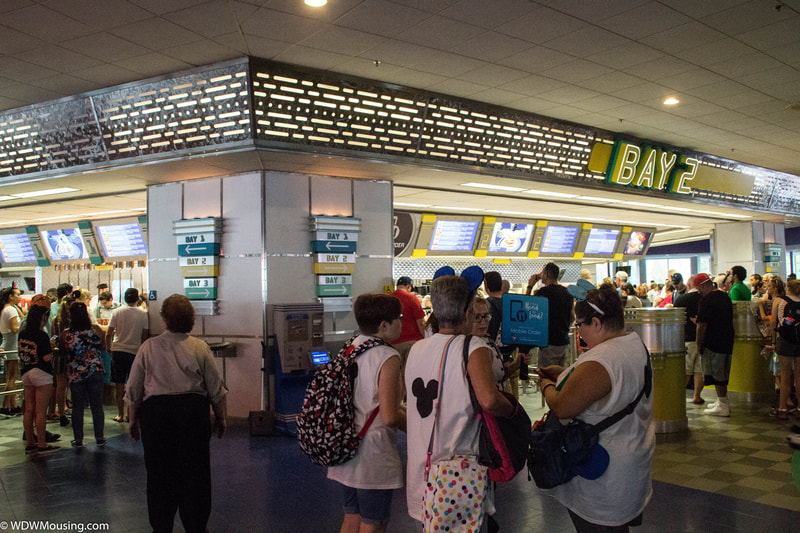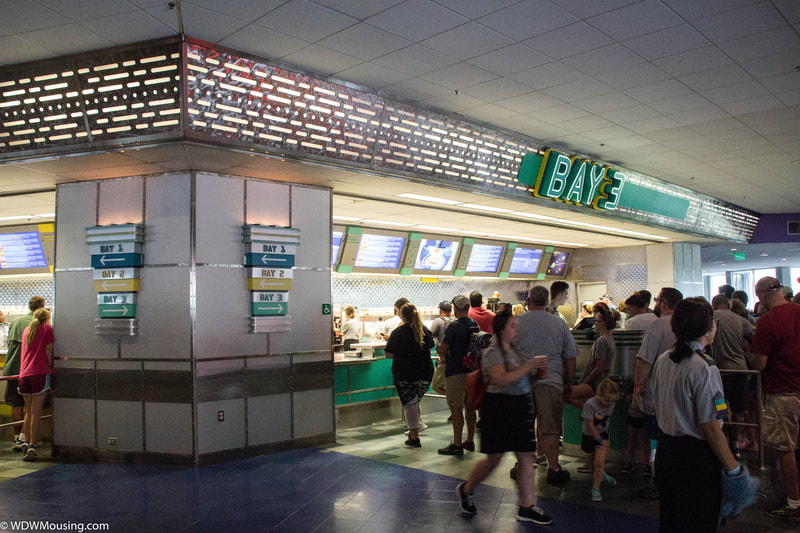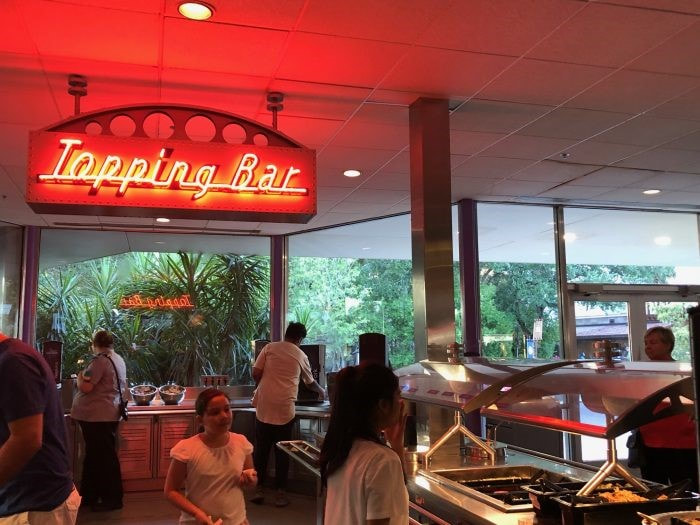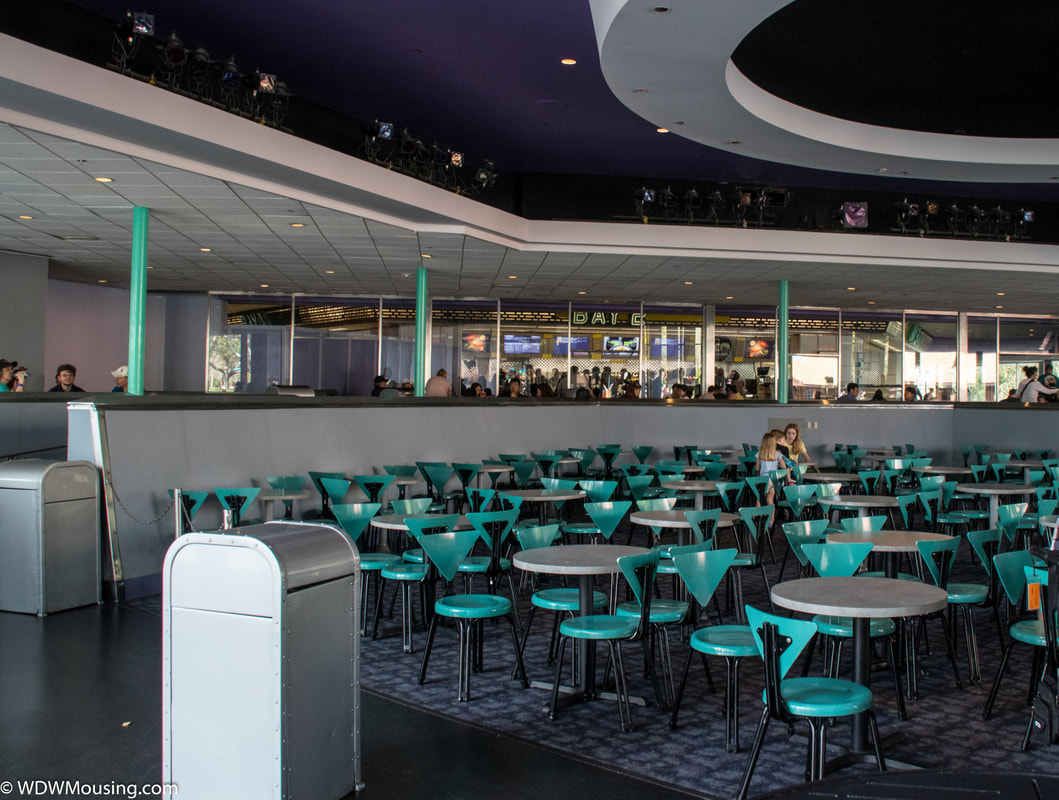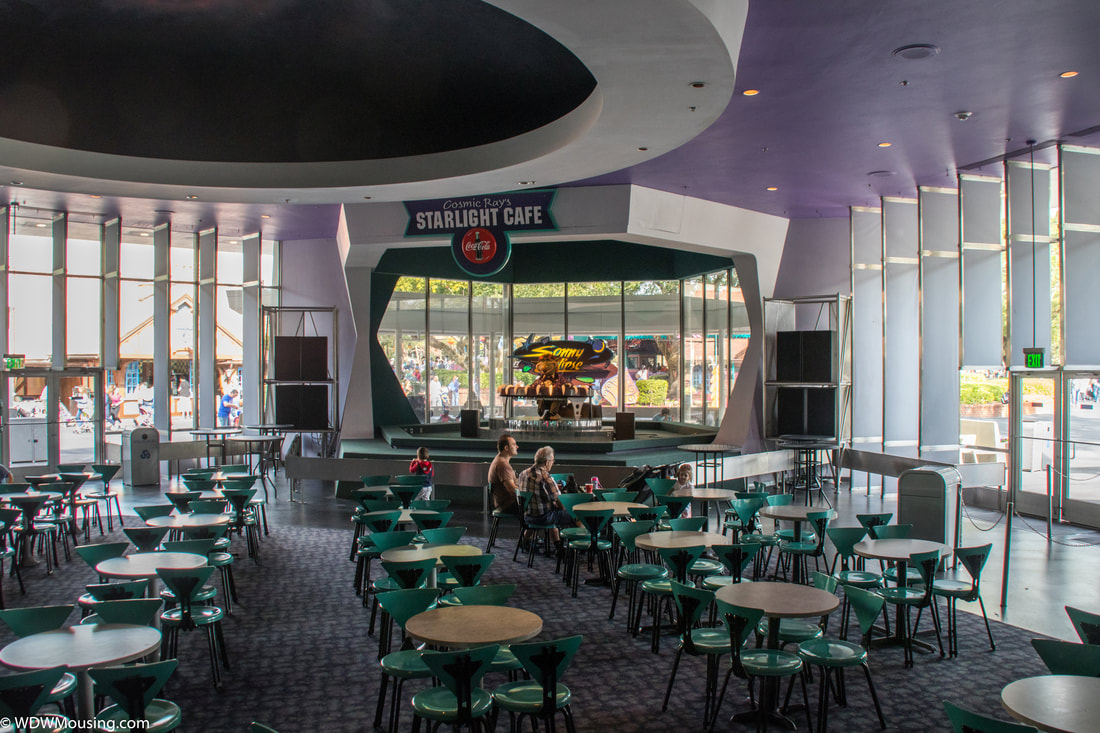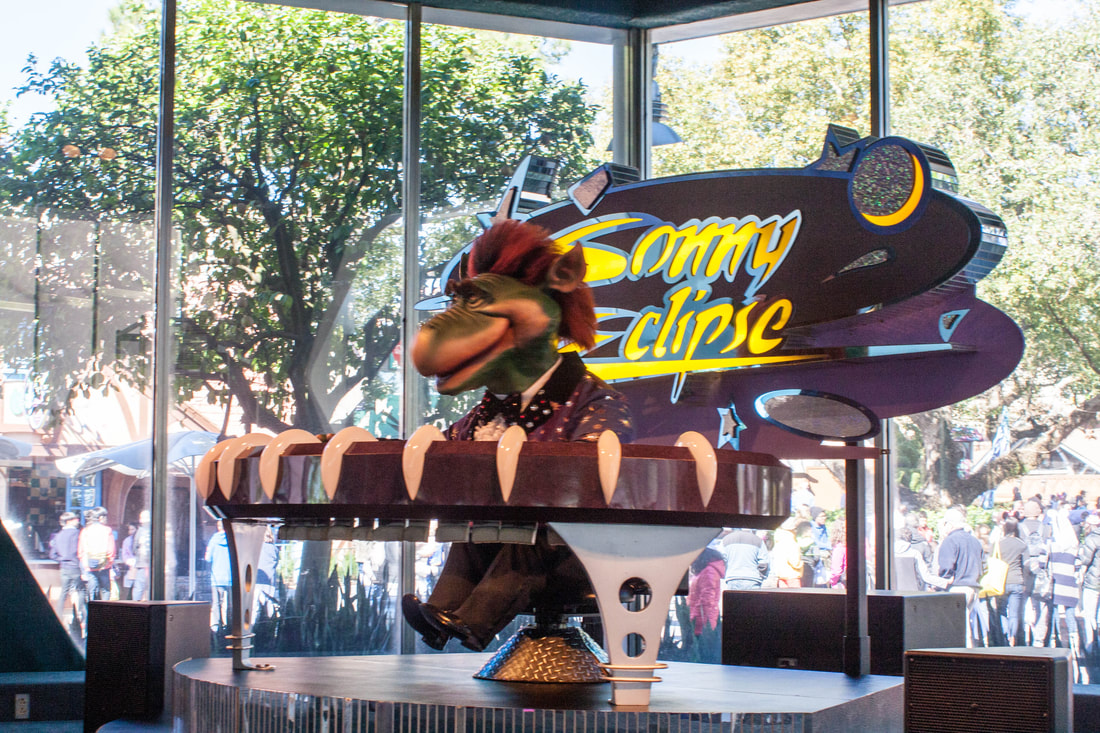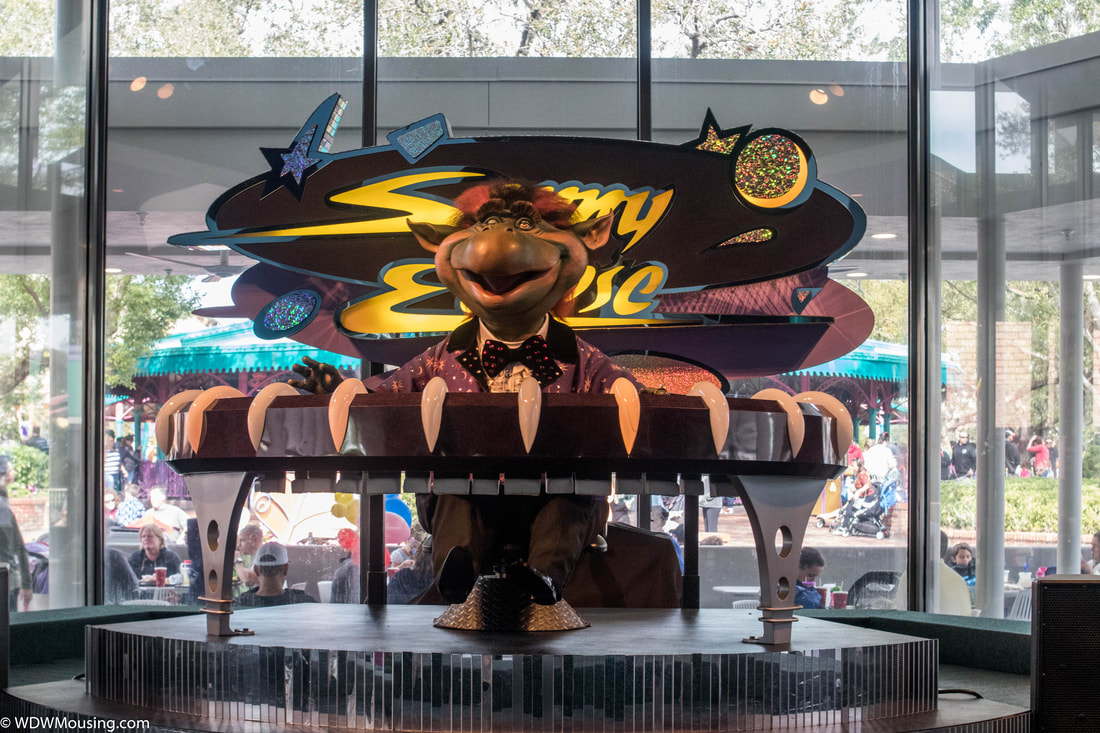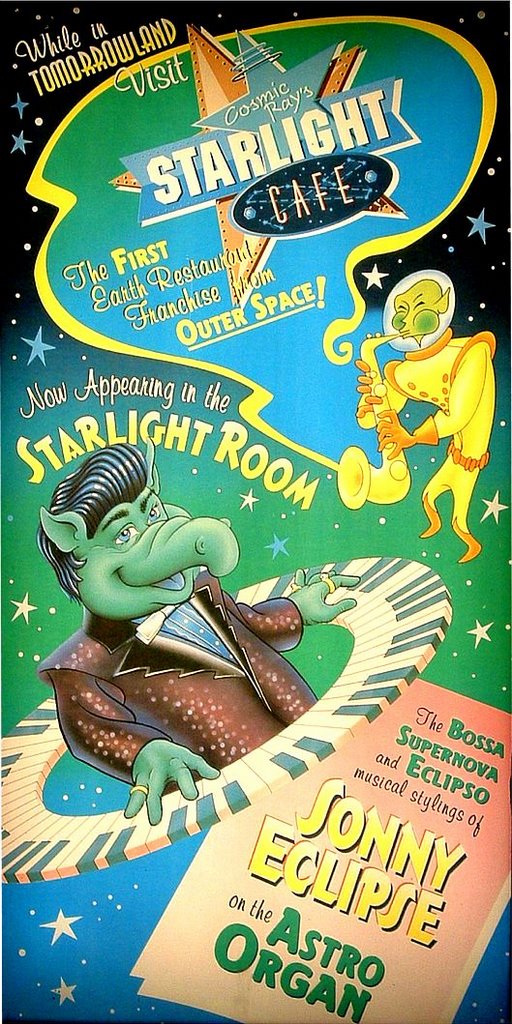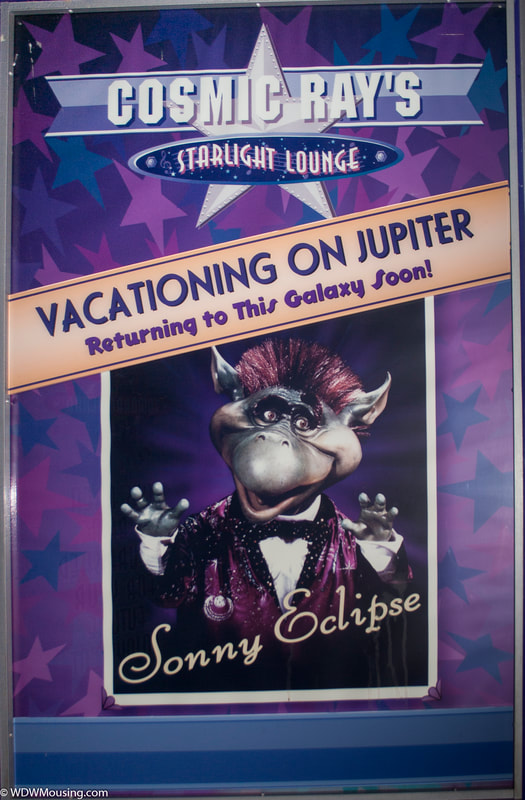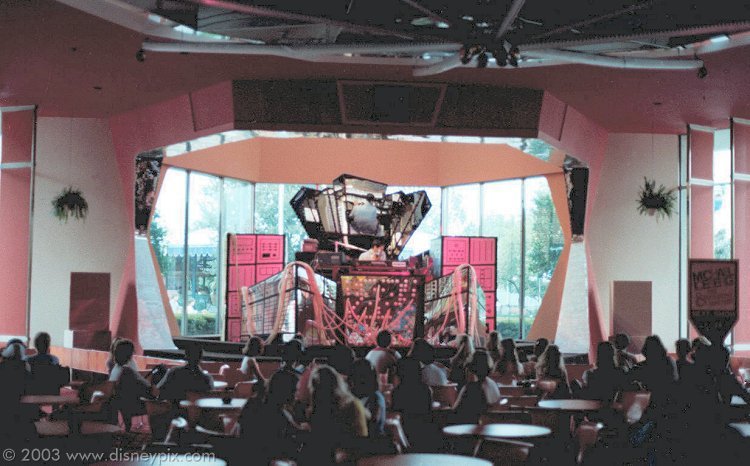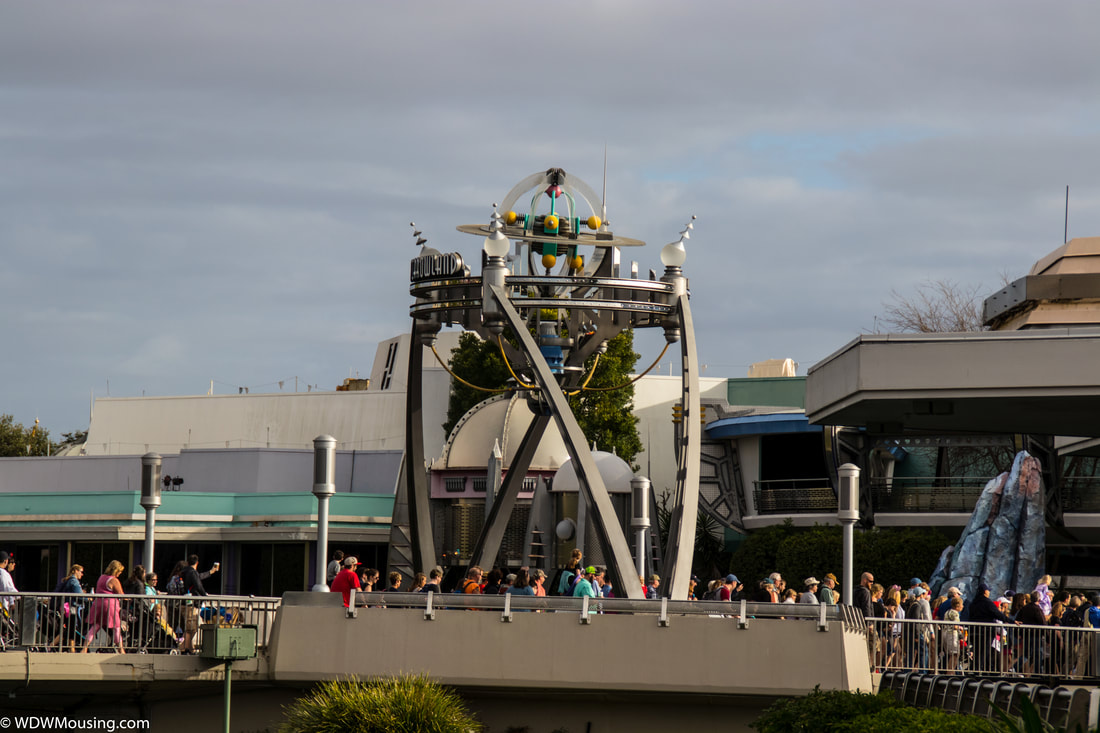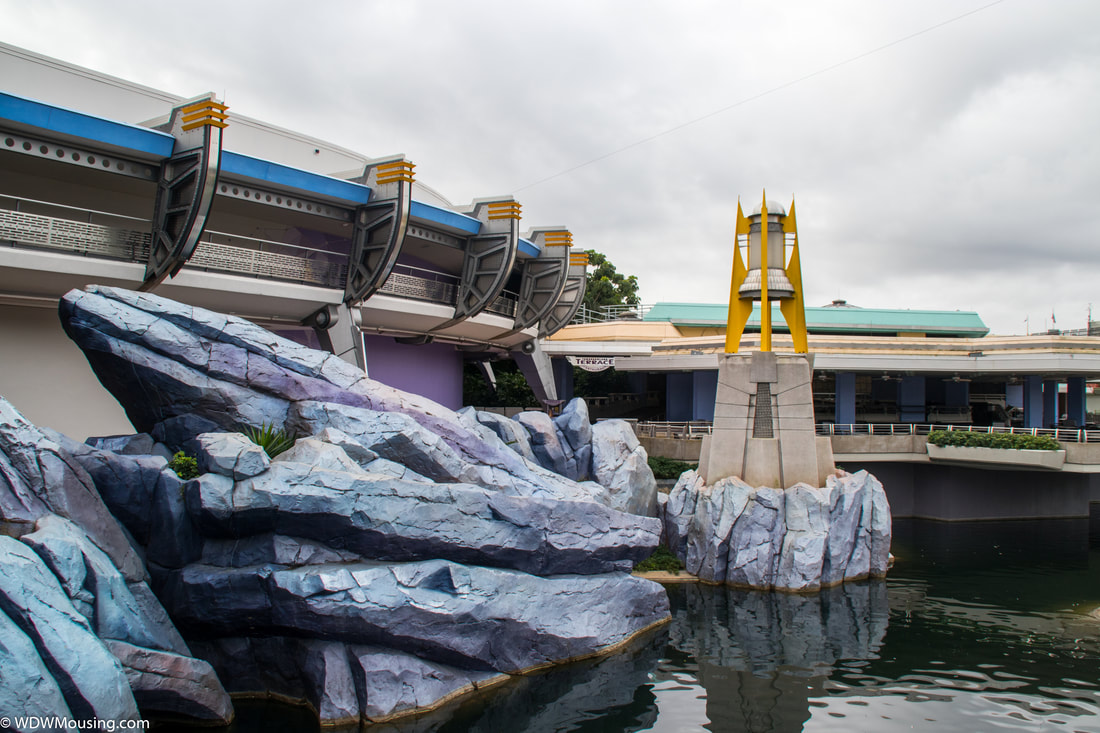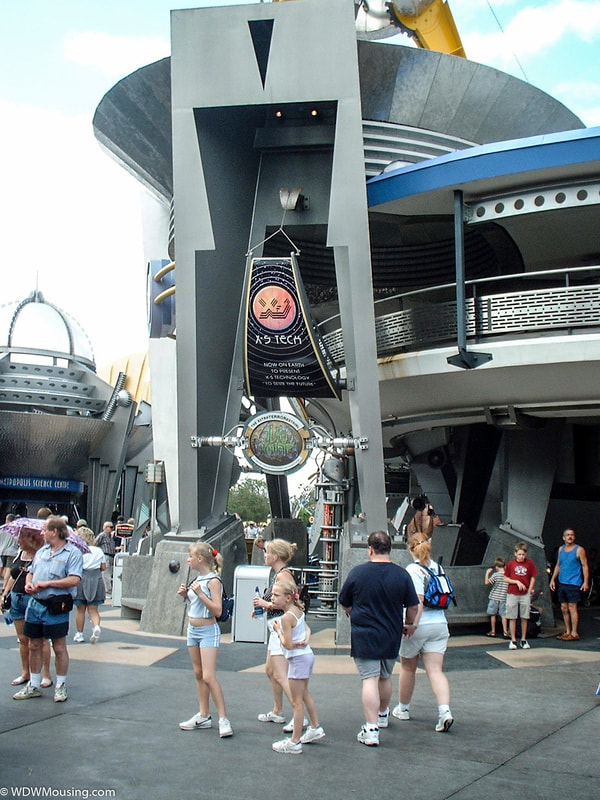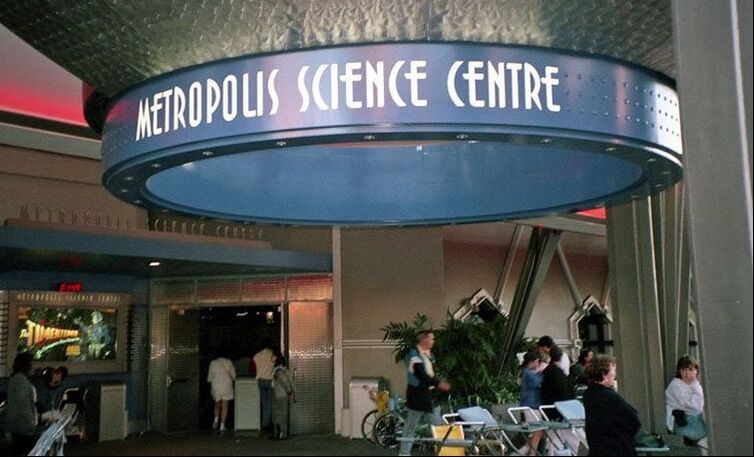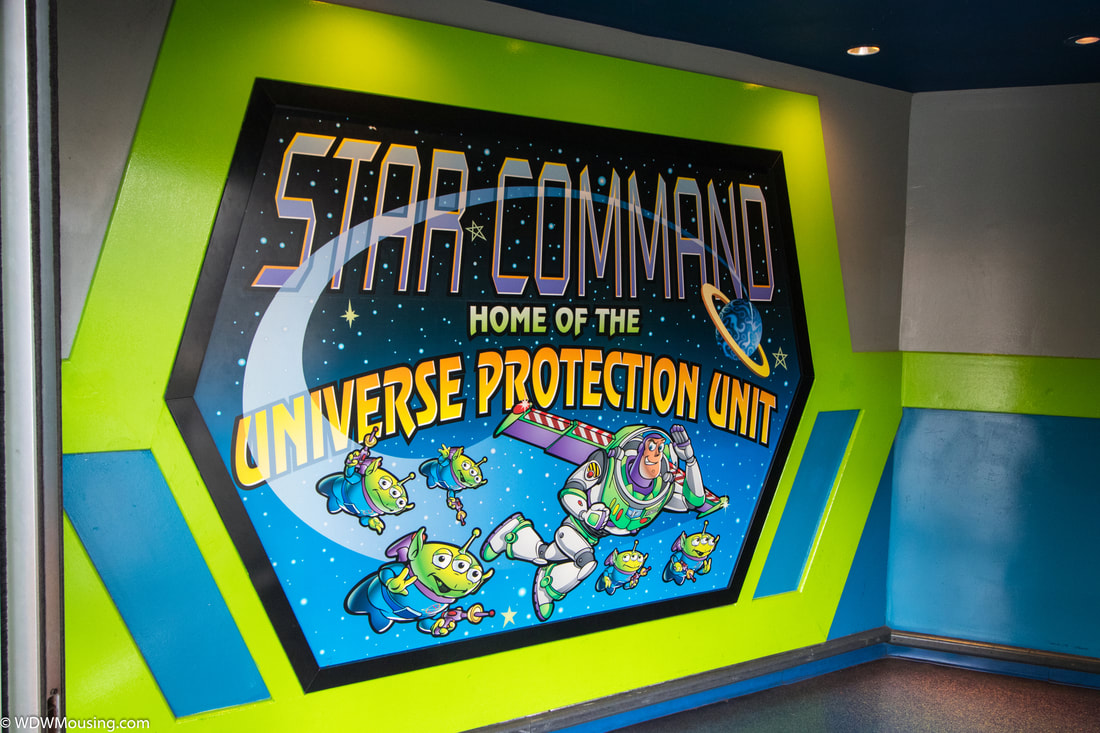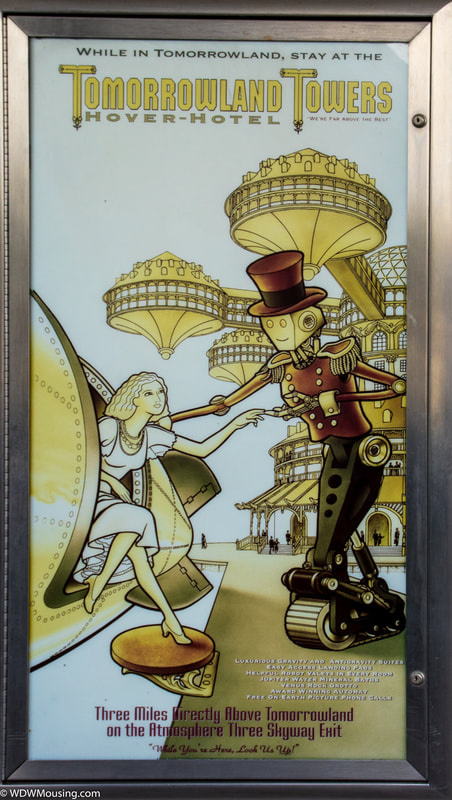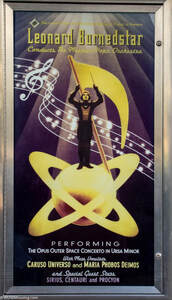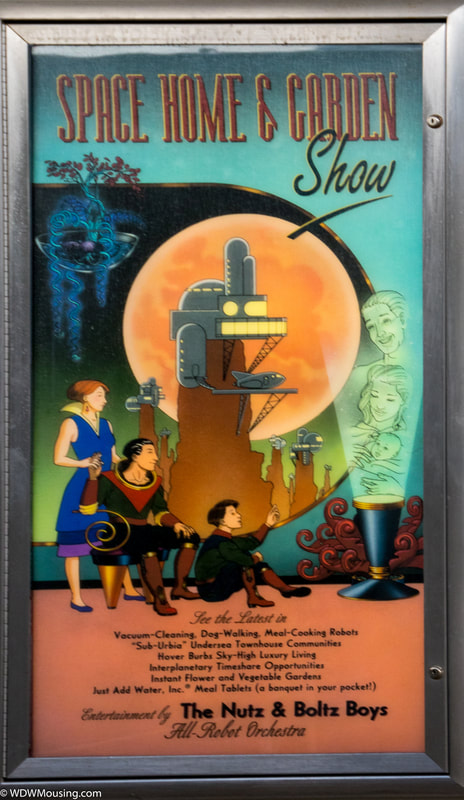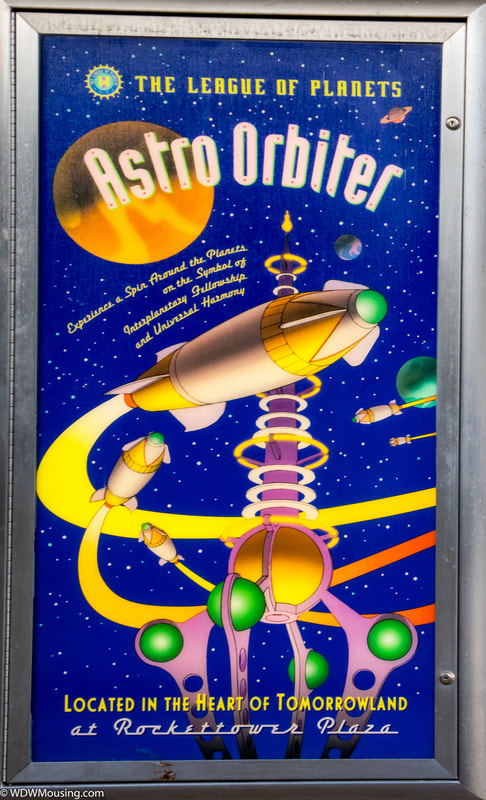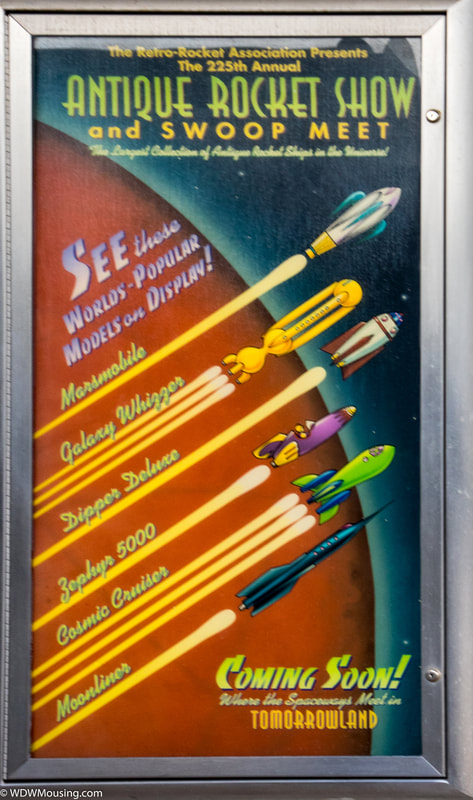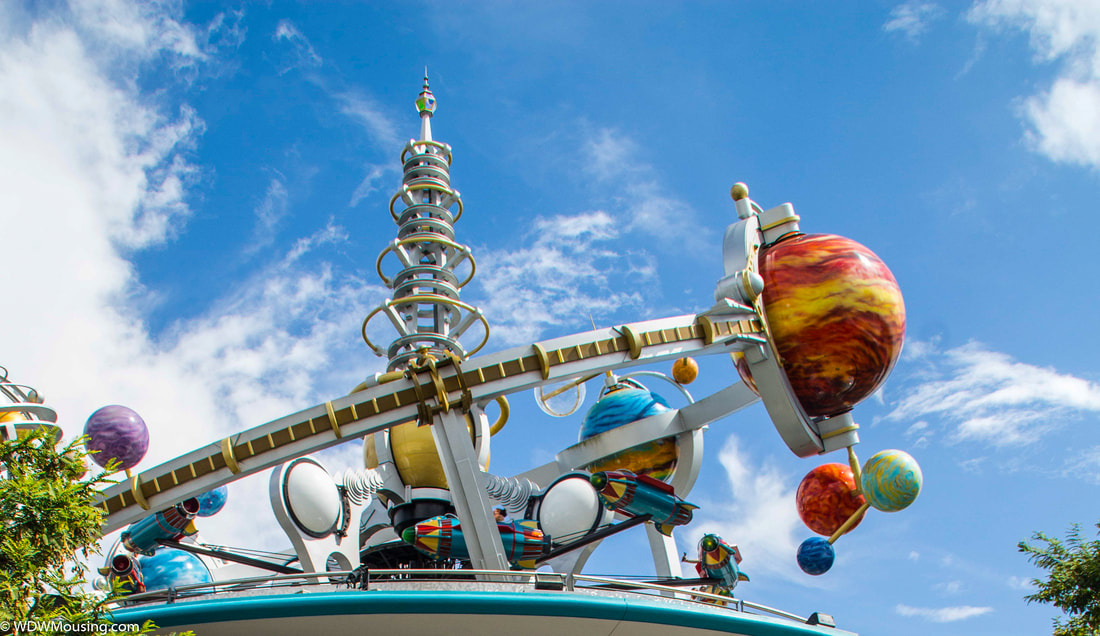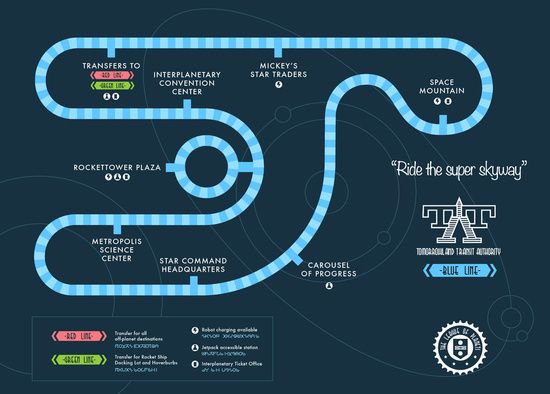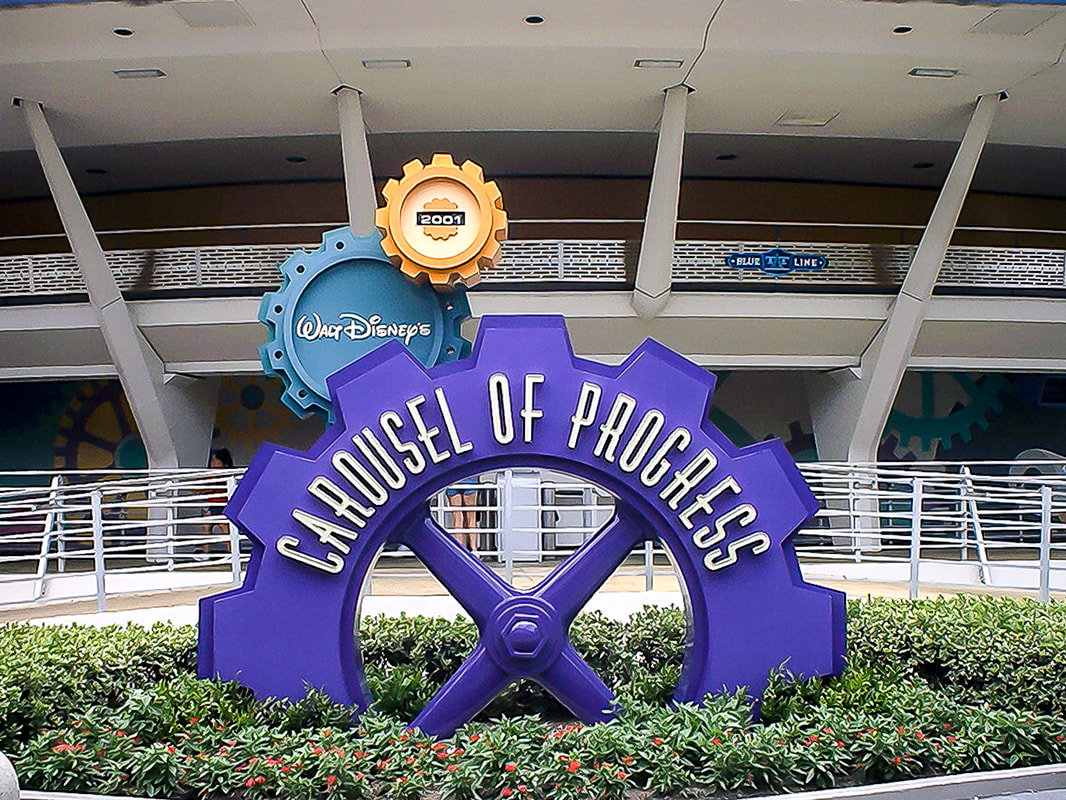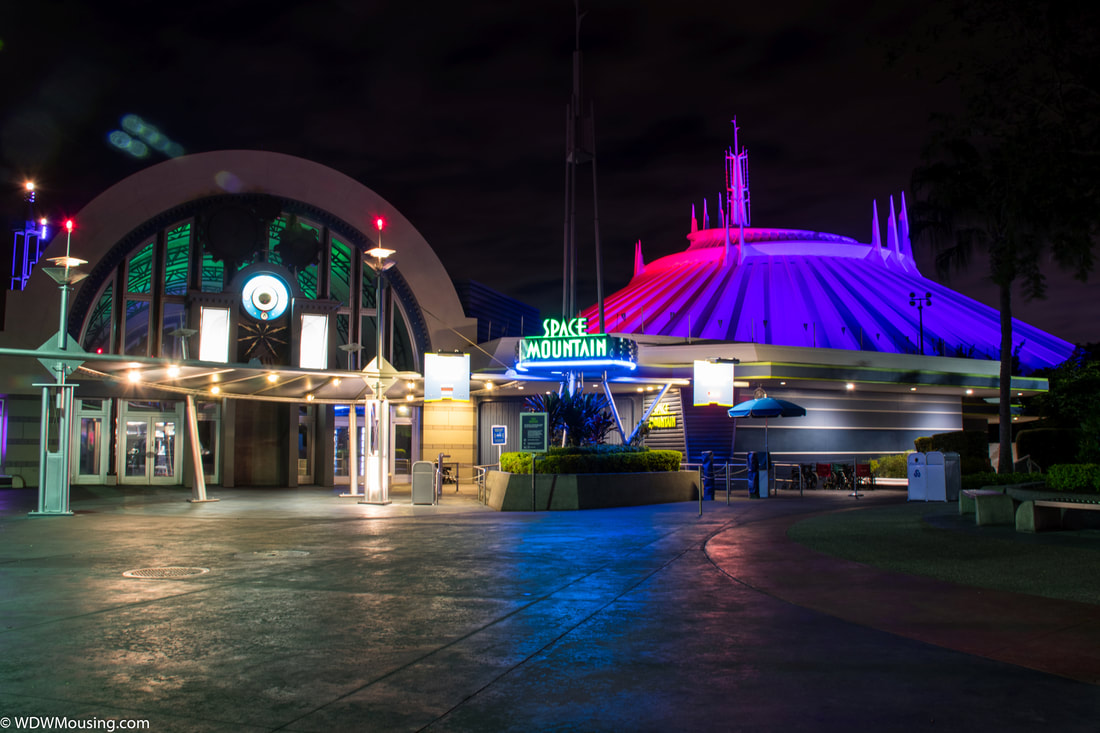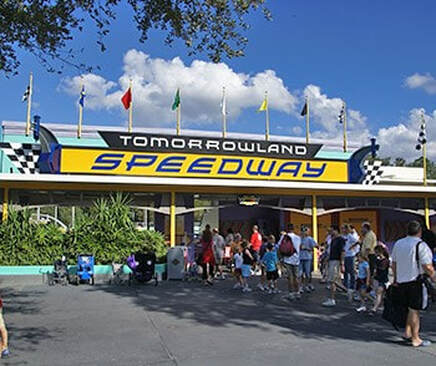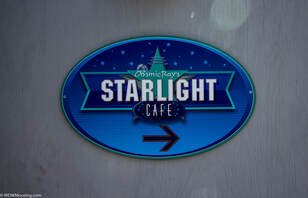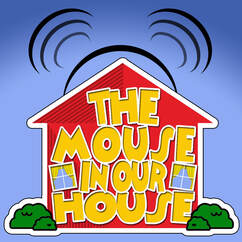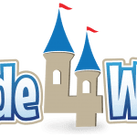Chapter 28 - Magic Kingdom - Tomorrowland - Part 4 posted 7/1/19
Tomorrowland took a long time to develop and over the years has gone through many conceptual changes and updates. When Walt Disney World opened in 1971, Tomorrowland was an unfinished project, only two attractions existed, Grand Prix Raceway and the Skyway. It was still waiting for a concept. A few months later America the Beautiful and Flight to the Moon opened. It wasn’t until 1973 that the plans for Tomorrowland were finalized. In 1974 Star Jets were built, these were cousins of the Disneyland Rocket Jets. In 1975, Space Mountain and Carousel of Progress were opened, later followed by the WEDWay Peoplemover. Walt Disney World Tomorrowland now somewhat resembled Disneyland's Tomorrowland.
The 1994 Tomorrowland went through drastic changes. Star Jets became the Astro Orbiter, Alien Encounter replaced Mission to Mars, then in 2003 it was refurbed to Stitch’s Great Escape, Circle-Vision 360 updated to TimeKeeper, which in 2006 became Monster’s Inc. Laughing floor, Delta Dreamflight in 1998 transformed into Buzz Lightyear’s Space Ranger Spin. The new genesis of Tomorrowland was now billed as “The future that never was”. Walt Disney World’s Tomorrowland no longer tried to depict the near future, this new version represented an intergalactic community depicted by Science Fiction writers of the 1920’s and 1930’s.
The 1994 Tomorrowland went through drastic changes. Star Jets became the Astro Orbiter, Alien Encounter replaced Mission to Mars, then in 2003 it was refurbed to Stitch’s Great Escape, Circle-Vision 360 updated to TimeKeeper, which in 2006 became Monster’s Inc. Laughing floor, Delta Dreamflight in 1998 transformed into Buzz Lightyear’s Space Ranger Spin. The new genesis of Tomorrowland was now billed as “The future that never was”. Walt Disney World’s Tomorrowland no longer tried to depict the near future, this new version represented an intergalactic community depicted by Science Fiction writers of the 1920’s and 1930’s.
In this Chapter, we will finish our pictorial tour of Tomorrowland by visiting the following attractions:
Space Mountain - Starport Seven-Five
Tomorrowland Light & Power Co.
Cool Ship
Auntie Gravity’s Galactic Goodies
Mickey’s Star Traders
Merchant of Venus
Tomorrowland Speedway
Cosmic Ray’s Starlight Café
Space Mountain - Starport Seven-Five
Tomorrowland Light & Power Co.
Cool Ship
Auntie Gravity’s Galactic Goodies
Mickey’s Star Traders
Merchant of Venus
Tomorrowland Speedway
Cosmic Ray’s Starlight Café
Space Mountain
Intro/History
Walt Disney originally conceived the idea of a space-themed roller coaster for Disneyland.
In 1964, Walt approached designer John Hench with his concept and idea for a new attraction in Disneyland that would be the focal point of a renovated Tomorrowland planned for 1967. His concept was a "Space Port" that would include an indoor dark high-speed outer space-themed roller coaster with special lighting effects. It was originally called "Space Voyage" and by 1966 the attraction concept was refined by John Hench and the WED Imagineers and finalized plan called "Space Mountain". WED partnered with Arrow Development Company to design Space Mountain roller coaster system.
However, the computations that they needed to calculate the best path for the tracks wasn’t possible yet.
In the late 1960’s, with the focus on planning and building Walt Disney World, the “Space Voyage” project for Disneyland was postponed.
Walt Disney originally conceived the idea of a space-themed roller coaster for Disneyland.
In 1964, Walt approached designer John Hench with his concept and idea for a new attraction in Disneyland that would be the focal point of a renovated Tomorrowland planned for 1967. His concept was a "Space Port" that would include an indoor dark high-speed outer space-themed roller coaster with special lighting effects. It was originally called "Space Voyage" and by 1966 the attraction concept was refined by John Hench and the WED Imagineers and finalized plan called "Space Mountain". WED partnered with Arrow Development Company to design Space Mountain roller coaster system.
However, the computations that they needed to calculate the best path for the tracks wasn’t possible yet.
In the late 1960’s, with the focus on planning and building Walt Disney World, the “Space Voyage” project for Disneyland was postponed.
Note: John Hench was an artist, designer and creative director at Walt Disney Company. For 65 years, he helped design and develop various Disney attractions and theme parks. (See Chapter 8 & 20)
Note: Arrow Development Company built the ride systems for many of Disney's original and early rides including the Tea Cups, Carrousel, Mr. Toad's Wild Ride and Snow White's Adventures. (See Chapters 20, 21, 22)
Note: Arrow Development Company built the ride systems for many of Disney's original and early rides including the Tea Cups, Carrousel, Mr. Toad's Wild Ride and Snow White's Adventures. (See Chapters 20, 21, 22)
By the early 1970s, technology finally caught up with John Hench’s ideas. Walt Disney World had the room, so Space Mountain was built and opened first in Walt Disney World in January 1975.
Disneyland installed their version of Space Mountain in 1977.
Over the years, Space Mountain in Walt Disney World has undergone a number of changes since its opening, including complete replacement of the ride trains in 1989 and 2009, upgrades to incorporate modern roller coaster technology, and cosmetic renovations to its entry, queue, and post-show elements, which were necessitated by changes in its corporate sponsorship over the years.
During the dedication a plaque was placed at the base of Space Mountain which read:
“ONE GIANT STEP… Dedicated to the men and women whose skills, sacrifice, courage and teamwork opened the door to the exploration of man’s exciting new frontier…outer space. Because they dared to reach for the stars and the planets, man’s knowledge of his universe, earth and himself has been greatly enriched. Presented by missile, space and range pioneers. January 15, 1975.”
Space Mountain is the oldest operating roller coaster in the state of Florida.
Disneyland installed their version of Space Mountain in 1977.
Over the years, Space Mountain in Walt Disney World has undergone a number of changes since its opening, including complete replacement of the ride trains in 1989 and 2009, upgrades to incorporate modern roller coaster technology, and cosmetic renovations to its entry, queue, and post-show elements, which were necessitated by changes in its corporate sponsorship over the years.
During the dedication a plaque was placed at the base of Space Mountain which read:
“ONE GIANT STEP… Dedicated to the men and women whose skills, sacrifice, courage and teamwork opened the door to the exploration of man’s exciting new frontier…outer space. Because they dared to reach for the stars and the planets, man’s knowledge of his universe, earth and himself has been greatly enriched. Presented by missile, space and range pioneers. January 15, 1975.”
Space Mountain is the oldest operating roller coaster in the state of Florida.
|
Sponsorships
RCA (1975-1993) From 1975 to 1993, Space Mountain was sponsored by RCA. The left entrance wall had the words "Space Mountain" displayed in bold, blue colored letters. The RCA logo was above this, and under the Space Mountain lettering was the slogan "A Journey Through Time and Space”. In 1989 RCA had the entrance cosmetically refurbished. The entrance walls were repainted with the 1975 white and blue color scheme, but with solid and different patterns. The left entrance wall featured a new RCA logo
The RCA logos atop the pylon were removed, and a new three seater vehicle replaced the old four seater vehicle that was attached to the pylon, a result of the original trains on the ride being replaced by the current trains.
The left hand entrance wall, that served for years as the signage for Space Mountain was demolished in the 1994 refurbishment. The right hand entrance wall was now used for signage and simply had the words "Space Mountain" |
For the first year or two of operation, a model of an RCA communications satellite was on display. After that, a flying saucer with RCA's Nipper mascot ("His Master's Voice") replaced the satellite.
|
FedEx (1993-2004)
|
Minor changes were made to the entrance doors, color schemes were tweaked, and new warning signs were posted. The real modification to Space Mountain in 1994 was the construction of the Light & Power Co. building next door. Guests would now exit Space Mountain directly into a shop.
FedEx ended their sponsorship of Space Mountain in 2004 and most of their insignias were removed at that time. |
In 1994, FedEx took over sponsorship of Space Mountain which coincided with the Tomorrowland refurbishment. The pylon tower was replaced with one featuring the new Space Mountain font and FedEx sponsorship. The only noticeable change would be the addition of FedEx logos. The mountain’s structure was left completely unchanged.
|
From 2005 to present Space Mountain has not had a Sponsor
|
In the 2009 refurbishment, the Skyway terminal was partially demolished to create an expanded entry plaza. The existing infrastructure was not changed significantly, although the orange tones in the pylon were replaced with a lime green. The murals in the entry building were also changed accordingly to fit the boarding station's new theme.
In 2010, Space Mountain received a major refurbishment. The refurbishment gave the ride a sci-fi futuristic look. While the ride experience itself was unchanged, however the sound system was renovated to receive "Starry-O-Phonic Sound" effects which included 60 speakers, the new sound effects played throughout the mountain, including effects in the energy and wormhole tunnels, to further enhance the ride experience. The loading station, which originally had no ceiling, was roofed over, to reduce the amount of light visible inside the dome. The TTA's exit from the Space Mountain dome was also modified with an extended wall, to achieve a similar effect. The décor was refreshed, and the lighting replaced. Each vehicle has a paint stripe on each side that includes a slash of phosphorus.The paint is illuminated by black lights in the loading area, creating the effect of lights streaking through space as your rocket zips around the track. |
Structure
Every Disney fan recognizes the unique design of Space Mountain’s exterior.
Every Disney fan recognizes the unique design of Space Mountain’s exterior.
Imagineers constructed this building in a novel way. They placed the structural beams outside where the series of 74-ton concrete beams comprise the cone of the design. The 72 beams are identical: 117 feet long with a base width of 13 feet that narrows to four feet at the top.
One of the main reasons for doing this was so that stars and lighting could be displayed on the ceilings and walls as part of the space-like transportation experience. A smooth surfaces was needed in order to really set the effect, and internal supports would have taken up space on the inside and prevented a smooth surface.
One of the main reasons for doing this was so that stars and lighting could be displayed on the ceilings and walls as part of the space-like transportation experience. A smooth surfaces was needed in order to really set the effect, and internal supports would have taken up space on the inside and prevented a smooth surface.
Because of the massive size of Space Mountain Disney officials were worried that it would outshine Cinderella Castle. To avoid this, they intentionally built it 15 feet lower than the rest of Tomorrowland, which unexpectedly aided the ride. The lower placement meant that the line queue is almost underground, which makes it dark and the air conditioning makes it chilly. Guests feel like they’re in space as they enter the building.
|
In designing Space Mountain the roller coaster, Disney Imagineers used extremely early modeling technology to plot the track paths. To layout a single curve took the body of a day and Space Mountain has many curves. The Imagineers counted on the rapid improvement of computer processing power to bring them closer to their goal. They assumed that according to Moore’s Law within ten years the computing technologies will be advanced enough for their quest to build a better roller coaster.
Space Mountain was several computer generations ahead of its time. It was new and completely cutting edge for its time. The computer systems put into place allowed the system to determine the weight within the vehicles and control the speed at which the ride vehicles moved through drops and different points within the ride. This is now a common practice in place for most roller coaster that is constructed today, but that was ground-breaking during the time Space Mountain was built. |
Note: Moore's Law. Moore's Law is a computing term which originated around 1970; the simplified version of this law states that processor speeds, or overall processing power for computers will double every two years.
Space Mountain's Backstory
As with most of the attraction throughout Walt Disney World, the backstories will continuously change or are updated as the attractions are refurbished or redesigned. This is also true with Space Mountain.
In its original incarnation, Space Mountain fit nicely into the Space Age theme of the late 70’s Tomorrowland. Like the 1970’s Tomorrowland, the attractions backstory focused on space exploration. But when Tomorrowland underwent an extensive refurbishment in 1994, Tomorrowland became retro-futuristic. To stay in theme with the Tomorrowland being an intergalactic community, Space Mountain’s new backstory supported that theme by becoming a bustling spaceport based on tourism.
As with most of the attraction throughout Walt Disney World, the backstories will continuously change or are updated as the attractions are refurbished or redesigned. This is also true with Space Mountain.
In its original incarnation, Space Mountain fit nicely into the Space Age theme of the late 70’s Tomorrowland. Like the 1970’s Tomorrowland, the attractions backstory focused on space exploration. But when Tomorrowland underwent an extensive refurbishment in 1994, Tomorrowland became retro-futuristic. To stay in theme with the Tomorrowland being an intergalactic community, Space Mountain’s new backstory supported that theme by becoming a bustling spaceport based on tourism.
Background Music
|
When Space Mountain opened in 1975, it was sponsored by RCA.
From 1975 to 1985, the entrance and exit building had overhead speakers playing the big band and orchestral portion of RCA's song "Here's to the Future and You". |
in the Zig-Zag corridor near the loading station remain original from 1975. (For a brief period in the late '70s, RCA switched the song over to "Colortrak Keeps The Color On Track!” in reference to the company's new line of Colortrak TVs.)
The warning spiel for the trains, and most sound effects are also original from 1975. Riders could hear music to the song "Music Makers" and "Sentimental Journeys" where the left and right side unload corridors merged to form the line for the post show.
The warning spiel for the trains, and most sound effects are also original from 1975. Riders could hear music to the song "Music Makers" and "Sentimental Journeys" where the left and right side unload corridors merged to form the line for the post show.
|
As guests left the attraction, they were again treated to a lyrical version of “Here’s To The Future and You.” |
“Here’s to the future, here’s to the future, here’s to the future and you.
It’s a world full of color, of perfect harmony, a world full of music, a living melody.
The dreams of tomorrow are beginning today, it’s a world of discovery, the world of RCA.”
It’s a world full of color, of perfect harmony, a world full of music, a living melody.
The dreams of tomorrow are beginning today, it’s a world of discovery, the world of RCA.”
In 1985 RCA removed their theme song, and instead commissioned new generic music for Space Mountain. Since 1985 there is no outside area music around the exit and entrance building. Only the current warning narration spiel is played. In the lobby a composition to RCA's song "We've Come So Far" can be heard and has remained since 1985. When riders unloaded from their ride vehicle, they entered the ride's post-show, which was also accessible for those who decided not to experience the main roller coaster ride. From 1985 to 2005, the unload and merger corridor both had a slightly different soft tune to RCA's new song "We've Come so Far". The main version of "We've Come So Far", which included sung lyrics, was heard in the exit tunnel until RCA's sponsorship ended. A single, low-quality recording is all that exists of the version with singers, and was posted to YouTube on March 6, 2014.
|
In 2005, this was replaced with a musical score commissioned for Disneyland's newly refurbished Space Mountain.
|
In 2010, the underlying musical score was composed by Mike Brassell, who also serves as the current narrator for the Tomorrowland Transit Authority PeopleMover and Living with the Land attractions.
The score incorporates motifs from Michael Giacchino's score for Disneyland's version.
The score incorporates motifs from Michael Giacchino's score for Disneyland's version.
Note: Michael Giacchino is a composer best known for his compositions for Pixar feature films including The Incredibles (2004), Ratatouille (2007), Up (2009), Cars 2 (2011), and Inside Out (2015). He has received multiple Grammy awards, an Emmy, Golden Globe Award, and Academy Award.
Sources:
Sources:
- https://www.celebrationspress.com/2018/05/20/5-facts-about-space-mountain/
- https://disney.fandom.com/wiki/Michael_Giacchino
Let’s get on to the attraction!
Queue
In 1975, guests entered a spacious lobby that was simple black and blue walls with various yellow and orange angular designs. There were also floor to ceiling mirrors, support columns, and blue lighting under the floor. The floors themselves were made out of a combination of plastic and vinyl and featured black textured circles sticking out of the flooring. The rest of the inside of the structure, with the exception of the warning film, and the changes made to the vehicles, remains nearly the same from 1975.
In 1975, guests entered a spacious lobby that was simple black and blue walls with various yellow and orange angular designs. There were also floor to ceiling mirrors, support columns, and blue lighting under the floor. The floors themselves were made out of a combination of plastic and vinyl and featured black textured circles sticking out of the flooring. The rest of the inside of the structure, with the exception of the warning film, and the changes made to the vehicles, remains nearly the same from 1975.
|
In 1994, FedEx became the sponsor. In the queue, while guests waited for their rockets, monitors above them played the futuristic but funny "SMTV" video, which featured Space Mountain mission control notifying them on the status of the vehicles and channel surfing to find a newscast to keep them up to date on what's happening around the galaxy. The loop also features commercials for Crazy Larry's Used Spaceships, which featured Charles Fleischer, the voice of Roger Rabbit, as the titular dealership owner, and several sci-fi themed ads promoting FedEx's delivery service.
The warning film has so far changed only three times. The original in 1975, and two updated versions both in 1985 and 1994. The FedEx footage was removed in 2005. The queue areas ran an entertaining loop that was supposedly Space Mountain Mission Control channel surfing on the Space Mountain satellite. Much of the news visuals consisted of z-grade science fiction movies and vintage space footage. |
|
Clips included:
|
|
In April 2009 Space Mountain closed for refurbishment. The Space Mountain now includes visuals intended to enhance the Tomorrowland theme of Space Mountain’s place in the intergalactic transportation system. With the queue themed as the Spaceport’s Mission Control Center.
After the guests enter the building, the queue opens into a large room filled with small, silver, ball-pit like balls. The room also contains a "star map".
After the guests enter the building, the queue opens into a large room filled with small, silver, ball-pit like balls. The room also contains a "star map".
|
Now as guests enter on the standby line, they start by descending down a steel looking staircase with vintage ‘NASA’ looking posters and portraits on the wall. The line then dips into the "star tunnel", which takes guests under the Walt Disney World Railroad and into the dome containing the actual ride. The queue tunnel runs parallel to the post-show tunnel.
|
|
As guest enter the tunnel, they’ll see with a large advertisement for space travel. The sign reads a sign stating that this is “Starport Seven-Five” which is a reference to the opening of the attraction in 1975. Next is a sign “Welcome Space Travelers – STARPORT SEVEN-FIVE – Your Gateway to the Galaxy.” On the side panel you’ll find references to all the Active Earth Stations, each with a nod to the five Space Mountains around the world.
|
|
Tomorrowland MK-1 (Magic Kingdom) TL Space Station 77 (Disneyland) Discovery Landing Station (Disneyland Paris) Ashita Base (Tokyo Disneyland) HK Spaceport (Hong Kong Disneyland) The Magic Kingdom comes first, followed by Anaheim’s version, which opened in 1977. The Paris version is called Discovery Mountain. In Japanese, “Ashita” means “tomorrow”–fitting since the Tokyo version of Space Mountain is located in Tomorrowland as well. And finally Hong Kong’s version. |
|
Guests then begin to ascend to a second floor, and passes by "space windows" that show planets and spaceships.
In 2009, Disney Imagineers added interactive games along line route to help keep guests entertained. The games are based on classic space-themed video games. In this queue, guests are able to shoot asteroids, collect space junk, and help build a space station. The standby line only has the interactive stations. There are interactive Training Missions stations for up to 86 players at a time, which are easy to play.
|
Reference:
During the end of 2018 as part of a refurb, the interactive games were removed in favor of the Play Disney Parks app, which is a free online interactive app for the mobile phone:
Disney Imagineers replace the game screens with a number of space-maps line the wall referencing the various routes available for travel from the Starport.
Disney Imagineers replace the game screens with a number of space-maps line the wall referencing the various routes available for travel from the Starport.
One star map shows a destination called Disney’s Hyperion Resort which pays tribute to Hyperion Street, the address for the first Disney Brothers studio!
Sources:
Sources:
- https://www.disneytips.com/10-things-love-cosmic-rays-starlight-cafe-walt-disney-world/?utm_source=Mickey+Tips&utm_campaign=7f3e36efa2-MT+Email&utm_medium=email&utm_term=0_9bf0730414-7f3e36efa2-307144285
- https://www.undercovertourist.com/blog/secret-history-space-mountain/
- http://www.disneyfanatic.com/disney-digest-your-insiders-guide-to-the-marquee-attractions-at-walt-disney-world-volume-one/?utm_source=DisneyFanatic.com+Update&utm_campaign=b88b3f3eff-DisneyFanatic_com_Daily_Update_2017-07-06&utm_medium=email&utm_term=0_dfa82c1081-b88b3f3eff-123911141
- https://insidethemagic.net/2014/10/d-tales-3-space-mountain-is-filled-with-hidden-disney-history-from-walt-disney-world-and-beyond/
Ride
Loading Area
The queue continues to turn until the guests are reach the loading station.
The loading station, originally had no ceiling, in 2009 ceilings were installed over the loading station, to reduce the amount of light visible inside the dome.
Loading Area
The queue continues to turn until the guests are reach the loading station.
The loading station, originally had no ceiling, in 2009 ceilings were installed over the loading station, to reduce the amount of light visible inside the dome.
|
Trains The ride has 30 two-car trains, with 15 for each track, though only 13 are usually in operation at any given time. Each train consists of two single-file rocket-shaped cars. From 1975 to 1989, the trains featured two seats, each seat designed to hold two passengers (the front passenger rode in the rear passenger's lap, like Bobsleds), for a total capacity of eight passengers per train. Each rider had his/her own seat belt. In 1989, the current trains were first introduced. They are externally and cosmetically very similar to the originals, and still consisted of two rocket cars joined together. While still seating rider’s single-file, the current trains have three seats per car, with one person per seat, reducing each train's potential capacity from eight riders to six. The 1989 vehicles introduced the use of lap bars, originally using a design with two metal bars on each side until 1998, when the current T-bar style design was introduced. The trains were originally painted white. In the 2009 refurbishment, the trains received new seat fabric and were repainted in a blue and gray paint scheme. |
The Ride
|
|
Unloading Area
The Tomorrowland Station MK-1 name is referenced in the unload areas.
Now that both tracks have a formal name, the unload areas are now referred to as Alpha Lounge and Omega Lounge.
Below are two videos from the Space Mountain Ride:
With the Lights on With the Lights off (the ride is normally done with the Lights off)
With the Lights on With the Lights off (the ride is normally done with the Lights off)
|
|
|
Reference:
- http://www.wdwthemeparks.com/details/magic-kingdom/tomorrowland/space-mountain
- http://www.florida-project.com/walt-disney-world-photos/magic-kingdom/tomorrowland/space-mountain
- https://parkvault.net/tag/space-mountain/page/2/
Post-show
RCA - The Home of Future Living
From 1975-1985, Space Mountain’s post-show was RCA’s “The Home of Future Living,” which showcased how consumer electronics would shape our lives in a "typical" home of the future.
This original RCA post-show combined "cutting-edge" technology, voyeurism and out-of-this-world 1970's visuals to create a view of tomorrow's home.
RCA - The Home of Future Living
From 1975-1985, Space Mountain’s post-show was RCA’s “The Home of Future Living,” which showcased how consumer electronics would shape our lives in a "typical" home of the future.
This original RCA post-show combined "cutting-edge" technology, voyeurism and out-of-this-world 1970's visuals to create a view of tomorrow's home.
"Here's to the future, here's to the future, here's to the future and you
It's a world full of color, of perfect harmony, a world full of music, a living melody, The dreams of tomorrow are beginning today, it's a world of discovery, the world of RCA"
|
|
|
Many of the original presentations of Space Mountain described above did change from 1975-1985. Especially within the Home of Future Living, one upgrade came along circa 1982 and prompted a change in several of the on-screen elements. The kitchen's home shopping channel was replaced by Julia Child giving some cooking instructions and the kids switched to other programs, as well. The overhead product displays right after the house were replaced with yet more TV monitors, where an ad for RCA's SelectaVision video discs showcased scenes from films like "Saturday Night Fever," "The Godfather" and "The Ten Commandments." The voice-over for this section pre-empted the main RCA song with another tune, "Bring the Magic Home with RCA."
Photos Courtesy of: |
|
In 1985 Space Mountain went through a rehab. The Home of Future Living was replaced by "Planet RCA / RYCA-1 Dream of a New World, which showed what life might be like living in a space colony on another planet.
Two descendants of RCA's Home of Future Living can still be found lingering about the post-show. They are the robot boy (formerly Billy) and dog who, from 1985 to 1995, continued to film guests for their TV "appearances."
A new song, "We've Come So Far (Promising Tomorrows)", was commissioned for these scenes.
Two descendants of RCA's Home of Future Living can still be found lingering about the post-show. They are the robot boy (formerly Billy) and dog who, from 1985 to 1995, continued to film guests for their TV "appearances."
A new song, "We've Come So Far (Promising Tomorrows)", was commissioned for these scenes.
FedEx Sponsorship
|
The RYCA-1 sets went through a minor refurb when FedEx took over sponsorship in 1994, and the plot of the show revolved around sending packages across spatial distances using teleportation. The post-show also featured a narration that described what was taking place in each scene.
The exit was redesigned as The FX-1 Teleport and showcased how packages would be sent in the future. It originally had narration that began: "In the future packages will be sent by beams of light!" |
|
Scientists were shown excavating dinosaur bones and beaming them to a lab staffed by a robot and the "Lab Retriever" (a robot dog) holding one of the bones in his mouth.
All traces of FedEx were removed after the company relinquished its sponsorship in 2003. The post-show remained the same until 2009. The narration was removed and replaced with an instrumental score based on Michael Giacchino's music for the updated version of Disneyland's Space Mountain. While signs now explained what was happening. A sign on the wall stated that "Teleportation units digitize and transmit fossils back to the lab." Another sign says "The fossils arrive safely via the lab receiver." |
|
Then in 2009, the post-show received major changes and upgrades along with the rest of the ride.
While aboard the moving platform, still took guests pass multiple rooms and displays, many of which received extensive changes in the refurbishment to appear more futuristic in relation to current-day standards. The scenes are now more directly connected to the spaceport theme of Space Mountain, revolving around promoting different destinations around the universe to which Space Mountain's rockets could take them, adding monitors with various space-aged scenes broadcasting advertisements for the many far off and exotic places Tomorrowland citizens could visit leaving from the Starport. |
Another improvement was the addition of an on-ride photo op. Placed near the beginning of the ride, guests’ pictures were snapped as they speeded by. Photo viewing was placed at the end of the journey and pictures could be obtained in the Tomorrowland Arcade.
Throughout the post-show there are references to current attractions and closed attractions. Space Mountain may be one of the most nostalgic attractions in all of Walt Disney World.
Even on the luggage in the baggage claim, when leaving the unloading area inspecting the futuristic luggage guests can find stickers related to Space Station X-1, an early Disneyland attraction in Tomorrowland in the 1950s, and Mesa Verde, a fictional destination in Horizons at Epcot.
Throughout the post-show there are references to current attractions and closed attractions. Space Mountain may be one of the most nostalgic attractions in all of Walt Disney World.
Even on the luggage in the baggage claim, when leaving the unloading area inspecting the futuristic luggage guests can find stickers related to Space Station X-1, an early Disneyland attraction in Tomorrowland in the 1950s, and Mesa Verde, a fictional destination in Horizons at Epcot.
But instead of packages being beamed to a lab, TV monitors now advertise planetary destinations.
The robot at the beginning of the exit was retained, as well as most of the actual set of the old post- show.
The old lab scene is now a fancy hotel with a robot waiter.
Where the speedramp began, to the left is a console with several hidden features in it.
The robot at the beginning of the exit was retained, as well as most of the actual set of the old post- show.
The old lab scene is now a fancy hotel with a robot waiter.
Where the speedramp began, to the left is a console with several hidden features in it.
|
ln the photos above the far left pane mentions “closed sectors” (these refer to rides that have been closed in the Magic Kingdom) and includes acronym references to:
|
Just above that is a panel named “open sectors” (these note rides that have been added to the Magic Kingdom), which include:
|
|
And in the center is a panel called,"Traffic Codes" these are tributes to several roads in Central Florida:
|
References:
- https://www.waltdatedworld.com
- https://www.retrodisneyworld.com
- https://insidethemagic.net/2014/10/d-tales-3-space-mountain-is-filled-with-hidden-disney-history-from-walt-disney-world-and-beyond/
|
In 2018, another major refurbishment was done to the post-show. The speedramp which had been in place since 1975 was removed and carpeted over.
With the 2018 Space Mountain refurbishment, a number of tributes to the defunct Epcot attraction Horizons were added into the ride.
|
The robot dog in the exit show scenes dates all the way back to the ride’s origins. Back to 1975 when it opened and was sponsored by RCA, the RCA dog, Nipper, at that time was depicted listening to a record player to provide a link to the well-known corporate logo.
With RCA long gone as the sponsor (Fed-Ex was the sponsor in between), the same animatronic animal is now just there to provide atmosphere.
|
Sources:
|
Walk-through the Exit Tunnel:
|
Tomorrowland Light & Power Co.
In 1994, with FedEx taking over sponsorship, the modification to Space Mountain didn’t involve the ride, but the construction of a building next door, called the Tomorrowland Light & Power Company.
The exit from Space Mountain now was directly through a Disney merchandising shop and Arcade.
The backstory for the Tomorrowland Light & Power Co. is that it provides power for the metropolis of Tomorrowland
The exit from Space Mountain now was directly through a Disney merchandising shop and Arcade.
The backstory for the Tomorrowland Light & Power Co. is that it provides power for the metropolis of Tomorrowland
|
From 1995 – 2015 the main sign on the front of the structure read “Video Arcade.” Below the large arched window, chiseled into the surface was the buildings name Tomorrowland Light & Power Co.
The architecture is of an indeterminate period, but gives the appearance of being a power utility building. An interesting note, take a careful look at the center graphics on the front of the building. The transmission waves symbolize when Radio Corporation of America began broadcasting TV (1931) and FM radio (1934) from on top of NYC’s Empire State Building. RCA was purchased by General Electric in 1986. GE was a major corporate sponsor of Tomorrowland from 1964 until 1985 and RCA was the sponsor of Space Mountain from 1975 to 1994. This structure was built 1994 and FedEx was the sponsor at that time!?
But it is now only a retail space and with kiosks for creating personalized MagicBands and cell phone covers.
References: |
The Video Arcade operated slightly more than 20 years until 2015. Then the games and the Video Arcade sign were removed. Space Mountain continued to exit riders into the Tomorrowland Light & Power Co...
|
Tomorrowland – Rockettower Plaza
|
Power Palm Trees
One of the most interesting set of trees in the Magic Kingdom the metallic palm trees located in Rockettower Plaza of Tomorrowland. Throughout Tomorrowland the importance of energy and alternative energy is present. In the Monsters Inc. Laugh Floor, laughter is found to be a powerful generator of electricity for powering Monstropolis.
The Tomorrowland Transit Authority uses Magnetic Energy to propel the trains on the track. Space Mountain uses Light Energy to transport baggage and passengers to the far-reaches of the galaxy. And the Tomorrowland Light & Power Company has developed the ingenious Power Palm Trees. |
The backstory is that these metallic trees capture energy from the sun. They then store this energy in globes (coconuts) that hang from the trees. When the globes are full, the Power Company harvests them and uses the energy to power Tomorrowland. If guests look carefully, you will notice that one of Power Palms is folded up and that particular Palm has no coconuts. That is because the Power Company has already harvested the energy.
(Note: This is just a backstory developed by the Disney Imagineers behind the palms so they would fit in with the overall theme of Tomorrowland. These Palm Trees don’t really collect energy) |
References:
Joffrey’s Revive
Just between the Rockettower Stage and the TTA guests will find the Joffrey’s Revive Coffee Kiosk. It’s the first in the Magic Kingdom. The Kiosk is definitely themed to match its surroundings with the retro-futuristic dome top and color scheme to match and complement the nearby Tomorrowland Transit Authority.
Current Menu:
Now, continuing our touring of the Rockettower Plaza.
Current Menu:
Now, continuing our touring of the Rockettower Plaza.
Skyway (1971 – 1999)
|
As we’ve mentioned before, during the 2009 refurbishment major improvements were made in the Rockettower Plaza, one of them was the removal of the Tomorrowland Skyway Station, which hadn't been used since 1999 and sat vacant. This created a greatly expanded plaza in front of Space Mountain.
The former merchandise store was converted into a Face Painting Kiosk. And the restrooms behind it were enlarged and modernized. More information about the Skyway to Fantasyland (1971–1999) is covered in Chapter 22 – Fantasyland That Once Was Reference:
|
Cool Ship
|
As guests venture around the Rockettower Plaza, they’ll reach a Kiosk called the Cool Ship with a red colored Space Ship parked on top of the Cool Scanner.
The Spacecraft, called the Thirst Rangers, is actually a Trimaxian Drone Ship from the 1986 Disney film, Flight of the Navigator. The spacecraft is probably better recognized in its original form in the boneyard of the Studio Backlot Tour (which closed in 2016) in Disney’s Hollywood Studios |
The slogan on the sign over the Cool Scanner reads
“Delivering Refreshments to a Thirsty Galaxy” Standing below the Cool Scanner guests will get a cool mist of water vapor, great during the hot summers, and at the Kiosk they can get a quick bite and an icy drink.
The Kiosk is designed to look like a futuristic shipping and receiving station. Surrounding the Cool Ship station are a number of crates with galactic shipping labels attached contain alien language Coca-Cola logos, which were actually made by Coca-Cola.
Note that the bar codes on the crates aren’t really bar codes, but Enjoy Ice Codes.
Current Menu: References:
|
But it isn’t the only Spaceship port to be found in the parks.
Disney Vacation Club
Nearby, the Disney Vacation Club Information Booth acts as a landing port for visiting flying saucers, vacationing at the Magic Kingdom.
Disney Vacation Club
Nearby, the Disney Vacation Club Information Booth acts as a landing port for visiting flying saucers, vacationing at the Magic Kingdom.
|
As we've seen in previous Chapters, Tomorrowland’s citizens come in many forms. One, who we believe has returned to his own galaxy was,
Push the Talking Trash Can (1995–2014) Replace by ICan Push the Talking Trash Can was a radio-controlled robot that resides in a Trash Can and made daily rounds throughout Tomorrowland. PUSH was created by Daniel Deutsch, and entertained guests in Tomorrowland from 1995-2014. At one time it was a candidate for "Mayor of Tomorrowland". The robot was puppeteered by a single operator in plain clothes. The transmitter was hidden inside a shoulder strapped gym bag, while the microphone was concealed in the puppeteer hand. The robot contains a voice processor which changed the operator's voice to a high-pitched, nasal register. Since the operator was so close to the robot, Push could interact directly with guests. Source: |
Another citizen of Tomorrowland is,
ICan
ICan is a roaming robot in Tomorrowland that arrived in 2017. He is an actor in blue and silver armor with a disguised Segway as a base, a technique used by Shinjuku's Robot Restaurant in Tokyo. Friendly and helpful, iCan describes himself as a spacefaring newcomer to Tomorrowland.
ICan
ICan is a roaming robot in Tomorrowland that arrived in 2017. He is an actor in blue and silver armor with a disguised Segway as a base, a technique used by Shinjuku's Robot Restaurant in Tokyo. Friendly and helpful, iCan describes himself as a spacefaring newcomer to Tomorrowland.
Note: One of the top tourist attractions in Tokyo are the Robot Restaurants. Located in the Shinjuku nightlife district.
Source:
Source:
At the end of the Avenue of Planets across from the Lunching Pad is merchandising shop called
Merchant of Venus
When Magic Kingdom opened in 1971, it had originally been called the Space Port, in 1994 again as part of the Tomorrowland refurbishment it became the Merchant of Venus. The name, of course, is a pun on Shakespeare’s play The Merchant of Venice.
Merchant of Venus
When Magic Kingdom opened in 1971, it had originally been called the Space Port, in 1994 again as part of the Tomorrowland refurbishment it became the Merchant of Venus. The name, of course, is a pun on Shakespeare’s play The Merchant of Venice.
|
When the Stitch’s Great Escape! attraction opened in 2004, Merchant of Venus became a Stitch merchandise shop. Until 2016, Stitch made his Great Escape through the ceiling of the Merchant of Venus shop.
“Lilo and Stitch: The TV Series” in 2003 audiences would introduced to other Jumba’s creations. Note: Dr. Jumba Jookiba is a major character in Disney's 2002 animated feature film Lilo & Stitch. He is a self-proclaimed evil genius responsible for the creation of the infamous Experiment 626, better known as Stitch and other creatures. A number of these creations or experiments have since made their way to Tomorrowland, where Wanted Posters of them can be seen in the exit from Stitch’s Meet & Greet (see Chapter 25) leading into the “Merchant of Venus” shop. |
In 2016, with the Stitch’s Great Escape closing it became a Star Wars merchandise shop.
While Stitch and friends murals had been covered up in recent years by decorations promoting “Star Wars” and later “Incredibles 2,” this artwork was revealed once again in fall 2018 upon the completion of the limited-time “Incredible Tomorrowland Expo” event.
While Stitch and friends murals had been covered up in recent years by decorations promoting “Star Wars” and later “Incredibles 2,” this artwork was revealed once again in fall 2018 upon the completion of the limited-time “Incredible Tomorrowland Expo” event.
|
Among the experiments featured in the mural pictured to the left are Experiment 458 (Finder), Experiment 501 (Yin), Experiment 319 (Spike), Experiment 606 (Holio), and Experiment 254 (Mr. Stenchy) with the red spaceship Stitch stole at the beginning of his 2002 film flying above them.
While the “Stitch’s Great Escape” attraction has been replaced by the meet and greet, these murals now serve as a window to the not-so-distant past when Stitch and his cousins first invaded Tomorrowland. Reference:
|
Quick Note: Located just between Merchant of Venus and Mickey’s Star Traders are Rest Rooms
Mickey’s Star Traders
|
Mickey's Mart, which was part of the park opening, sold Disney souvenirs and was sponsored by Coppertone Sun-Care products. It closed in 1991 and is now known as Mickey's Star Traders.
Merchandise available includes plush, shirts, Mickey ears, year specific merchandise, beverages, pins, and a wide selection of children's offerings. This was the shop that passengers riding the WEDway PeopleMover would be able to look down at as they passed the windows up above. The shop was remodeled once Stitch's Great Escape opened. The following are pictures of the figures that were removed during remodeling. Mickey's Star Traders is probably the most noticeable shop in Tomorrowland, because guests can see into the shop from the Tomorrowland Transit Authority PeopleMover |
Surrounding the top half of the wall in the shop are futuristic murals.
click to enlarge
The murals contain a number of hunt Mickeys. Mickeys can be found in the headlights of a train, satellite dishes, freeway loops, and several architectural elements of the futuristic buildings.
These murals also include another famous character – Stitch! Look to the bottom corner beneath the train and you’ll see this him racing alongside.
These murals also include another famous character – Stitch! Look to the bottom corner beneath the train and you’ll see this him racing alongside.
References:
Other former Shops
Over the years, Tomorrowland had had several other shops
Beside Mickey’s Mart and Space Port (now Mickey’s Star Traders and Merchant of Venus) there were:
Over the years, Tomorrowland had had several other shops
Beside Mickey’s Mart and Space Port (now Mickey’s Star Traders and Merchant of Venus) there were:
- Film and Glow Kiosk: It sold film and camera accessories. It also carried glow merchandise at night. It later was a Photo Express drop-off point.
- Skyway Station Shop: It sold Disney souvenirs
- Space Place: It carried cameras, film and accessories, candy, Florida T-shirts and sweatshirts.
- Ursa's Major Minor Mart: it was located near the Skyway station.
Source:
Auntie Gravity's Galactic Goodies
|
.untie Gravity, again, a play on words, which fits with the Tomorrowland theme.
The current location for Auntie Gravity's Galactic Goodies as from 1971 - 1994 The Lunching Pad. As part of the major refurbishment in 1994, The Lunching Pad moved to the base of the Rockettower Plaza replacing the Space Bar and the location became Auntie Gravity's Galactic Goodies. Auntie Gravity’s serves down to Earth for a sweet treat: desserts, soft-serve cones, sundaes, floats made with soda, smoothies, fountain soft drinks and milk. Auntie Gravity’s is located in thoroughfare that interconnects Fantasyland into Tomorrowland directly across from the Tomorrowland Speedway. Typically outside of Auntie Gravity is where PUSH, the talking trash used to hang out. |
Current Menu:
Source:
Source:
If guests are looking for something else here are some options:
|
Space Dog Open only during crowded times of year, this minimalist hot dog cart is located between the PeopleMover tracks and Space Mountain. It specializes in, what else, Hot dogs! But it does offer other refreshments and snacks. |
Other Tomorrowland Eateries
But don’t think that this is the only kiosk in Tomorrowland that offers refreshments and snacks, there are a few more around the Rockettower Plaza (but some are only seasonal):
|
Now for a little action.
Tomorrowland Speedway
Tomorrowland Speedway
|
When the Magic Kingdom opened in 1971, the Tomorrowland Speedway was one of the opening attractions. Its original name was the Grand Prix Raceway.
Like many early Magic Kingdom attractions the Speedway traces its origin back to Disneyland where the attraction was known as Autopia. The attraction was extremely popular in Disneyland that it became obvious choice for Walt Disney World. However unlike the Disneyland version of the ride, which was themed to look like a futuristic highway, the Grand Prix Raceway was designed to look like an international car race track. The Grand Prix Raceway was originally sponsored by Goodyear, who supplied tires for all of the attraction vehicles. |
|
Over the years the attractions has seen changes, but not the basic idea of a Raceway. In 1973 the rack was expanded but it was shortened in 1974 to make room for the construction of Space Mountain. In 1987 it was again shortened, this time to make room for Mickey's Birthdayland. (Which became Mickey’s Toontown and now is the Storybook Circus- see Chapter 24).
In 1996 the attraction was renamed the Tomorrowland Indy Speedway, and it was given a futuristic look to coincide with the Tomorrowland theming. Then in 1999 the Indianapolis Motor Speedway sponsored the attraction, the name and theming changed to Tomorrowland Indy Speedway. Several items from the Indianapolis Speedway were added including:
|
The Indianapolis Motor Speedway ended their sponsorship of the attraction in 2009 and the "Indy" was dropped from the name of the attraction.
Again in 2012 the Tomorrowland Speedway was shortened by about 400 ft. in order to make room for the relocated Dumbo attraction in Storybook Circus. Early 2019, the Tomorrowland Speedway closed for rerouting to make room for Tomorrowland's Tron attraction. |
|
Queue
In the queue guests past replicas of Indianapolis 500-style race cars. There are photos depicting the history of Indy racing. Along with images of the Yard of Bricks, the Scoring and Timing Pylon, Gasoline Alley and the unmistakable wing and wheel logo. The loading area of the attraction features panels of the three annual Indianapolis Motor Speedway races — the Indianapolis 500, the Brickyard 400 and the United States Grand Prix at Indianapolis. Other panels depict races around the moon, Saturn and other outer space destinations. |
Ride
The attraction is very popular with younger guests who aren’t old enough yet to drive a real car.
The 4/10 mile track of the Tomorrowland Speedway lets guests to drive a real gas-powered car. The track has four lanes. A guide rails keeps each race car guest their lane. The theming of Tomorrowland
The attraction is very popular with younger guests who aren’t old enough yet to drive a real car.
The 4/10 mile track of the Tomorrowland Speedway lets guests to drive a real gas-powered car. The track has four lanes. A guide rails keeps each race car guest their lane. The theming of Tomorrowland
|
Speedway resembles the famous Indianapolis Speedway. To add to the magic, sounds from a real race track are heard from speakers in each car. The cars are equipped with an acceleration pedal and a steering wheel (the cars reach top speeds of 7.5 mph with the Briggs & Stratton 9hp engines.) The famous announcer Tom Carnegie can be heard announcing the "race" as cars travel around the track. At the end of the race, a checkered flag waves for every rider as they arrive in Victory Circle.
The area is marked by the Indianapolis 500 logo and the display of a winning race car. Note: Tom Carnegie is best known as the "Voice of the Speedway." With his deep and resonant voice he was announcer for the Indianapolis Motor Speedway, from 1946 to 2006. |
Spectators can experience the attraction from the observation bridge, or the grand stand.
There is a Racing Specialties Cart just outside the Speedway that sells assorted racing miniature cars, clothing and hats. And you can even get an Official Speedway License.
|
Speedway History
References:
|
After a day at the track, it’s time for a break. Just across the street from the Tomorrowland Speedway is
Cosmic Ray’s Starlight Café
Cosmic Ray’s Starlight Café
|
Cosmic Ray’s Starlight Cafe is home to the second largest counter service restaurant in the Magic Kingdom. The largest is the Tomorrowland Terrace restaurant which is now only open seasonally, and is the home of the Fireworks Dessert Parties for most evenings.
Lovers of Tomorrowland and its futuristic atmosphere will adore Cosmic Ray’s Cafe for theming alone. However, this isn’t enough to capture the hearts of everyone. Therefore, we’ve compiled a list of the top 10 greatest things about this popular quick-service eatery in Magic Kingdom Park. |
It looks as if almost ever attraction and restaurant in Tomorrowland has had a name change, because the Now Cosmic Ray’s Starlight Café from opening day in 1971 to 1994, until Tomorrowland went through a major refurbishment is was called Tomorrowland Terrace Café. (To understand the change see Chapter 25)
When Cosmic Ray’s Starlight Café opened in 1994, its futuristic appearance matched the Tomorrowland’s new theming very well. |
At one time there were three different ordering areas, or Bays and there were variations in the menu at the three separate bays, which meant at one time that if someone in your party wanted a burger and another person wanted chicken, guests were looking at multiple lines.
|
But now, the three ordering bays are still there, however the menu is the same throughout. So explore a galaxy of appealing options from the out-of-this-world bacon cheeseburgers to chicken breast nuggets to salads to plant-based sloppy joe's, there is something for everyone.
There is also a Toppings Bar that includes variety of options, shredded lettuce, tomato slices, pickles, jalapenos, sautéed mushrooms, and crispy onions. Starlight Café has plenty of seating. Next to Counter Service is a large air conditioned dining area, along with seating around the outside of the restaurant. For current menu: https://disneyworld.disney.go.com/dining/magic-kingdom/cosmic-ray-starlight-cafe/menus/ |
References:
|
But getting a quick meal isn’t the only reason to go to the Cosmic Ray’s Starlight Café, the Cafe also provides entertainment while you eat.
Sonny Eclipse, an alien animatronic, plays and sings for the dining crowd, a continuous stream of stellar tunes. Which provides an extraordinary addition to this Tomorrowland stop. |
Sonny Eclipse at Cosmic Ray’s Starlight Cafe
|
Sonny Eclipse has been entertaining guests at Cosmic Ray’s Starlight Cafe in Tomorrowland at Magic Kingdom Park since 1995.
Before coming to Disney World in 1995, Sonny Eclipse, or rather his audio animatronic, was the baggage screener at Tokyo Disneyland’s Star Tours. From 1976 to the later 1980’s live entertainment by Michael Iceberg and the Iceberg Machine was performed daily on the stage. (More about Michael Iceberg below) Sonny’s hometown is Yew Nork City on Planet Zork. Sonny describes his hometown as a “topsy-turvy town where the subways are up and the streets are down.” |
Sonny’s uses an “out-of-this world” instrument for accompaniment, which is a glowing keyboard-like creation called an Astro-Organ. Sometimes Sonny’s amazing Astro Organ keyboard has a mind of its own and play itself without anyone’s hands on the keys. As Sonny tells it he purchased Astro second-hand; the pawn shop records indicate it was previously owned by a blue Ortolan jizz-wailer named Max Rebo, who claimed he sold it for a song (because once the Red Ball Jett organ came out, the Astro Organ just wasn’t in demand).
Sonny Eclipse’s backup singers are the invisible Space Angels, but no one is sure if they are a trio, a quartet, maybe even more (or less?) The Space Angels first began singing with Sonny during a gig on the planet Mars, but the girls’ planet of origin remains a mystery.
Sonny’s stage crew includes a technician named Mike Feedback, who occasionally pulls double duty as Sonny’s announcer.
Sonny Eclipse’s backup singers are the invisible Space Angels, but no one is sure if they are a trio, a quartet, maybe even more (or less?) The Space Angels first began singing with Sonny during a gig on the planet Mars, but the girls’ planet of origin remains a mystery.
Sonny’s stage crew includes a technician named Mike Feedback, who occasionally pulls double duty as Sonny’s announcer.
Sonny’s repertoire features only original songs – Sonny Eclipse's set list consists of eight songs:
Sonny banters in true lounge-crooner style in between songs.
The voice of Sonny Eclipse is singer and song-writer Kal David.
Note:
- the auto-introductory “My Name is Sonny Eclipse”;
- an untitled ballad about the loveliness of Earth;
- the self-explanatory “Gravity Blues”;
- the 50’s style doo-wop number “Hello Space Angels”;
- the spoonerism performance “Yew Nork, Yew Nork”;
- A jazzy “Starlight Soup and Salad”, which is basically Cosmic Ray’s menu set to music;
- the love song “O Bright Little Star”, dedicated to Sonny’s estranged wife Luna;
- A splendid little upbeat tour of our own solar system entitled “Planetary Boogie”.
Sonny banters in true lounge-crooner style in between songs.
The voice of Sonny Eclipse is singer and song-writer Kal David.
Note:
- He also performed the "Unhealthy Living Blues" for the Goofy About Health exhibit at Epcot’s former Wonders of Life pavilion.
- The songs were co-created by Walt Disney Imagineering and composer George Wilkens, who had previously written and arranged music for the Food Rocks attraction at Epcot’s Land Pavilion from 1994-2004 and the “Honey, I Shrunk the Audience” pre-show at Epcot’s Imagination Institute's theater from 1994-2010.
|
Sonny merges many jokes into his act it seems the cornier the better! (“You know, I recently heard the universe was expanding. Guess it’s time to loosen the asteroid belt!”).
Besides being a singer and comedian in Disney World, he says that he occasionally plays weddings and nightclubs across the galaxy. |
Sonny Eclipse’s Backstory
Sonny is believed to be the cousin of Officer Zzzzyxxx from the Star Tours Spaceport in Tokyo. While Sonny hails from Yew Nork City on the planet Zork, Officer Zzzzyxxx’s employment records suggest he originated in a region called Joo Nerzey on the same planet. Inhabitants of this world call themselves Zorkies and their skin pigmentation can range from standard human fleshtones to more colorful hues like ‘blue or pink or polka dot and purple-green’.
During his act, Sonny makes passing mention of various members of his family, including his six-eyed, twelve-nostriled estranged wife (Luna), his parents (father Sola and mother Parsha), and his mother-in-law (Tota Leigh Clipse), but he never mentions his cousin Officer Zzzzyxxx, the only other member of the Zorkie race who currently resides on Earth. Some theorize that the two had a falling-out over Sonny’s childhood dream to pursue a musical career.
Sources:
Sonny is believed to be the cousin of Officer Zzzzyxxx from the Star Tours Spaceport in Tokyo. While Sonny hails from Yew Nork City on the planet Zork, Officer Zzzzyxxx’s employment records suggest he originated in a region called Joo Nerzey on the same planet. Inhabitants of this world call themselves Zorkies and their skin pigmentation can range from standard human fleshtones to more colorful hues like ‘blue or pink or polka dot and purple-green’.
During his act, Sonny makes passing mention of various members of his family, including his six-eyed, twelve-nostriled estranged wife (Luna), his parents (father Sola and mother Parsha), and his mother-in-law (Tota Leigh Clipse), but he never mentions his cousin Officer Zzzzyxxx, the only other member of the Zorkie race who currently resides on Earth. Some theorize that the two had a falling-out over Sonny’s childhood dream to pursue a musical career.
Sources:
Michael Iceberg and the Iceberg Machine
|
His performance was a foray of lights, smoke, vocals, and of course synthesized noises that not only entertained but had heart and story worked into it.
The show was performed at Walt Disney World's Tomorrowland Terrace where Cosmic Ray's Starlight Cafe currently sits, Disneyland's Tomorrowland Terrace, and also on the Disneyland Space Stage. References: |
Michael Iceberg was a performer at Walt Disney World and Disneyland in the mid-1970s to late-1980s.
Over the years his intense live performances on his Amazing Iceberg Machine. The Iceberg Machine was an elaborate piece of engineering developed by Michael. While the technology was very early in development at the time, Michael compiled a series of different synthesizers and state of the art technology (at the time) to develop a musical performance that demonstrated of his prowess as a keyboard performer and his ingenuity in creating new sounds. The machine itself was a continuously changing conglomeration of technology housed in a large pyramid structure. Source: Contraption Films
|
We’ve now completed our pictorial tour of Tomorrowland and followed the changes over the years. All of the attractions fit together and make the overall Intergalactic community theming that is the current Tomorrowland.
The Tomorrowland Backstory
The theming of Tomorrowland proved to be a challenging effort for Walt Disney because the future was changing so rapidly that the Imagineers couldn’t plan and build before the plans would become outdated. So instead of trying to present the future, Tomorrowland theme became “the tomorrow that never was.”
The Tomorrowland Backstory
The theming of Tomorrowland proved to be a challenging effort for Walt Disney because the future was changing so rapidly that the Imagineers couldn’t plan and build before the plans would become outdated. So instead of trying to present the future, Tomorrowland theme became “the tomorrow that never was.”
|
In the Metropolis of Tomorrowland there was an Exposition Science Centre when the TimeKeeper was in the Exposition Science Centre it showcased the wonders of time travel. Currently the Expo Centre is hosting the Monsters Inc. Laugh Floor, which collects power for Monstropolis from Laughter.
Buzz Lightyear's Space Ranger Spin is home of the Interplanetary Space Patrol, the "police force" of Tomorrowland. Throughout Tomorrowland guests will see interesting posters for things like the Tomorrowland Towers Hover Hotel, the Martian Pops Orchestra, the Space Home and Garden Show, and the Antique Rocket Show and Swap Meet. These posters are meant to indicate that there is a much larger community than what guests can experience on Main Street. |
With the refurbishment in 1994 the theming of Tomorrowland became a place where humans, aliens, and robots intermingle. On the main street called Avenue of Planets there was a Chamber of Commerce and an Intergalactic Convention Center.
Originally Alien Encounter was in the Interplanetary Convention Center where XS Tech was showcasing its latest technology of teleportation. In 2004 it was converted to the Galactic Federation Prisoner Teleportation Center. The area handled undesirables like Experiment 626, more commonly known as Stitch, who was scheduled to be deported. Disney has permanently closes Stitch’s Great Escape, which is now a meet and greet, it is unsure if this part of the story will evolve. |
|
Tomorrowland inhabitants and visitors can have access the transportation center known as the Tomorrowland Transit Authority PeopleMover. The main line that runs through the center of Tomorrowland is the Blue Line, which provides intra-city transportation and delivery services for businesses like Earth Crust Pizza (delivery to anywhere in the Solar System in less than two light years or your order is free).
The Blue line connects with the Green Line of the TTA PeopleMover is for commuting to the Hoverburbs, where people live in Tomorrowland. This “suburban” area is high above the community and the Red Line is for inter-galactic travel. Above the TTA is the Astro Orbiter, where the League of Planets give inexperienced pilots the chance to learn how to fly their own rocket ship. This as a futuristic drivers training program. Beneath the TTA is the Metrophone serviced by the Galactic Communication Network: “Bringing the world closer together. Toll Free from anywhere in the galaxy.” There is a Newsboy Robot near the TTA who can print the daily paper “while you wait.”
The Merchant of Venus and Mickey’s Star Traders offer citizens and visitors out of this world goods and other necessary wares. Outside of the Merchant of Venus is a large black globe weighing in at over 6 tons that shows maps of the galaxies. |
Carousel of Progress is the Museum of History about the “Past That Was” in the land where “the Future Never Was”.
|
Such a large metropolis requires a power facility, Tomorrowland Light and Power Company at the Space Mountain's exit serves the theming purpose of providing power to all of Tomorrowland.
While Space Mountain provides the means for Tomorrowland to connect the Humans, Aliens, and Robots with the Galaxies.
While Space Mountain provides the means for Tomorrowland to connect the Humans, Aliens, and Robots with the Galaxies.
|
Afterword:
WDWMousing.com is designed to be a tour of Walt Disney World through photos. We have been to Walt Disney World countless times over the past 25 years and accumulated a magnitude of photos in that time. This website is an intention to combine two of our favorite pastimes, Walt Disney World and photography, and provide an insightful pictorial tour. While doing so, we've done an extensive research of the internet and literary sources for background information on each area and attraction. The information is available, but most bits and pieces are scattered all over. WDWMousing doesn't intend to rewrite the stories, legends or data, but to try and collect it into one location with references and links to the original articles and authors, giving rightful credit. We've stumbled through quite a bit of misinformation, most of which came to life by fans because the origins were lost, forgotten or no one seems to remember. Over the past 25 years we've also lost most of the great Imagineers that helped develop, design and build the original concepts of Walt Disney World. So we believe it's extremely important to make sure that their efforts, intentions, details and creativity in making this Happiest Place on Earth isn't lost. So we ask for feedback, insights, and suggestions. Thanks, WDWMousing |
|


